The use platform uses external services to improve your user experience. By agreeing to these services, your data may be accessed by these companies and provided to third parties. For further information please read our Privacy policy .
Matomo assists by tracking anonymized data to optimize use Plattform continuously.
Open Street Map helps you to localise the case study on a map.
Your choice will be saved with a cookie for the duration of your choice. If you want to save your settings for longer than the duration of the browser session an extra cookie will be set(which expires after the set time). You can always accept to load external services while browsing use platform and withdraw acceptance on the Privacy policy page .
For further information check our Privacy policy page .

Green Cities
What is a Green City? How did the concept of a ‘green city’ enter the global imagination? What then is a green city in the most positive sense of this concept?
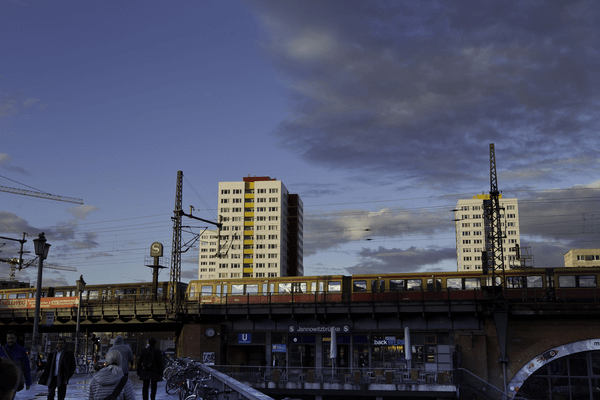
What is a Green City?
SDG 11 defines sustainable cities as those dedicated to achieving green sustainability, social sustainability, and economic sustainability. In this essay, author Paul James outlines the origins of the ‘Green City’ concept and the urgent need for cities to embrace positive sustainability measures.
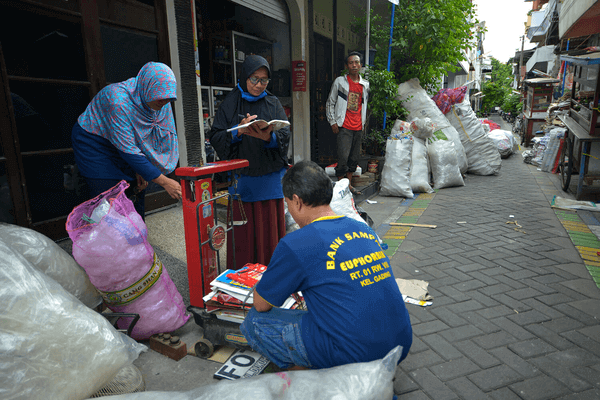
five approaches to
Circular economy.
The 3R principle is being enthusiastically embraced by both local governments and citizens.
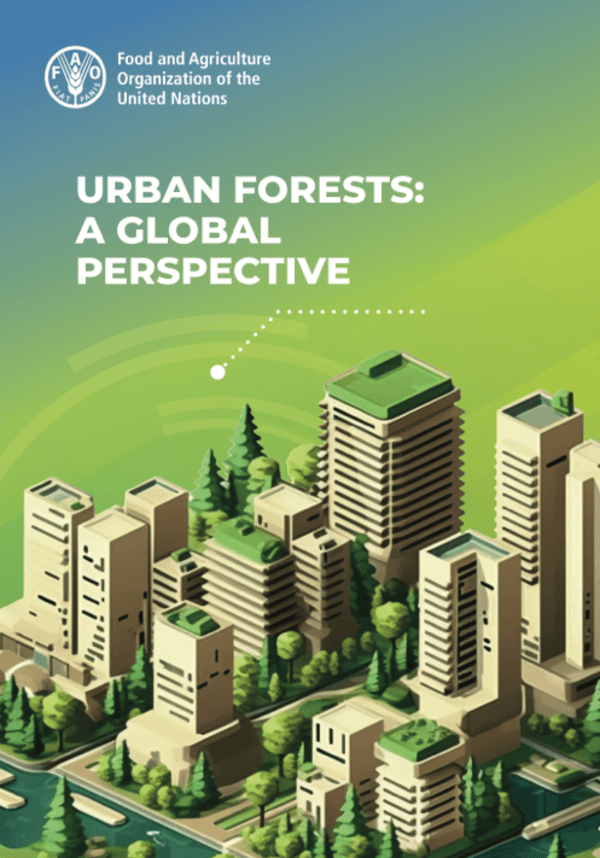
Urban Forests: a global perspective
Guideline to support Subnational Development
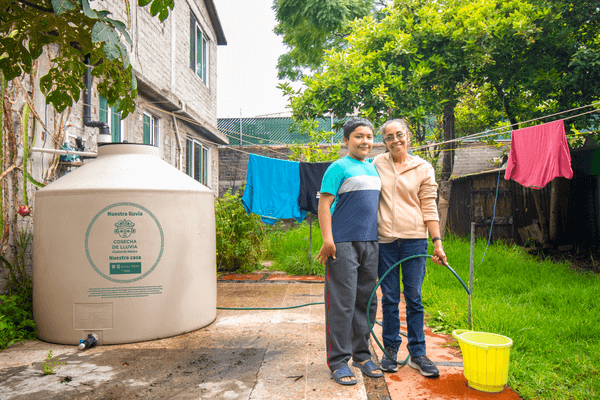
Mexico City, Mexico
Rainwater harvesting program - cosecha de lluvia.
Improving water supply in areas with high rates of economic marginalization and water scarcity.
More related articles
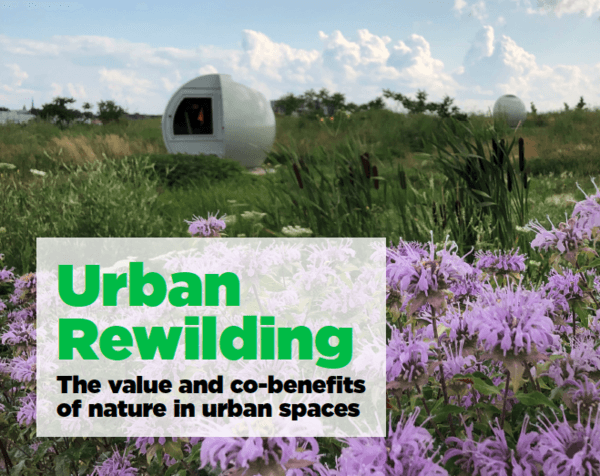
Urban Rewilding
The value and co-benefits of nature in urban spaces
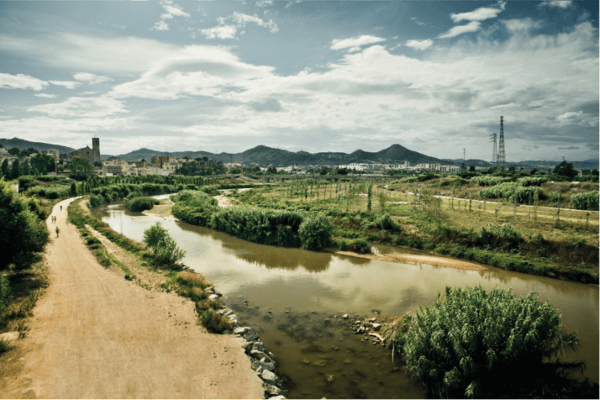
Barcelona (área metropolitana), Spain
Llobregat&co.
Promoting nature-based solutions through collaboration and gamification
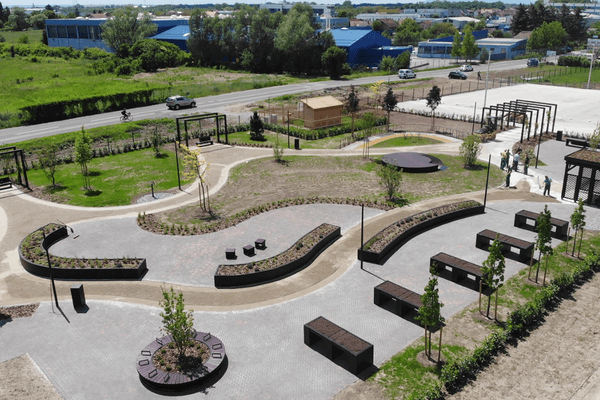
Zagreb, Croatia
Therapeutic garden.
Transforming a brownfield site into a sustainable, inclusive garden for community well-being.
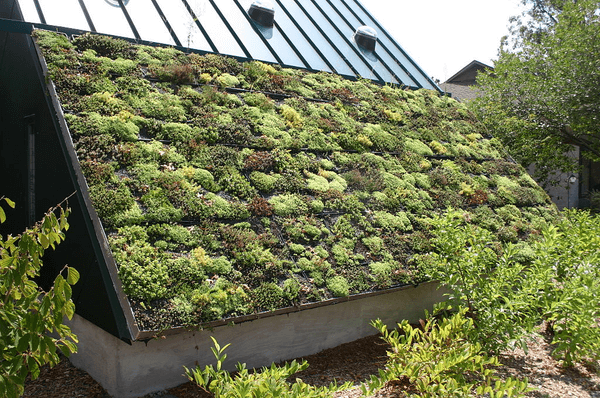
Nature-based Solutions
Read what five local governments are doing to advance Nature-based Solutions in their cities.
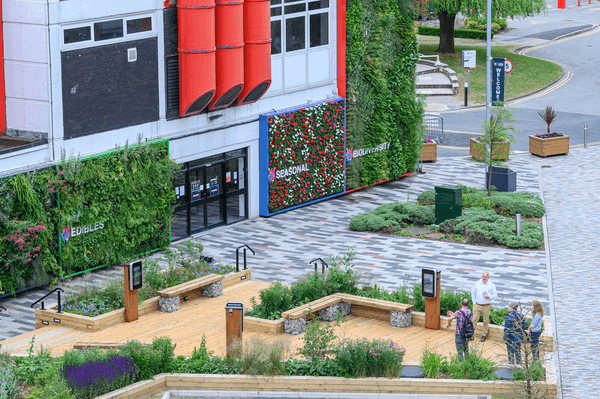
Greater Manchester, United Kingdom
The ignition project.
Increasing green infrastructure in Greater Manchester to help stop the effects of climate change.

Collaborating with Indigenous Communities to Ad...
Take this free course at your own pace with interactive lessons delivered to your inbox
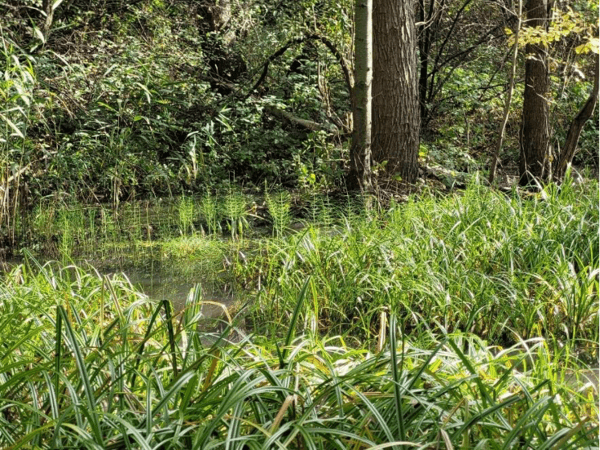
Kraków, Poland
Drwinka river park.
Addressing Urban forest management challenges in a complex setting
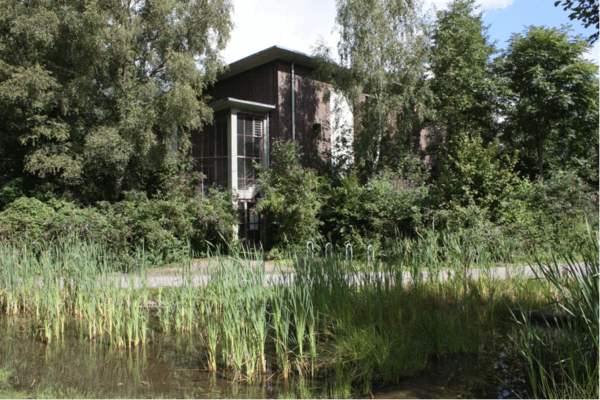
Gelsenkirchen, Germany
Industrial forest project ruhr area.
Urban regeneration of industrial sites to improve nature conservation and socio-cultural integration.
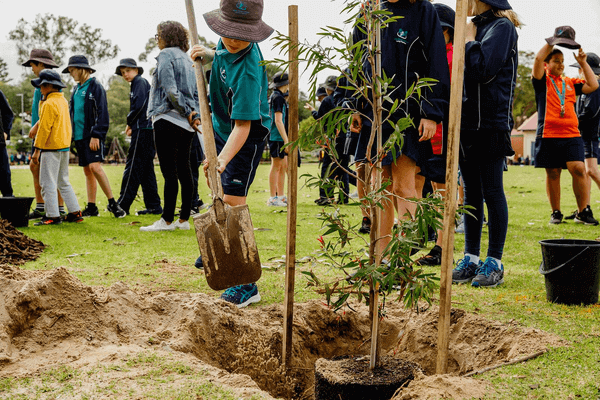
'Act Local, Contribute Global'
The Town of Victoria Park's Dynamic Initiative for Global Biodiversity Conservation
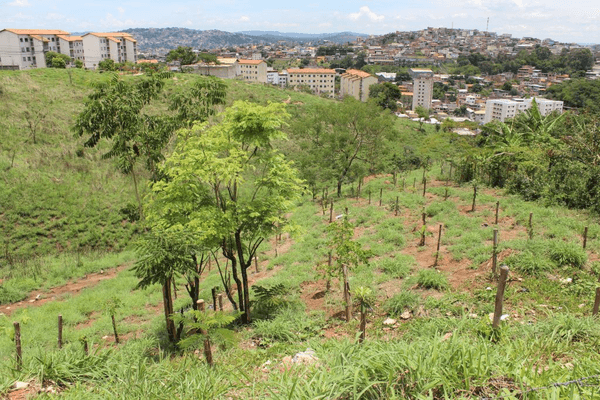
Belo Horizonte, Brazil
Urban agroforestry.
Building community agroforests to ensure food security for citizens.

Biofactory of Ladybugs
Using predatory insects to promote biodiversity and safeguard human wellbeing.
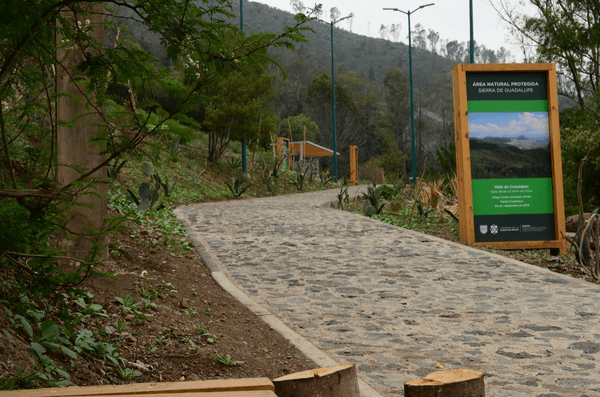
Rehabilitation of Sierra de Guadalupe Natural P...
A project to reduce the environmental deterioration of the city's Natural Protected Areas
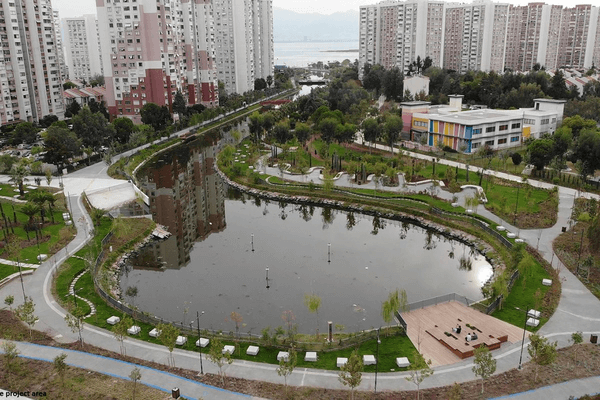
Izmir, Turkey
Peynircioglu stream ecological restoration project.
Implementing nature-based solutions to improve the city’s environment and economy.
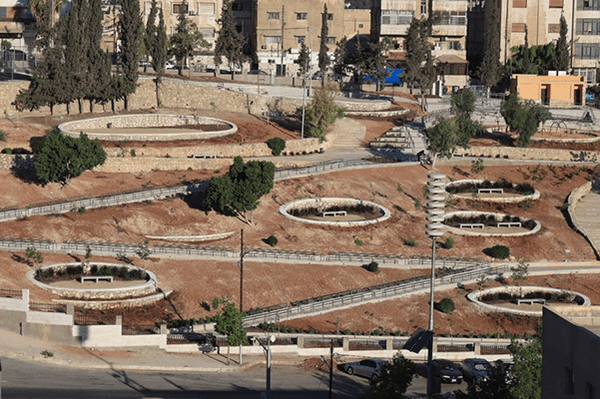
Amman, Jordan
Improving living conditions in poverty stricken....
Citizen participation in greening East Amman
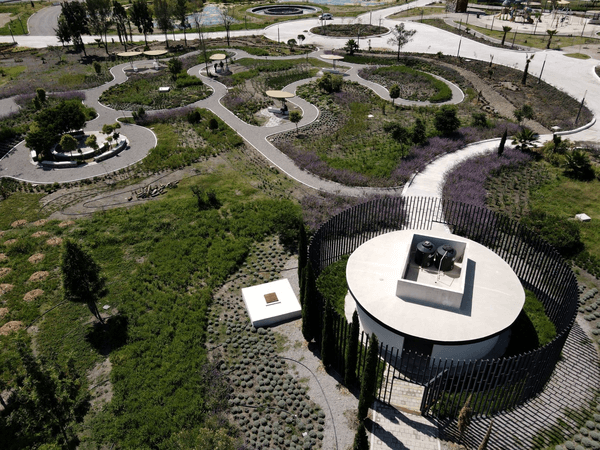
Cuitláhuac Park
Transforming marginalized city areas into green spaces that foster social, economic, and environmental growth
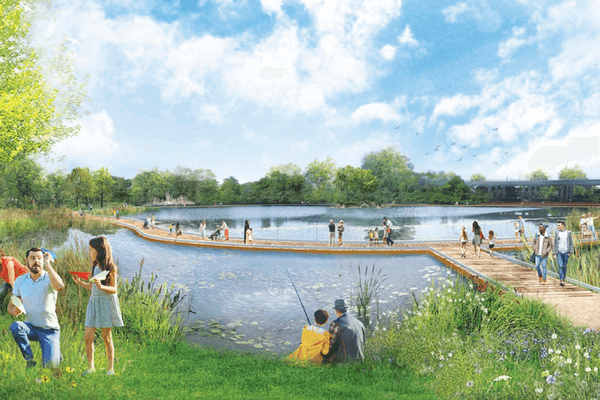
Montréal, Canada
Parc jean-drapeau.
The 2020-2030 Master Plan for Conservation, Improvement and Development of the Oldest and Largest Urban Park in Montréal, Canada
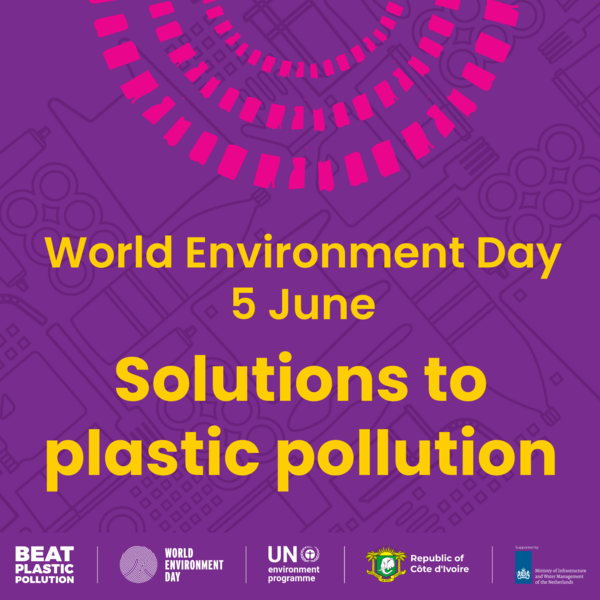
World Environment Day 5 June 2023
It's time for change.
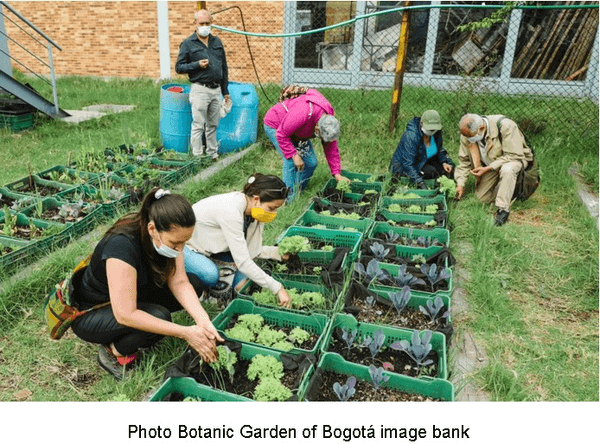
Bogotá, Colombia
Greening bogotá.
Implementing urban agriculture practices to tackle food insecurity
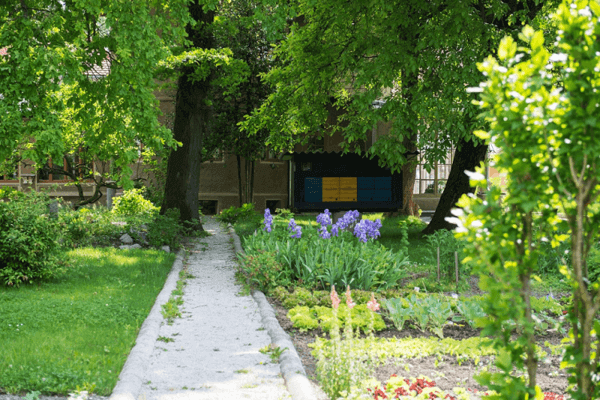
Ljubljana, Slovenia
Ljubljana’s bee path.
The Bee Path promotes public awareness of how significant bees are to food sovereignty, biodiversity and the long term sustainability of the city.
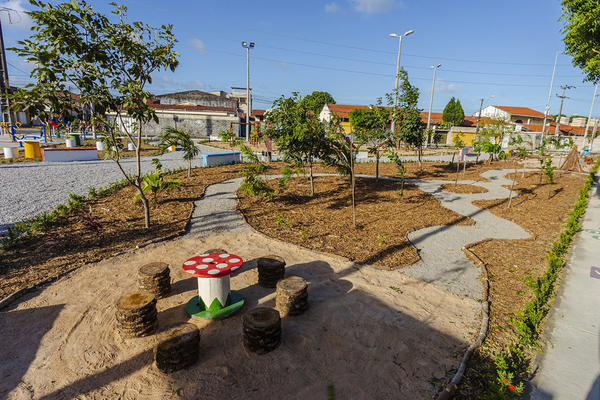
AIPH Green City Briefings
A webinar series featuring cities around the world that demonstrate significant progress in including plants and nature in their city’s form and function
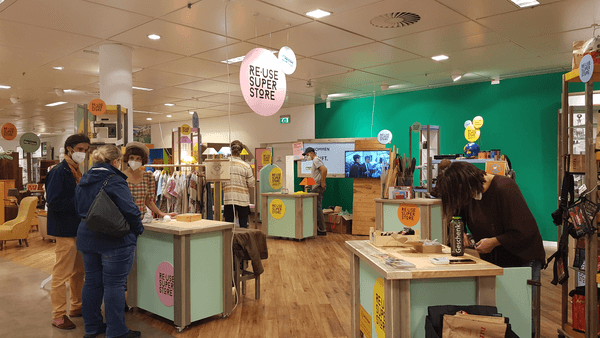
Berlin, Germany
Re-use berlin.
Improving the appeal of buying and donating quality second hand goods.
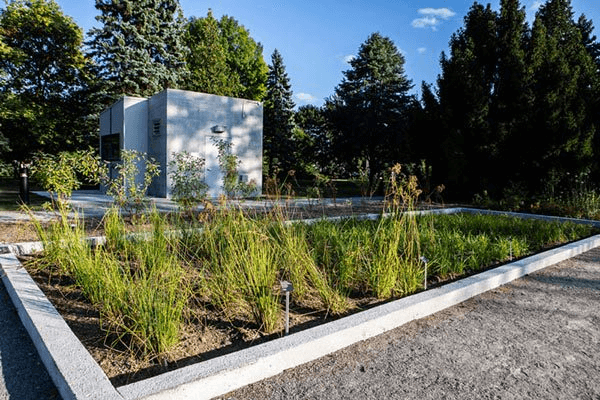
Phytotechnology Stations
Harnessing the power of plants to address environmental issues, demonstrate innovative technological solutions, and educate the public.
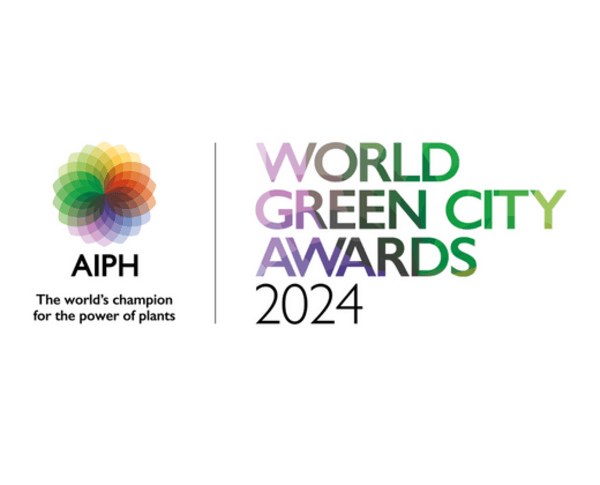
AIPH World Green City Awards
Register your interest in the World Green City Awards 2024
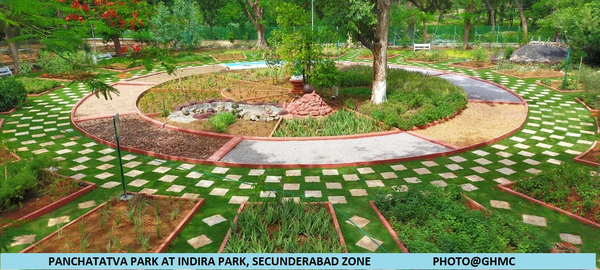
Hyderabad, India
Green garland to the state of telangana.
Increasing urban green cover to reduce air, noise and water pollution
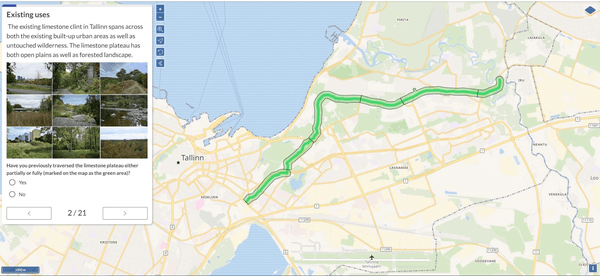
Tallinn, Estonia
The klindi park project.
Community engagement in green mobility infrastructure planning
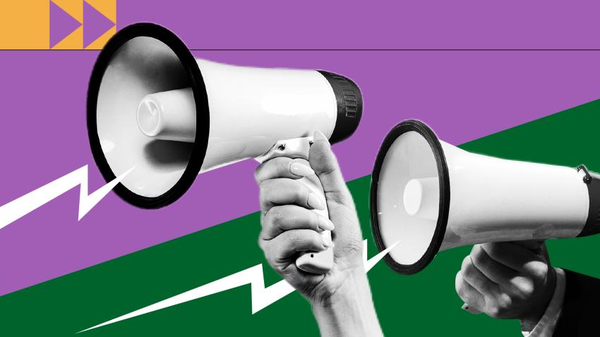
Communicating on Climate Change
Mobilizing audiences to take action on the climate crisis
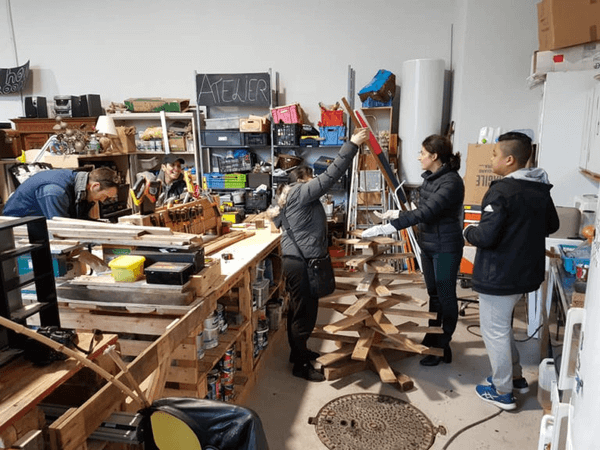
Nice, France
La recyclerie des moulins.
Using a circular economy model to increase environmental protection and resource efficiency
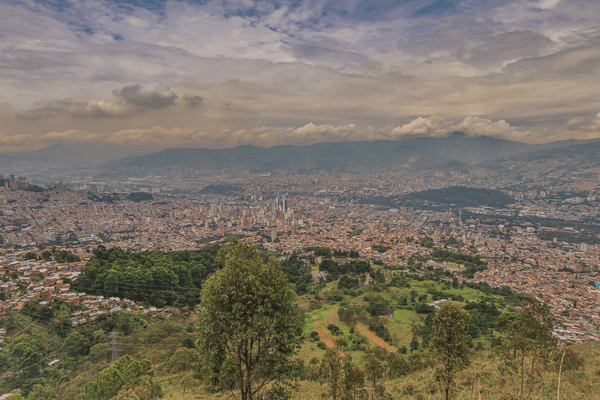
Valle de Aburrá, Colombia
Parches verdes – lungs for life.
An active restoration program to improve ecosystem connectivity
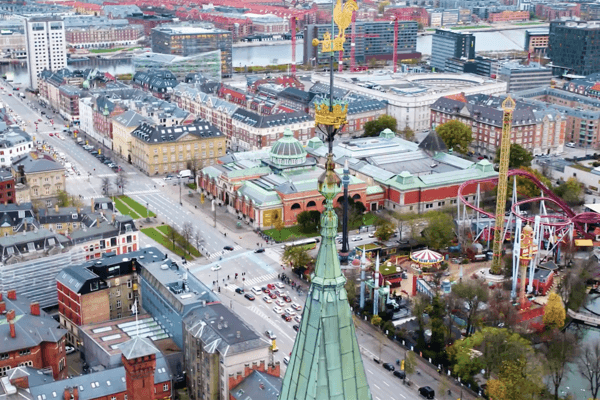
Copenhagen, Denmark
Cloudburst initiative copenhagen.
Climate adaptation and environmental improvements through nature-based solutions
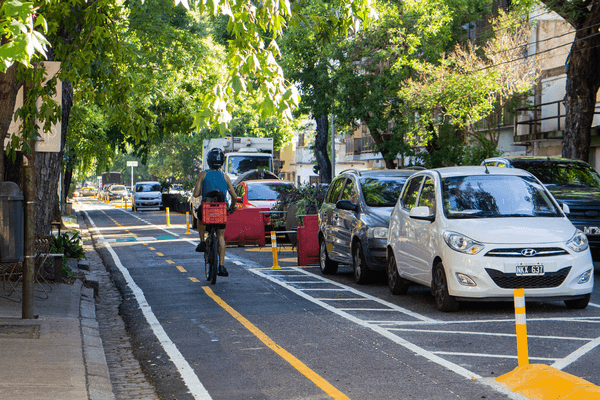
Buenos Aires, Argentina
Reorganizing public space to increase the role ....
The Covid-19 pandemic highlights the need for bike-friendly cities.
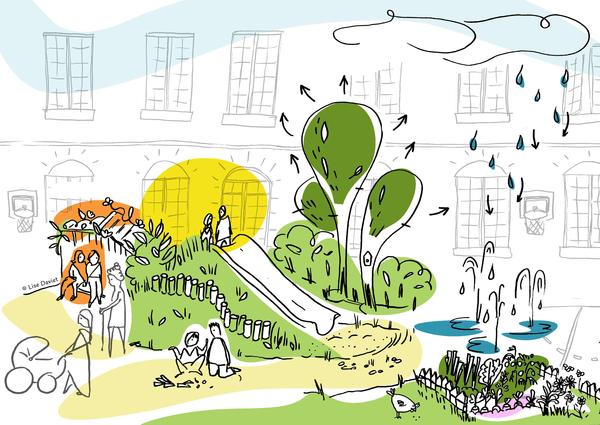
Paris, France
The oasis schoolyards project.
A driver for health and wellbeing, social inclusion, and climate adaptation
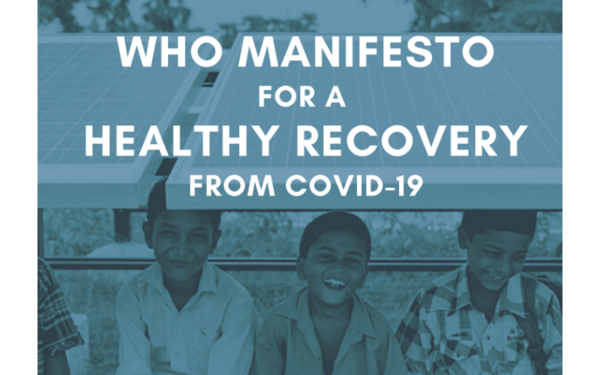
A Healthy Recovery from COVID-19
Prescriptions and Actionables for a Healthy and Green Recovery
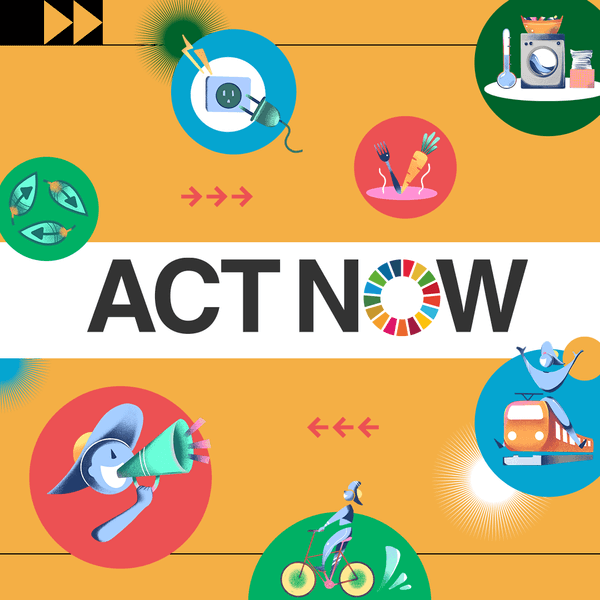
Act Now - towards a net zero future!
To preserve a liveable climate, greenhouse-gas emissions must be reduced
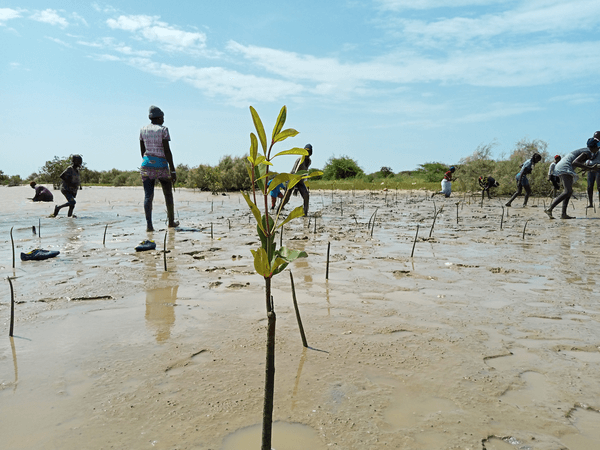
Department of St. Louis, Senegal, Senegal
Securing the future of mangroves.
Inter-municipal approach for the protection and enhancement of the Mangrove ecosystem
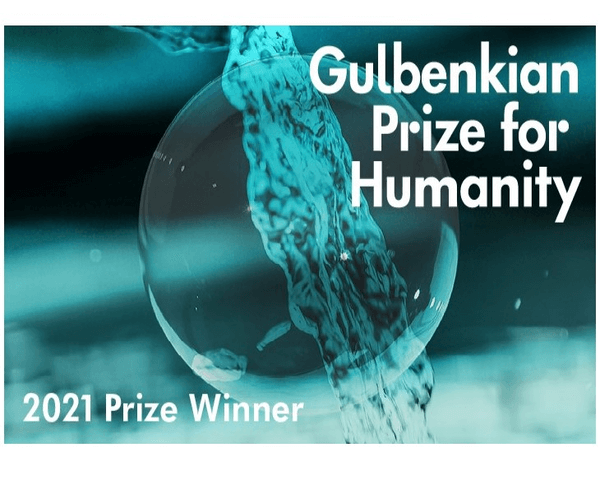
Global Covenant of Mayors receives Gulbenkian P...
Global Covenant of Mayors is recognised for its action for the climate
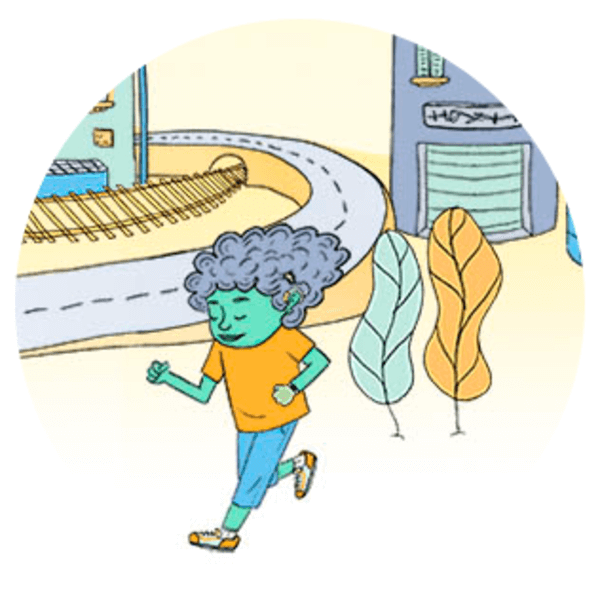
World Metropolitan Day
Resilience for all: creating metropolises beyond COVID-19.
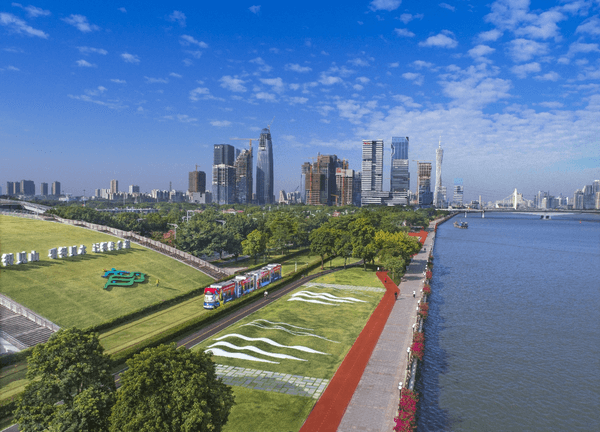
Guangzhou, China
Guangzhou ecological belt master plan.
A blue-green infrastructure network to improve the environment

Japan Study Tour 16-22 January 2022
Applications are now open!
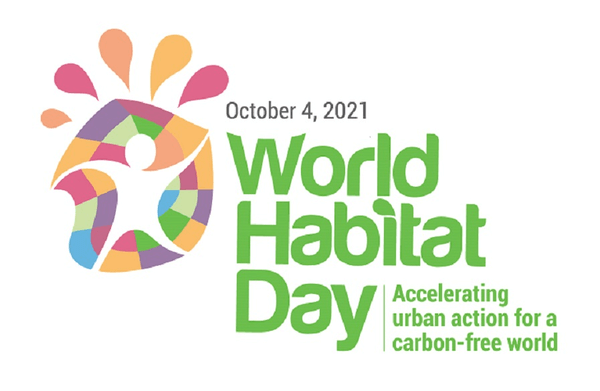
World Habitat Day
Accelerating urban action for a carbon-free world
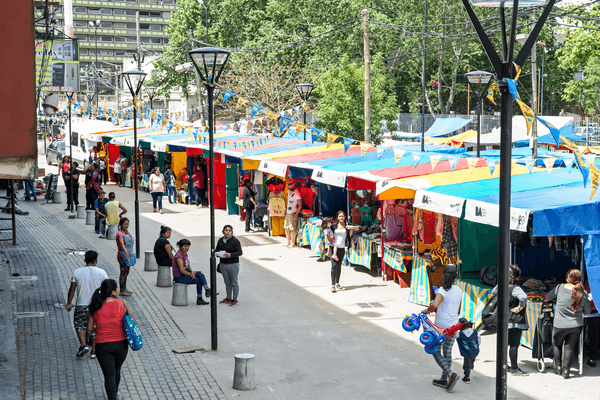
use:revisited
Use:revisited with diego fernández.
In this interview, Diego Fernández shares his personal insights on the Social and Urban Integration in Barrio Mugica project and report.
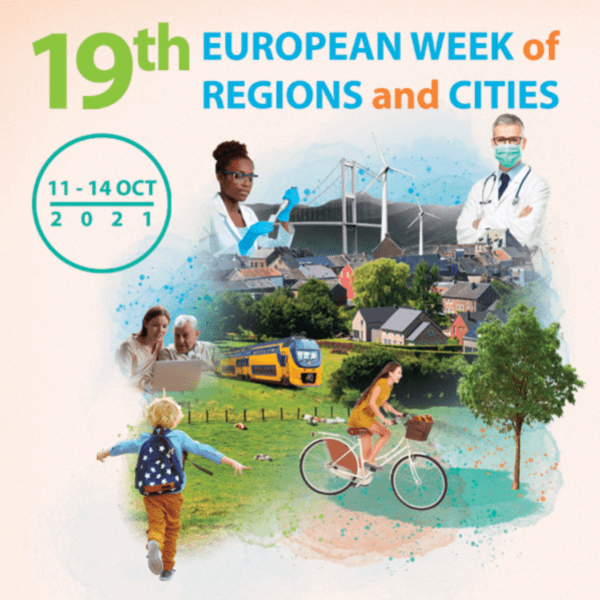
European Week of Cities and Regions - October 1...
The 19th edition of the European Week takes place from October 11-14, 2021
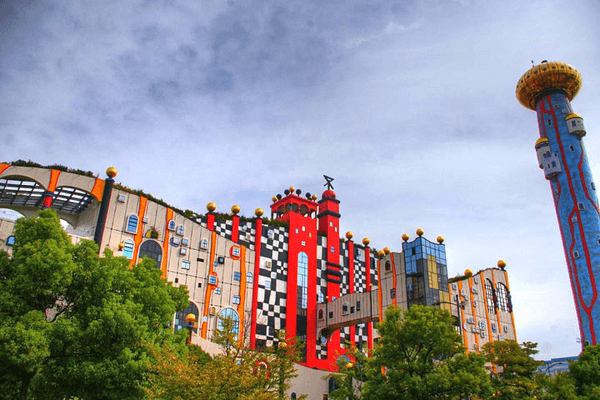
Data4CITIES initiative
Smart use of data for climate protection
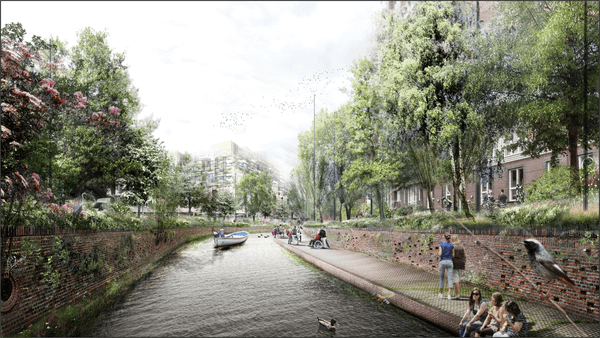
Breda, Netherlands
Urban river regeneration through nature inclusive quays
Sustainable Energy initiatives
By 2030, ensure universal access to affordable, reliable and modern energy services for all.
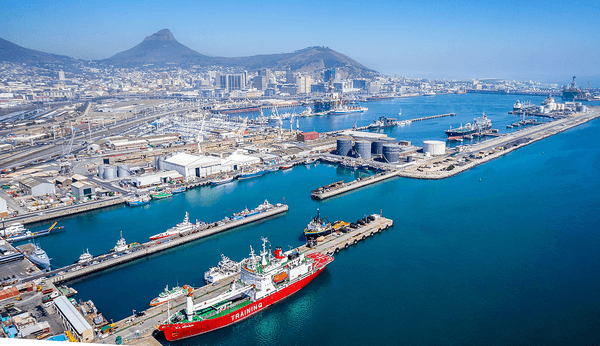
Cape Town, South Africa
Western cape industrial symbiosis programme.
Building resilience by improving resource efficiency, stimulating economic growth and job creation.
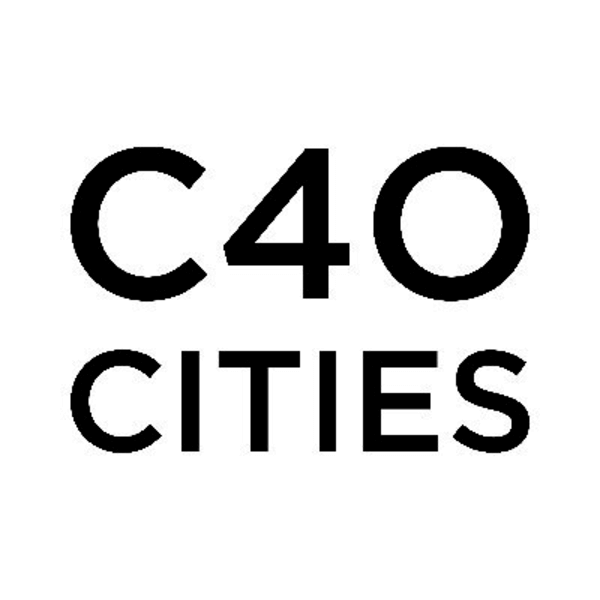
The Case for a Green and Just Recovery
A recovery based on the principles of a Global Green New Deal

Decade of Ecosystem Restoration (2021-2030)
Ecosystems support all life on Earth. The healthier our ecosystems are, the healthier the planet and its people.
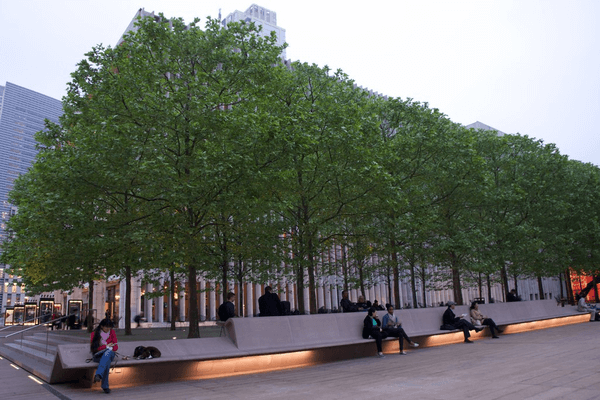
Cities Race to Zero
Join The Race!
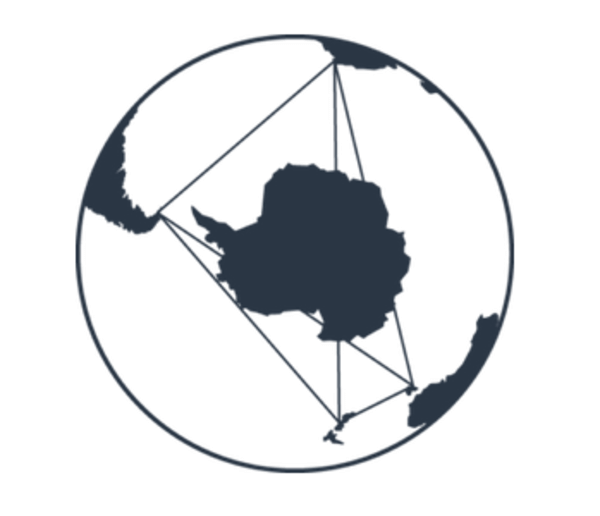
Antarctic Futures
#thereisnoplanetb
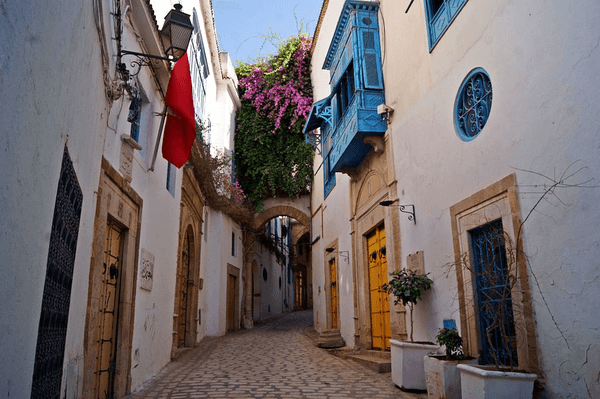
Tunis, Tunisia
Tunis cultural policy.
The City of Tunis considers culture to be a social need, differentiating it from entertainment.
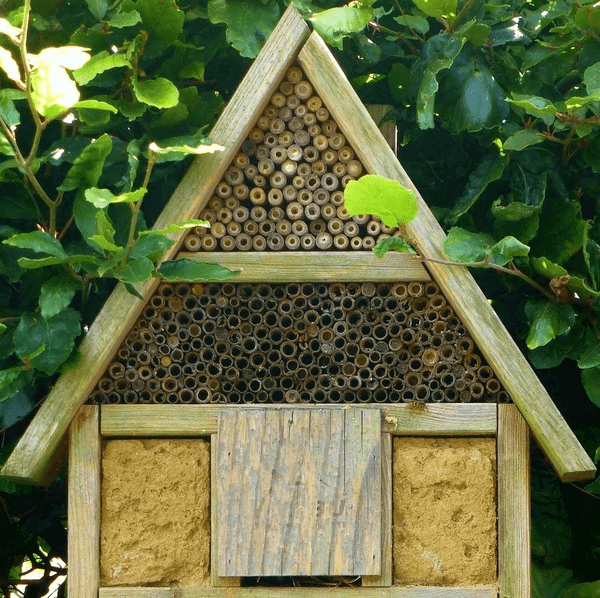
Biodiversity conservation
Nature is critical to our survival: it provides us with oxygen, regulates weather patterns, pollinates crops and produces food, feed and fibre.
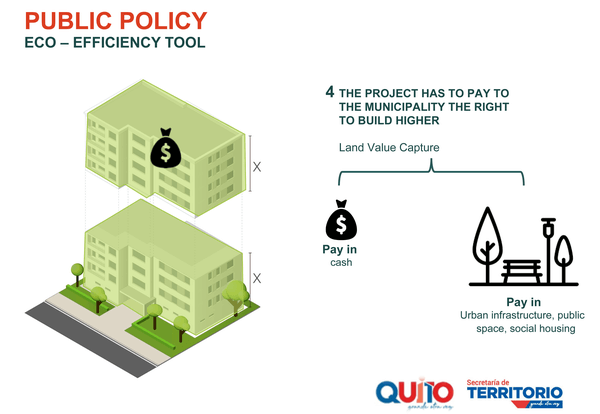
Quito, Ecuador
Eco efficiency policy.
Building a sustainable city around the existing public transport system
Sustainable Water Management
By 2030, ensure availability and sustainable management of water and sanitation for all.
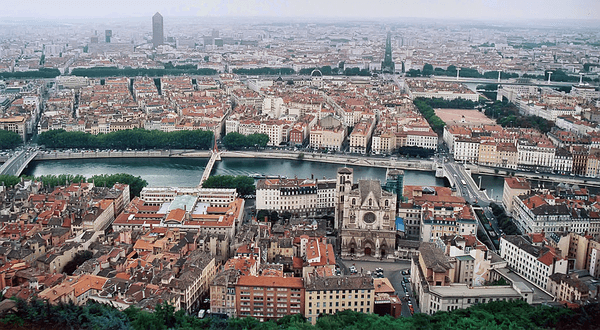
Grand Lyon, France
Climate, air and energy territorial plan.
A collaborative roadmap for sustainable development
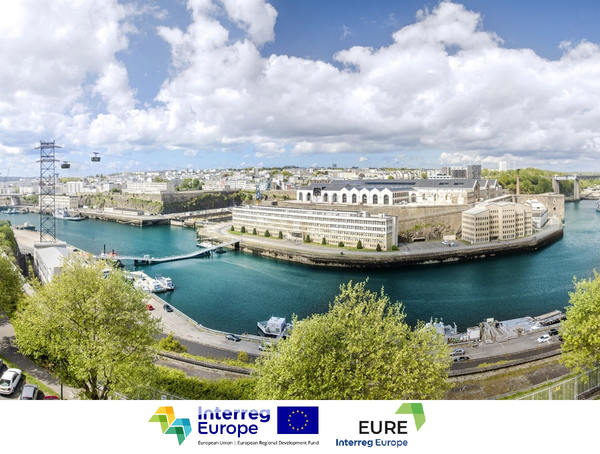
Brest, France
The capucins eco-district.
The Urban renewal of an industrial heritage site.
Thank you for visiting nature.com. You are using a browser version with limited support for CSS. To obtain the best experience, we recommend you use a more up to date browser (or turn off compatibility mode in Internet Explorer). In the meantime, to ensure continued support, we are displaying the site without styles and JavaScript.
- View all journals
- Explore content
- About the journal
- Publish with us
- Sign up for alerts
- BOOK REVIEW
- 19 February 2024
Greener cities: a necessity or a luxury?
- Timon McPhearson 0
Timon McPhearson is an urban ecologist and director of the Urban Systems Lab at the New School, New York City.
You can also search for this author in PubMed Google Scholar
The Living City: Why Cities Don’t Need to Be Green to Be Great Des Fitzgerald Basic Books (2023)
Access options
Access Nature and 54 other Nature Portfolio journals
Get Nature+, our best-value online-access subscription
24,99 € / 30 days
cancel any time
Subscribe to this journal
Receive 51 print issues and online access
185,98 € per year
only 3,65 € per issue
Rent or buy this article
Prices vary by article type
Prices may be subject to local taxes which are calculated during checkout
Nature 626 , 713-715 (2024)
doi: https://doi.org/10.1038/d41586-024-00477-y
McPhearson, T., Kabisch, N. & Frantzeskaki, N. (eds) Nature-Based Solutions for Cities (Edward Elgar Publishing, 2023).
Google Scholar
Keeler, B. L. et al. Nature Sustain. 2 , 29–38 (2019).
Article Google Scholar
Dodman, D. et al. in Climate Change 2022: Impacts, Adaptation and Vulnerability. Contribution of Working Group II to the Sixth Assessment Report of the Intergovernmental Panel on Climate Change (eds Pörtner, H.-O. et al. ) Ch. 6 (Cambridge Univ. Press, 2023).
Andersson, E. et al. AMBIO 43 , 445–453 (2014).
Article PubMed Google Scholar
Download references
Competing Interests
The author declares no competing interests.
Related Articles

- Sustainability
- Climate change
Real-world plastic-waste success stories can help to boost global treaty
Correspondence 14 MAY 24
Inequality is bad — but that doesn’t mean the rich are

Diana Wall obituary: ecologist who foresaw the importance of soil biodiversity
Obituary 10 MAY 24

US halts funding to controversial virus-hunting group: what researchers think
News 16 MAY 24

A DARPA-like agency could boost EU innovation — but cannot come at the expense of existing schemes
Editorial 14 MAY 24

Forestry social science is failing the needs of the people who need it most
Editorial 15 MAY 24
2023 summer warmth unparalleled over the past 2,000 years
Article 14 MAY 24
Finding millennia-old ‘monumental’ corals could unlock secrets of climate resilience
Correspondence 07 MAY 24
Research Associate - Metabolism
Houston, Texas (US)
Baylor College of Medicine (BCM)
Postdoc Fellowships
Train with world-renowned cancer researchers at NIH? Consider joining the Center for Cancer Research (CCR) at the National Cancer Institute
Bethesda, Maryland
NIH National Cancer Institute (NCI)
Faculty Recruitment, Westlake University School of Medicine
Faculty positions are open at four distinct ranks: Assistant Professor, Associate Professor, Full Professor, and Chair Professor.
Hangzhou, Zhejiang, China
Westlake University
PhD/master's Candidate
PhD/master's Candidate Graduate School of Frontier Science Initiative, Kanazawa University is seeking candidates for PhD and master's students i...
Kanazawa University
Senior Research Assistant in Human Immunology (wet lab)
Senior Research Scientist in Human Immunology, high-dimensional (40+) cytometry, ICS and automated robotic platforms.
Boston, Massachusetts (US)
Boston University Atomic Lab
Sign up for the Nature Briefing newsletter — what matters in science, free to your inbox daily.
Quick links
- Explore articles by subject
- Guide to authors
- Editorial policies

Visitors peer over Dubai from an observation deck at the Burj Khalifa, the world’s tallest skyscraper at 2,717 feet (828 meters). Dubai aims for superlatives: It's now racing to become one of the planet’s most sustainable cities. The emirate will showcase its efforts as host of Expo 2020, also known as the world’s fair, a six-month exhibition with sustainability as one of its themes.
The World's Most Improbable Green City
A decade ago Dubai had one of the largest ecological footprints of any city in the world. By 2050 it wants to have the smallest. Can it get there?
To plunge headlong into the audacity of Dubai —the sprawling efflorescence of concrete, glass, and steel that has sprung up over the past three decades on the scorched sands of Arabia—you could start by going skiing. Smack in the middle of the flat city, the slope looks like a silver spaceship impaled in the ground floor of the Mall of the Emirates. Inside, you can window-shop at Prada, Dior, and Alexander McQueen before pushing through the glass doors of Ski Dubai . Passing a mural of the Alps, you zip up your parka, pull on your gloves. You begin to marvel then at what air-conditioning can do, when pushed to its limits.
The souvenir T-shirt I bought bears a cartoon of a Celsius thermometer. “I went from +50 to -8,” it said. It didn’t feel quite as cold as minus eight (14°F) on the slope, but the temperature outside can get close to 50 (122°F) in summer. The humidity is stifling then, because of the proximity of the sea. Yet it rarely rains; Dubai gets less than four inches a year. There are no permanent rivers. There is next to no soil suitable for growing crops.
What kind of human settlement makes sense in such a place? For centuries Dubai was a fishing village and trading port, small and poor. Then oil and a wild real estate boom transformed it into a city that sports the world’s tallest building, one of its densest collections of skyscrapers, and its third busiest airport. “From the point of view of sustainability you probably wouldn’t have done it here,” says Janus Rostock , a prominent architect transplanted from Copenhagen.

Ski Dubai is the Middle East’s only indoor ski park, and often viewed as an emblem of the city's resource footprint. Emiratis typically learn the sport on one its five runs, which vary in difficulty, before heading to alpine resorts abroad. An even larger slope will open in 2020.
And yet a sustainable city is precisely what Dubai’s government says it aims to create.
Sustainable? Dubai? When camels fly, you might say. The boom years made the city a poster child for the excess that results when cheap energy meets environmental indifference. Indoor skiing is just a symbol: Dubai burns far more fossil fuel to air-condition its towers of glass. To keep the taps running in all those buildings, it essentially boils hundreds of Olympic pools worth of seawater every day. And to create more beachfront for more luxury hotels and villas, it buried coral reefs under immense artificial islands.
In 2006 the World Wildlife Fund (WWF) declared the United Arab Emirates the country with the largest ecological footprint, per capita , largely because of its carbon emissions. The shoe certainly fit Dubai, the most conspicuous consumer among the seven emirates. In the decade since, the city’s population has doubled, to more than 2.8 million. The number of cars on its roads has more than doubled. A surprising number are Bentleys, Lamborghinis, and other gorgeous gas hogs.
For Hungry Minds
And yet, something else has happened since 2006: Dubai has started to change.

Even CSAs have made inroads in the desert city, which imports 80 percent of its food. Ripe Market hosts a weekly stand at Zabeel Park to serve the rising tide of consumers seeking organic produce from local farms. Food banks have made inroads too, providing an outlet for tackling Dubai's leftovers: About 38 percent of the food prepared each day is wasted, which jumps to 60 percent during Ramadan.

On one of Zabeel's 117 acres, yoga classes draw the city’s expats—90 percent of its population. Parks come at a premium, but Dubai is expanding its green space. The 350-acre DubaiLand, under way, features 55 playgrounds and paths for walking, running, and cycling.
Gleaming driverless metro trains now run the length of the linear city, alongside Sheikh Zayed Road, carrying about as many people, and often faster, as the cars on that clogged 12-lane artery. On Dubai’s southern outskirts, a new housing development has opened—called Sustainable City —that recycles its water and waste and produces more energy than it consumes. Further out in the desert, Dubai is building a giant solar power plant that will soon be producing some of the cheapest and cleanest electricity on Earth.
“The leadership has recognized that the growth of the economy is not sustainable without taking action on emissions,” says Tanzeed Alam, climate director for the Emirates Wildlife Society , WWF’s local partner.
In Dubai, the “leadership” is His Highness Sheikh Mohammed bin Rashid Al Maktoum, the 67-year-old hereditary emir, aka the Ruler. Sheikh Mohammed took over in 2006. He has decreed that his city will get 75 percent of its energy from clean sources by 2050. He wants it to have the smallest carbon footprint in the world. Many people I met on a recent visit to Dubai, including Rostock and Alam, believe the city might actually pull that off.
And if it can happen here, they say, it can happen anywhere.

Echoes of Old Dubai linger around the Creek, the harbor where the city was born. The atmospheric area houses the offices of the emirate’s ruling sheikh and dozens of foreign consulates. Dhows still ply its waters for tourism and trade.
Survival Instincts
Two places on Dubai’s 40-mile-long coast frame its astonishing trajectory.
The first is Jebel Ali, home to a busy man-made port as well as an enormous industrial plant belonging to Dubai Electric and Water Authority (DEWA). It produces most of the city’s electricity and drinking water in the same process: Natural gas, mainly from Abu Dhabi and Qatar, is burned to generate electricity, and the leftover heat is used to distill seawater and remove the salt. As Dubai has grown, the plant has kept adding new modules, and it’s now a mile-long line of candy-striped smokestacks and evaporator tanks. It can produce nearly 10 gigawatts of electricity and half a billion gallons of desalinated water a day.
The second place is in what’s left of Old Dubai, on what’s called the Creek — actually a saltwater inlet. One of the few natural harbors on this coast, the Creek is why Dubai exists at all. Beat-up wooden dhows from another century still line up to be loaded with refrigerators and air-conditioners from South Korea, which they will deliver across the Gulf to Iran. Near the mouth of the Creek is the house where Sheikh Mohammed spent his childhood.
The house belonged to his grandfather, who was then the Ruler. (The Al Maktoums have ruled Dubai since 1833.) Though large, it was hardly a palace. It had neither running water nor electricity. Dubai didn’t get electricity, or its first paved road, until 1961. Running water arrived a few years later. Mohammed grew up by lamplight, in a place where water was delivered by donkey cart, in barrels filled at one of the village’s wells.
In a single generation, Dubai exploded from humble port to metropolis. Electricity and paved roads arrived in 1961. Oil funded expansion in the 1970s. The building boom—including artificial islands—accelerated in the 2000s. The pace has slowed since the 2008 financial crisis, but Dubai continues to rise up and out.
His father, Rashid, had grown up in the same house. In the 1930s he saw people in Dubai starve; the global depression and the invention of artificial pearls had destroyed the market for pearl diving, which was then Dubai’s main enterprise. It was Rashid who began to modernize—and diversify—Dubai, after he took over as ruler in 1958, and especially after the proceeds of oil began to materialize in the late 1960s. He built roads, schools, an airport, and in 1979, a 39-story World Trade Centre, at the time the tallest building in the Middle East.
“It was built in the middle of nowhere, on the edge of the city,” says Neil Walmsley, a British engineer who has been in Dubai since 2005 and is director of urban planning for Arup , a consulting firm. “It was a vote of confidence. The city responded by growing towards it”—and then well past it. Dubai was not a center of world trade when Rashid built his centre, but it is now. When he dug a giant new port at Jebel Ali, having already dredged the Creek, even his sons were baffled by his optimism. Now that port is one of the world’s busiest.
The pearl business hadn’t lasted forever, and Rashid knew he couldn’t count on the oil. Dubai had never had more than a small fraction of what Abu Dhabi had. There’s a saying attributed to Rashid: His father and grandfather rode camels, while he himself drove a Mercedes, and his son, a Land Rover. His grandson would drive a Land Rover too—but his great grandson might ride a camel again.
Unless, that is, the Al Maktoums played their cards right. In Dubai, that’s the first meaning of “sustainability”: finding a way to wring a good living from a hard place, ideally without having to rely on camels again. Worrying about your footprint comes later.

Tourism fuels Dubai’s economy, and many of its 15 million annual visitors flock to the Burj Khalifa for a bird’s-eye view, here from the 125 th floor. The building is home to an Armani-designed hotel, 900 apartments, office space, restaurants—and to more energy-efficient systems. Solar panels heat its water supply; condensate from air-conditioning is reclaimed to cool potable water and to keep the tower’s landscaping green—about 15 million gallons a year are collected.
Toward a New Golden Age?
The Burj Al Arab , or Tower of the Arabs, was one of the first of many Dubai landmarks that Sheikh Mohammed commissioned, even before he was Ruler, in the 1990s. It’s a luxury hotel built on an artificial island. As Jim Krane tells the story in Dubai: The Story of the World’s Fastest City , the hotel could have been built on the mainland, but Mohammed and the architect decided it would make a more memorable addition to the skyline if it stood just offshore. And they were right: Shaped like a three-cornered sail rising off the sea, it’s now an icon.
Arab merchants pioneered the use of the three-cornered lateen sail more than a millennium ago. As Sheikh Mohammed tells that story in his own book, My Vision, the new sail helped Arab dhows outdistance their square-sailed competitors. It symbolizes his aspiration for Dubai: to be the first, the best, the smartest, the fastest—to win the race against its global competitors, not just for its own sake but for the whole Arab world. He wants to make Arabs pioneers again, the way they were in the Middle Ages .
Dubai has no income tax or sales tax, and that has long made it attractive to foreigners. But in the early 2000s, it began for the first time to allow them to own property. Waves of cash flooded into Dubai real estate from Russia, from Iran, from the Arab world—from investors anywhere who were looking for a safe haven. Combined with a law that grants each Emirati citizen a plot for his own villa, it led to a surge in development. Four large developers, three of them controlled by the state, were granted great plots of land. Workers streamed in from South Asia to build new skyscrapers for the affluent. They themselves lived in camps that were often squalid, in conditions that some said resembled indentured servitude. ( Read an in-depth report on Dubai’s guest workers .)

Dubai’s dozen golf courses rely on precious water resources. To keep fairways—and its practices—green, the Dubai Creek Golf & Yacht Club, which features an island tee box, began irrigating with treated sewage effluent in 2010.

About 30 miles outside Dubai, man-made Al Qudra Lake draws recreational riders, picnicking families, and migratory birds—more than 175 species have been recorded. But popularity has left a trace: Trash is routinely tossed in the lake. The municipality has responded with more bins and an anti-litter campaign.
The city exploded down the coast. The Dubai Marina , a dense forest of more than a hundred 40-story apartment buildings, sprung up out of nothing, to be inhabited only by expats, some of them for only part of the year. The city also pushed inland into the desert, with new villa developments for Emiratis and foreigners.
“When you look at how Dubai has been growing, it’s just been this obsession with building outward into the desert,” says Yasser Elsheshtawy , an Egyptian architect who has taught at the university in Al Ain for 20 years. “There were no limitations. Energy was cheap. You had cars. So why not?”
The more compelling question is why Dubai would ever change. What could prompt a Ruler with a deep drive for economic growth—who had ordered up not only a sail-shaped tower but also a skyscraper as tall as the Sears Tower with the Eiffel on top, and not only three palm-shaped artificial peninsulas jutting miles into the sea but also an archipelago of 300 islands shaped like countries and arranged in a map of the world—to develop an interest in photovoltaic panels, low-flow faucets, and walkable neighborhoods?

Mediterranean-themed Mercato Mall competes with three megamalls, and more are planned. But even Dubai may have reached its limit: A new report suggests the once booming retail market may be approaching saturation.
Crisis: “The Best Thing To Happen”
In 2008 and 2009, with the global economy on the edge of collapse, tourism plummeted in Dubai. Real estate prices fell 50 percent, oil even more. Dubai had to be bailed out of debt by Abu Dhabi. But it also got a chance to take stock.
“The economic crisis was the best thing that happened to us—a blessing in disguise,” says Habiba al Marashi, founder of the Emirates Environmental Group , an organization that attempts, through education and recycling, to promote environmental responsibility. ““It slowed down the crazy pace of construction.”
As the city drew its breath, three factors combined to pave the way for a new focus on sustainability, says Dubai-based energy consultant Robin Mills. The first was Masdar City , a project launched in neighboring Abu Dhabi in 2006. Billed as the world’s first zero-carbon city and designed by the firm of star British architect Norman Foster , it was intended to be car free—driverless pods would ferry residents around—and to produce all its electricity with solar power.
Though the financial crisis put a crimp in Masdar City’s ambitions too, it's now expanding around its compact urban core, with a new apartment complex nearing completion and plans for 5,000 homes. And the international publicity the project received from the start helped break the resistance to green ideas throughout the UAE. When Masdar began, “it was really tough,” recalls CEO Mohamed Jameel Al Ramahi. “People didn’t want to talk about it. They said, ‘It’s too expensive! Who likes it? What’s the need?’”

On the outskirts of Abu Dhabi, about 75 miles south of Dubai, "low-carbon" Masdar City is growing, with residential developments being added to its active research center. It's also home to the International Renewable Energy Agency. The city draws on elements of traditional Arab architecture—such as a 148-foot wind tower that pushes a cooling breeze through narrow, shaded streets—but its goal is to create a more sustainable model of urban life in the region. "We're not going to be Ye Olde Arabian Town," says planning director Anthony Mallows. "We're modern. We're the future."
And yet Dubai, says Mills, was starting to feel a strong need to reduce its dependence on imported natural gas. Just before the financial crisis, when the city was at the peak of its growth, oil and gas prices were soaring. Mills, who had once been a geologist for Shell, was working on energy at Dubai Holding, a major developer in which Sheikh Mohammed holds a majority stake. “One of the issues was how Dubai was going to source the energy to power all these enormous real estate developments,” Mills says.
Meanwhile a new alternative—the third factor—was emerging. Solar power was booming in places like Germany and Spain, and prices were falling fast. In 2012 Mills wrote a report saying that solar power had become cost-competitive in the Middle East, at 12 U.S. cents per kilowatt-hour. By 2015 DEWA signed a contract for 200 megawatts worth of solar panels that would deliver power at 5.6 cents per kilowatt-hour—a world record-low. At that price, it was making a profit on solar.
“For the utility, that was a eureka moment,” says Saeed al Abbar, head of the Emirates Green Building Council . It was founded in 2006, when the boom was at its height.

At the Mohammed bin Rashid Al Maktoum Solar Park, in the desert south of Dubai, it usually rains only two days a year. Millions of thin-film solar panels spread over nearly two square miles produce 200 megawatts of electricity. The next 800 megawatts, to be installed by 2020, will deliver electricity for 2.99 U.S. cents a kilowatt-hour—a world record.
Endless Sun
By the time I visit the Mohammed bin Rashid Al Maktoum Solar Park at the beginning of February, DEWA has shattered that record: Masdar’s parent company—the largest exporter of renewable energy in the Middle East—has agreed to furnish the next 800 megawatts of power at 2.99 cents a kilowatt-hour . “Solar is clearly by far the cheapest form of electricity,” Mills says.
The site, about 30 miles southeast of the city, was chosen for its insolation, a DEWA engineer says. We climb out of the shade of a transformer building onto its roof to gaze out over the field of solar panels, slanted toward the sun. They already cover well over a square mile and produce 200 megawatts, two percent of DEWA’s total generating capacity, but there’s room for a lot more—a thousand megawatts will be here by 2020, 5,000 megawatts by 2030, DEWA says. And unlike some utilities in the United States, which see solar power as unwelcome competition, it’s also actively encouraging citizens to put solar panels on roofs.
“The solar potential is so great here,” Mills says. “Millions of acres of empty desert, and plenty of roof space. Electricity generation—for me it’s almost ‘problem solved.’”
DEWA, however, is afraid to count on any one solution, however limitless. So by 2030 it plans to get seven percent of its electricity from four nuclear power plants that Abu Dhabi is building; the first is expected to switch on this year. More troubling, DEWA is constructing a plant that will burn coal. It’ll have to be imported, probably from Australia or Indonesia. The electricity will cost 40 percent more than solar power. It makes neither environmental nor economic sense—other than as a hedge against Dubai’s nightmare, an energy shortage that might limit the growth of the city.

The compact streets of the Sustainable City (center) contrast with the adjacent neighborhood’s larger lanes, lots, and homes. The 114-acre development—inspired by Davis, California’s West Village, a net-zero energy community—is grouped into five clusters holding 500 villas, each outfitted with solar panels. About half are now occupied.

Building orientation was a critical design choice at the Sustainable City, where homes face north and shade each other. By limiting direct sun exposure, air-conditioning units are 40 percent smaller.
Building Greener
After the profligate boom years, Dubai is also attempting to restrain demand for electricity and water. Prices used to be heavily subsidized, but DEWA raised them substantially, and introduced a progressive scale that rises with consumption. Dubai residents now pay roughly as much for electricity as I pay in Washington, D.C., and about 50 percent more for water—unless they happen to belong to the 10 percent of the population who are citizens of the UAE. Citizens pay less.
New buildings in Dubai aren’t built as if energy and water are limitless, says Al Abbar. Old buildings from before the boom weren’t either: Sheikh Mohammed’s boyhood home featured thick walls, small windows, and wind towers that caught the breeze and funneled it into the shaded courtyard where he played ball. Even the World Trade Centre had deep-set windows and white walls to reflect the heat. But if you stand on its 31 st floor today, in the offices of Sheikh Mohammed’s educational foundation, you look out over a city of glass towers.
“There is an expectation from the tenants—they want to see floor-to-ceiling glass,” Al Abbar says. Developers can’t necessarily fight their clients’ desire for spectacular views, he adds; an unoccupied building is an unsustainable one.

Visitors find a lost world at the Green Planet, a biodome that shelters rain forest habitat and more than 3,000 species of plants and animals, including sloths, snakes, and exotic birds. Walkways traverse four levels. The structure itself is green, one of the city’s rising number of LEED-certified buildings.
Since the economic crisis, Dubai has tightened its green building regulations, as part of a strategy to reduce energy demand by 30 percent. New buildings must have solar water heaters, as well as operational systems that lower lights and thermostats when people are absent. To reach the city’s goal of retrofitting 30,000 older buildings, regulations allow third-party contractors to renovate buildings and take their profits from a portion of the energy savings. “What I’ve seen is a huge change,” Al Abbar says.
The city government is not just imposing rules on building owners, says the municipality’s director general, Hussain Nasser Lootah, an engineer by training. It’s also collaborating with manufacturers on rolling out efficient products for the Dubai market. Philips is making a one-watt LED bulb that will soon be in buildings across the city, Lootah says. And a new Scandinavian low-flow faucet will be installed in all the local mosques this year, inshallah . Observant Muslims practice ritual ablutions before prayer five times a day, washing face, hands, and feet. “They use too much water!” Lootah says. The new faucet delivers 40 percent of the water with 100 percent of the noise, reassuring the faithful that they’re being adequately cleansed.
Faris Saeed, developer of the Sustainable City, which stands (for now) on the edge of the sprawling and less sustainable one, traces the origin of his own project to the financial crisis. A Jordanian engineer who has lived in the UAE since 1995, Saeed runs Diamond Developers. At the height of the boom, he built six towers containing 1,300 apartments in the Dubai Marina. Those days are gone now. “We took a decision as a company that we could never go back to business as usual,” he says.

More than two million people depend on the Dubai Electricity and Water Authority plant at Jebel Ali, where natural gas is burned to produce electricity and to desalinate seawater for drinking. Much of the gas is imported. Solar energy could increase Dubai’s security—and its sustainability.

Some desalination at Jebel Ali is done by reverse osmosis: Pumps drive seawater through salt-capturing membranes inside stacked white pipes. The process is cheaper and more efficient than using heat from burning gas, and it can be powered by solar electricity. DEWA plans to scale up on that effort.
Saeed’s new development, which will eventually include a school, hotel, an “innovation center,” and a riding stable, currently consists of 500 villas on a compact 114-acre site. The L-shaped houses stand close together on narrow, verdant streets, facing north, such that they shade each other—sun falls onto the windowed facades only in the early morning and late afternoon.
That simple design choice, Saeed says, allows the air-conditioning units to be 40 percent smaller. Extra insulation, reflective windows and paint, and LED lights further cut energy consumption to around half what would be expected for a 3,000 to 4,000 square foot villa in Dubai. “It’s a myth that sustainable has to be more expensive,” Saeed says.
You May Also Like

Once the World’s Most Dangerous City, Juárez Returns to Life

10 simple ways to change your life in 2024

Are the Great Lakes the key to solving America’s emissions conundrum?
The Sustainable City produces more electricity than it consumes, thanks to solar panels that shade roof terraces and parking lots. Each roof also has a solar water heater. All waste is recycled—the organic stuff is composted and used in a series of dome-shaped greenhouses that occupy a “farm” at the center of the development. “We’re self-sufficient in herbs,” a public relations person says. For other food, residents can walk to the grocery store, just off a central plaza that will be lined with restaurants. On summer evenings they can sit and watch their children play in small squares cooled by wind towers , like the ones at Sheikh Mohammed’s boyhood home, but augmented by fans.
For this sustainable idyll, Saeed says, residents will pay no more than they would at one of the other developments nearby. He’ll even throw in a $10,000 subsidy for an electric car, which leads to the one apparent flaw of Sustainable City: It’s a longish drive from any of the multiple centers of Dubai.

At Jumeirah Beach, which faces the iconic Burj Al Arab, a solar-powered, 21-foot “Smart Palm” provides shade and much more—Wi-Fi, charging station, lamppost, bulletin board, security camera, emergency call button. Over a hundred will be installed at city beaches and parks. Wind-powered poles that will floodlight the sea—and inaugurate nighttime swimming—are coming next.
The Curse of the Grandchildren
On a wall in Lootah’s office, a framed series of aerial pictures shows how Dubai has evolved since 1935, when it was an impoverished fishing village huddled around the Creek. At the center is a visualization of the future: It shows a coast even more clogged with artificial islands and peninsulas than it is today. This city has no intention of slowing down. It lives off its expanding footprint: Nearly a quarter of the population works in construction.
Less than a decade ago, tanker trucks were pulling up to modern apartment buildings to pick up sewage, some of which was dumped illegally in the desert. Now nearly all parts of the city—all but the industrial areas and the labor camps, Lootah says—are connected by pipes to two modern sewage treatment plants. A third plant is about to open, and Lootah expects to build several more to keep up with growth. Dubai sees its population doubling, to more than 5 million, by 2030.
“When I was in the States,” Lootah says—in the late 1970s he studied in Pittsburgh, and after that proved too cold, Arizona—“people asked where you come from. ‘Emirates? Where is this? Where is Dubai?’ Now, you ask anybody: They say they love to come to Dubai!”
Lootah credits the Ruler with putting the city on the map. A large portrait of Sheikh Mohammed hangs behind Lootah’s desk, as it does in most Dubai offices. A two-story-high portrait hangs on the façade of the municipality building, alongside that of the Emir of Abu Dhabi, who is president of the UAE. (Sheikh Mohammed is vice president.)

Passengers savor a driver's-seat view on a fully automated (driverless) Dubai Metro train. A monorail, tram, hybrid trolley line, and buses round out the network in the city, where mass transit use is steadily growing. Dubai spurred others in the region—Doha (Qatar) and Riyadh (Saudi Arabia) now have metro lines under construction.
All over Dubai, from Emiratis and expats alike, I heard testimonials to the decisive leadership of Sheikh Mohammed. “We don’t have a lot of formalities,” Lootah says. “Here projects take days to be done, elsewhere years.” It’s not just the lack of red tape that speeds things up—it’s the lack of democratic institutions. Without a free press, political parties, or free elections, there’s little chance of public opposition to projects endorsed by the Ruler.
Planners of Washington, D.C.’s Metro system started sketching a Silver Line to Dulles Airport in the late 1960s; it’s still not finished. Dubai’s Red Line, of comparable length, was planned and built in less than a decade, and its first stretch opened in 2009, at the height of the financial crisis. Even sustainability mavens, aware of how much needs to change, find a lot to cheer in the can-do spirit that trickles down from the Ruler.
“This country has developed so quickly,” says Tanzeed Alam of WWF. “It can change quickly too—because the leadership gets behind it.”

Dubai’s glittering landmarks outpaced infrastructure. Until recently, tankers had to individually drain buildings and ferry sewage out of town, some of it dumped illegally in the desert. Now most of the city is connected by pipes to two modern treatment plants. More are in the works to keep up with population growth.
“As long as they’re making decisions that are good and make sense,” the lack of democracy “is not that big an issue,” says Janus Rostock, chief architect in the Dubai office of Atkins, the firm that designed the Metro, the Burj Al Arab, and most recently, the Dubai Opera , which is shaped like a dhow and opened last year.
Between 2011 and 2016, while the population of Dubai grew by 35 percent, water and electricity consumption grew a bit slower—in other words, per capita consumption is falling, a sign that city efforts are bearing fruit. Per capita carbon emissions have fallen dramatically since the UAE’s world-champion days, according to Dubai Carbon , a government think tank. They’re now comparable to those of the United States, at less than 18 tons per year. “Dubai is pursuing carbon-neutral growth,” says Ivano Iannelli, who heads Dubai Carbon. “The idea is not to increase emissions” as the population grows. But for the foreseeable future, total emissions will keep rising.
Dubai residents may emit no more carbon than average Americans, but they emit nearly three times as much as the average residents of New York City. That’s in part because of Dubai’s legacy of heedless expansion—it’s a sprawling, car-centered city built to be taken in at 75 miles per hour, Rostock says.

Aviation has soared with the city’s growth, accounting for a third of its GDP and employing 30 percent of its workers. More than 83 million passengers transited through Dubai International Airport in 2016, making it the third busiest, behind Atlanta and Beijing. A second airport—optimistically called World Central— is being expanded to meet forecasts and cement its status as a superhub.
He and others are trying to change that. Rostock has led an effort to transform the area around the Burj Khalifa (“a fortress,” he says) and the new opera into a district of ground-floor shops and restaurants that invites people to stroll. And near the Mall of the Emirates, Sheikh Mohammed’s own Dubai Holding has master-planned a mile-long development, called Jumeirah Central, where hundreds of apartment and office buildings are to be laid out on small, walkable blocks. They’ll be linked by trams and gondolas to the Mall and its Metro stop.
Hereditary rulers, it’s sometimes said, can take a longer view than democratically elected ones. Habiba al Marashi tells me about another saying attributed to Sheik Rashid: Humans need to live in harmony with nature, she says, paraphrasing the father of modern Dubai, “so we have the blessings of our grandchildren and avoid being cursed by future generations.”
But Rashid also didn’t want his descendants to have to ride camels again, and if Dubai succeeds in its current shift toward sustainability, it will be for reasons of hard-headed economics. Dubai is pivoting now, says Rostock, because it has to—because it’s competing with other global cities for business and people, and sustainability is in.
“What we have is a willingness and a push to change Dubai and how it’s perceived by the world,” Rostock says. “Dubai is unique in its dependence on the surrounding world. Dubai doesn’t have the oil. It has to be attractive to two billion people within a four-hour flight.”

Sheikh Zayed Road, Dubai’s main artery, glows at dusk. The city designed for cars is now focused on creating smaller, walkable blocks as well as districts of ground-floor shops and restaurants that invite strolling, including the area around the Burj Khalifa, where this image was taken.
People in Glass Houses
On my last evening in Dubai, I finally went skiing. It’s a peculiar experience: You’re in a giant fishbowl, being watched through tall windows by people in the mall. But it’s real skiing, with real snow. As my legs fell into the familiar rhythm, I felt the old familiar pleasure. In a former life, I had spent many winter holidays in the French Alps, and this reminded me of the bunny slopes where my children had learned to ski. To be sure, the only Alps here were painted ones—but there were plenty of real and happy children, playing in the snow and cutting in front of me in the lift line. They seemed blissfully unaware of the unsustainability of their activity, though I admit I didn’t ask.
Once we’ve converted to solar energy, we won’t have to worry about carbon emissions from air conditioning, even on ski slopes. Dubai and the UAE could easily pioneer that transition. By the time the whole world makes it, however, it may get very hot along the Persian Gulf. In Dubai at the height of summer, people already go outside as little as possible. By 2100, according to one recent study, there may be days so hot and humid that going outside could kill you.
Water may become a choke point even sooner. At the National Center of Meteorology & Seismology in Abu Dhabi, meteorologists monitor every cloud that passes over the UAE; if a cloud looks promising, the pilot of one of six planes on standby 24/7 is guided to the right spot to seed it with salt crystals . Researchers say they can tease a few extra millimeters of rain out the atmosphere each year, which helps a bit to recharge the country’s depleted and polluted aquifers.
But those are drops in the bucket; Dubai will always depend on desalination for its drinking water. The problem is not so much the tremendous energy it takes—that will eventually come from the sun—but the hot brine that’s left over and discharged into the Gulf. A shallow, almost closed sea, the Gulf is already 20 percent saltier than the ocean, and it’s getting saltier: In addition to the hypersaline brine pouring into it, dams in Turkey and Iraq are diverting fresh water and climate change is increasing evaporation. In time the Gulf could become too salty to desalinate economically or to support much in the way of marine life. “We still feel we can cope,” says Lootah. With technology, “everything is possible.”

Emiratis take in the new Dubai Canal—a two-mile-long waterway leading to the sea—the culmination of a plan first envisioned in 1959 by Sheikh Rashid, Dubai's modernizing ruler. The project increases the city’s waterfront space, which will be used for retail, parks, housing, marinas, and a ferry service.
Should this city even be here? I put the question to Tanzeed Alam. We’re sitting in the Sustainable City—where the Emirates Wildlife Society is about to move into new offices “to walk the walk,” he says—but I’m asking about Dubai.
“That’s the wrong question,” Alam says. “It’s more about accepting where we are today, and how do we make that better. It’s a question of the right to develop, and of human beings’ right for a better future. How do we make cities better?”
At Ski Dubai, I don’t stop at the wooden chalet in the middle of the slope, where you can sip hot chocolate in front of an open fire. I’m in a hurry to get on my 14-hour flight back to Washington, where the traffic is among the worst in the U.S.; where the Metro system is on the edge of collapse; where, because of my apartment’s antique heating system, I must leave the windows open in winter to keep the temperature inside below 80 degrees; and where the new administration has promised to dismantle government efforts to address climate change.
As I drive to the airport, a light, tentative rain begins to spatter the taxi’s windshield. I take it as a hopeful sign.
This article is part of our Urban Expeditions series, an initiative made possible by a grant from United Technologies to the National Geographic Society.
Related Topics
- SUSTAINABILITY
What exactly is lab-grown meat? Here’s what you need to know.
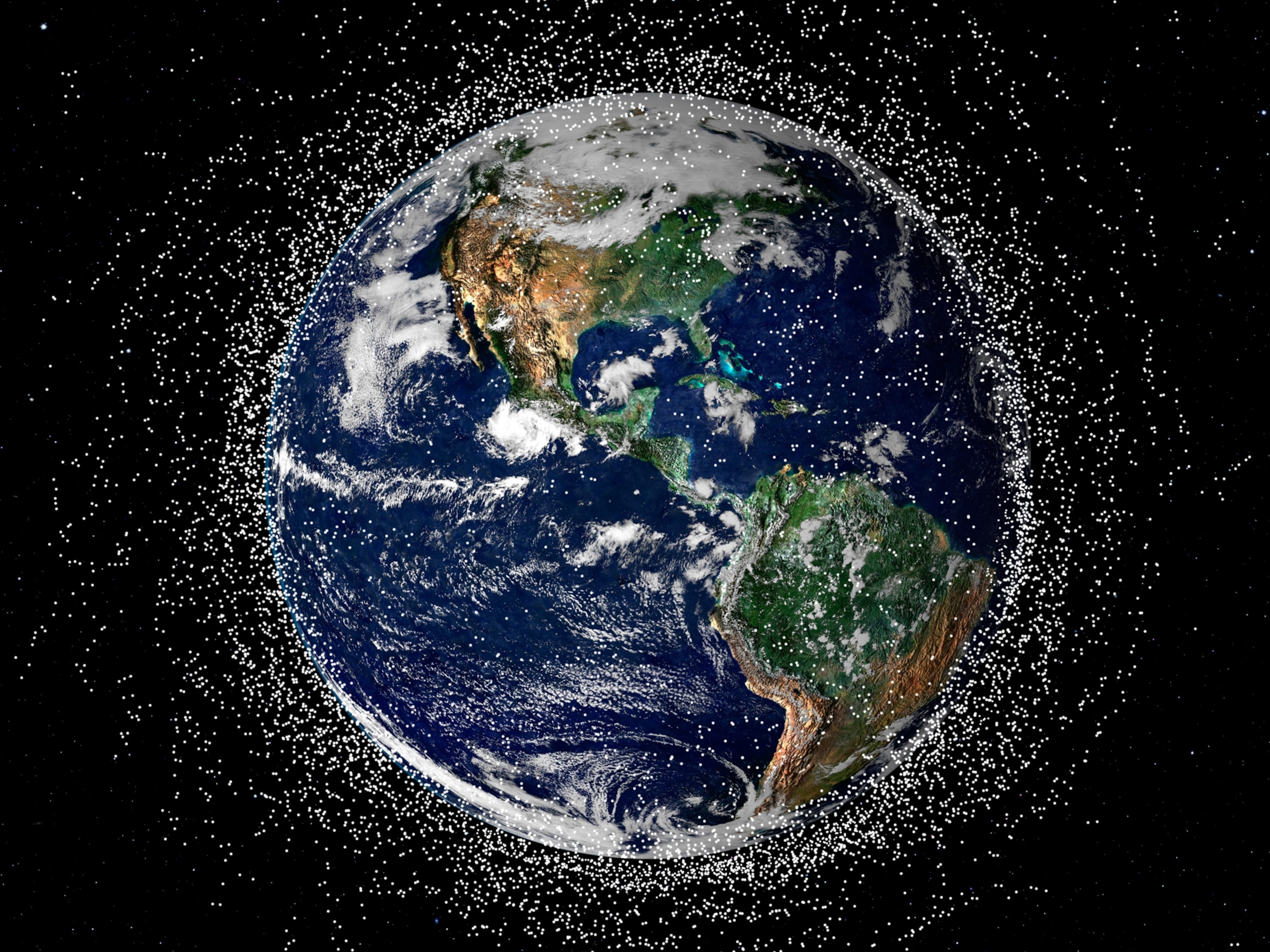
NASA has a plan to clean up space junk—but is going green enough?

How eating ‘bacon bugs’ helps save lemurs

Mushroom leather? The future of fashion is closer than you think.

The most dangerous job on Earth? Inside the world of underwater welders
- Environment
- Perpetual Planet
History & Culture
- History & Culture
- History Magazine
- Mind, Body, Wonder
- Paid Content
- Terms of Use
- Privacy Policy
- Your US State Privacy Rights
- Children's Online Privacy Policy
- Interest-Based Ads
- About Nielsen Measurement
- Do Not Sell or Share My Personal Information
- Nat Geo Home
- Attend a Live Event
- Book a Trip
- Inspire Your Kids
- Shop Nat Geo
- Visit the D.C. Museum
- Learn About Our Impact
- Support Our Mission
- Advertise With Us
- Customer Service
- Renew Subscription
- Manage Your Subscription
- Work at Nat Geo
- Sign Up for Our Newsletters
- Contribute to Protect the Planet
Copyright © 1996-2015 National Geographic Society Copyright © 2015-2024 National Geographic Partners, LLC. All rights reserved
Book Reviews
Book review forums.

Refusing Police Power: Resistances and Ambivalences to State Violence

Book Review Forum
Subaltern frontiers of agrarian urbanism.

Phenom Penh's Bassac District: Genealogy of Bassac Review

Liberation, Solidarity, Abundance: Envisioning Hawaiʻi Beyond the GMO Present

Black Disability Politics Book Review

Our Own Universals: Notes from a Reading Group in the Postcolony
Announcements.

Society and Space statement and virtual issue on Palestine and Israel
Free to Access Society and Space Journal Articles
Pressing pause in a time of crisis, editorial statement from our new review and open site editors, society and space editorial team changes, most read pieces from 2018, current issue, past issues.

A curation of articles, essays, book reviews and interviews on critical geographical concerns.
Current Issue
Past issues, information, privacy policy, terms & conditions, jennifer gabrys, published on, feb 11, 2014, urban and urbanization, smart cities as sustainable cities: a visual essay.
A frequently referenced forerunner of the smart city is this proposal by the British architectural collective, Archigram, for a “Plug-In City,” which supplanted fixed buildings with a moveable network of spaces and interchangeable “programs” for urban inhabitations.
February 11, 2014
Print this essay, latest from the magazine, latest journal issue, volume 41 issue 4.

Multiple information and digital cities emerged throughout the dot-com era. This example of the Cité Multimédia in Montreal documents the enfolding of imaginings of urban space with the capacities of computational rendering, which further inform actual development schemes.

The diagrammatic quality of informational cities designs can be found in newer proposals for smart cities, including this sensor world by Libelium , an “internet of things provider” based in Spain. In this proposal, numerous urban services and operations, from lighting to shopping, become augmented and newly articulated through wireless sensor networks.

The technology that is promoted as reconfiguring urban landscapes is computational sensors, relatively miniature devices connected to computational infrastructures of multiple different scales and generating an expanded array of command-and-control programs for making urban space more efficient.

As part of the imagining and promoting of smart cities, numerous schematic designs have emerged that capture an apparently symbiotic fusing of technology and nature. This special focus on “Tomorrow’s Cities,” gathered together by the BBC , envisions “farmscrapers” and efficient infrastructures combining into a bucolic scene with delivery drones and sensor networks.

The Connected Urban Development (CUD) initiative, formed through a partnership between Cisco and the Clinton Initiative, with MIT and the Connected Sustainable Cities project (CSC) joining the project as it progressed, is a clear example of smart cities developing into sustainable city initiatives, where sustainability–typically in the form of efficiency–becomes a guiding logic for reworking any number of urban services and operations.[vc_video title="#" link="http://vimeo.com/6145800"]
The perceived importance of reworking smart cities as sustainable cities is frequently narrated through the increasing numbers of people now living in cities, which have become dominant sites of resource consumption and greenhouse gas emissions. This particular CUD video provides example scenarios for how smart city initiatives will realize more optimal urban functioning. Efficiency emerges here within a (gendered) logic of gamification, behavioral responsiveness and optimization.

As discussed in the “ Programming Environments ” article, the scenarios developed by William Mitchell and Federico Casalegno as part of their Connected Sustainable Cities visioning document illustrate in graphic-novel style the ways in which everyday actions such as commuting, cooking and heating one’s home may be synchronized through ubiquitous computing to enable more efficient use of resources.
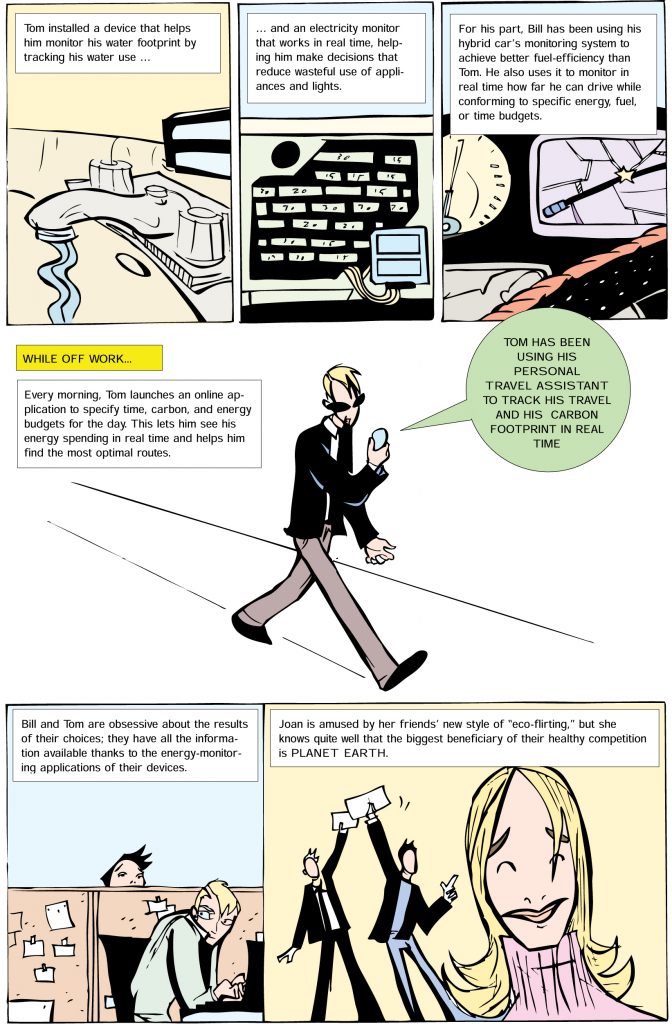
Beyond the use of resources, smart cities might also provide new ways of understanding relationality. Here, an eco-love contest becomes the site where an increasingly competitive approach to environmental monitoring is meant to ensure optimal mating opportunities.

Urban sensor landscapes are presented in this scenario as not just enabling more efficient transit options, but also as facilitating political participation here through making air pollution data more apparent. However, the steps from data to action remain an elusive proposition, and the more contested and conflicted practices of citizenship that might actually contribute to political change are absent in these data-to-action scenarios.
related magazine articles
Although focused on buildings that have since been destroyed, the tone of this genealogy is not mournful. It instead is generative, revealing the creative outputs that have emerged and continue to shape this district. It demonstrates how architecture transforms and is transformed by a range of living and nonliving agents.
Trude Renwick
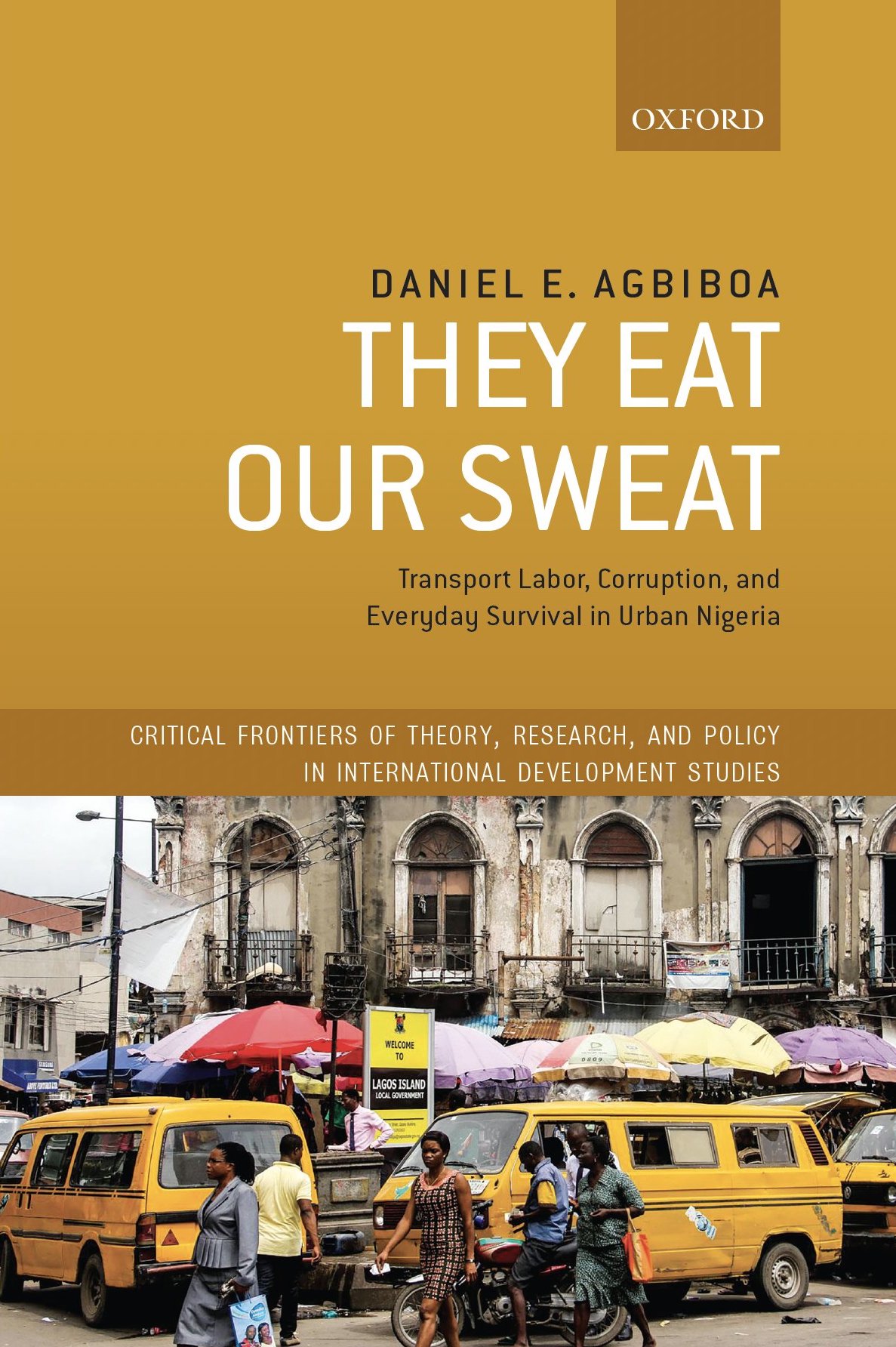
They Eat Our Sweat Review
Daniel Agbiboa's 'They Eat Our Sweat' is a vivid ethnographic portrait of informal transport in Lagos, providing us with a vantage point to understand the experiences of corruption and informality in everyday urban life.
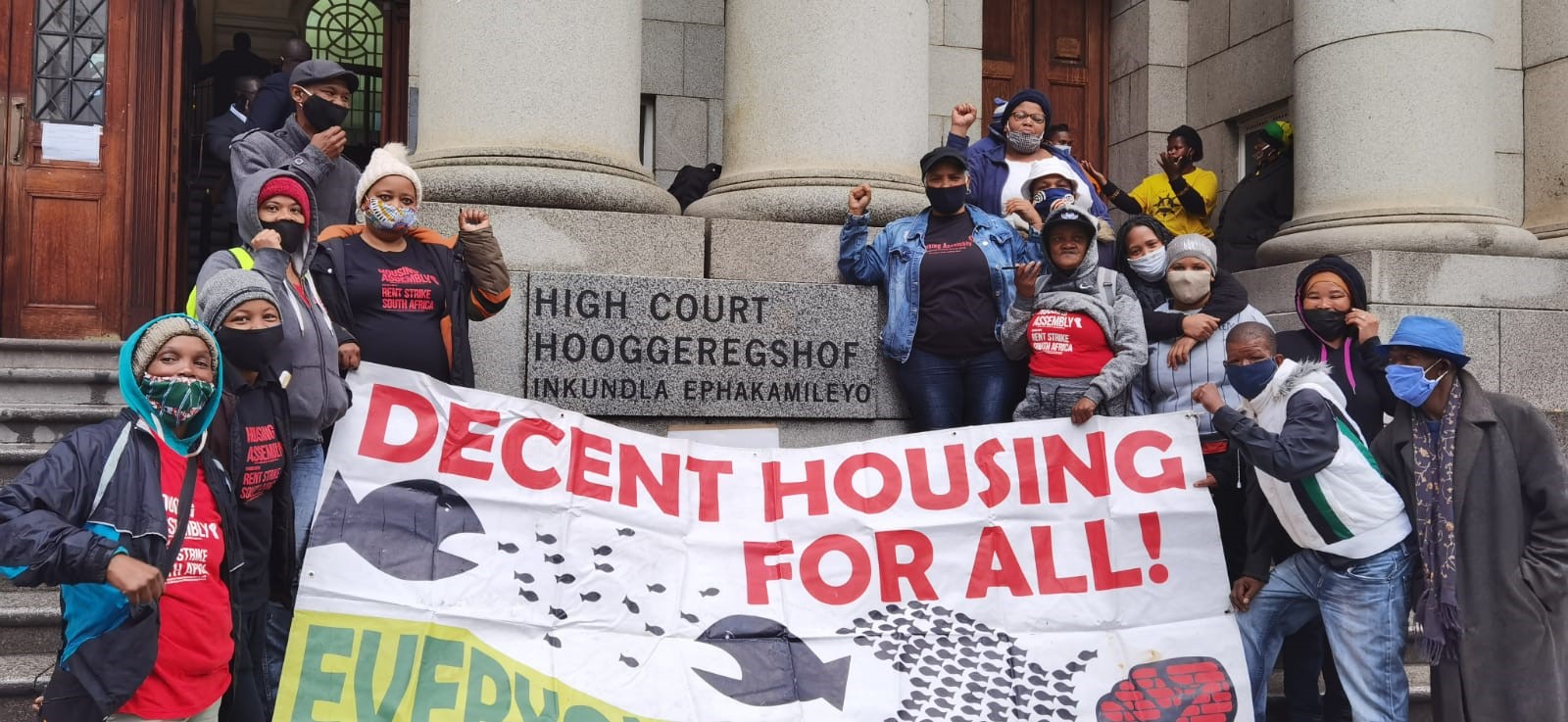
Planning for Humane Urbanism Through Solidarity and Radical Care
Miraftab invites planning scholars to rethink the field’s futures, rejecting the currently dominant bully urbanism centered on profit, for a humane urbanism centered on life.
Faranak Miraftab
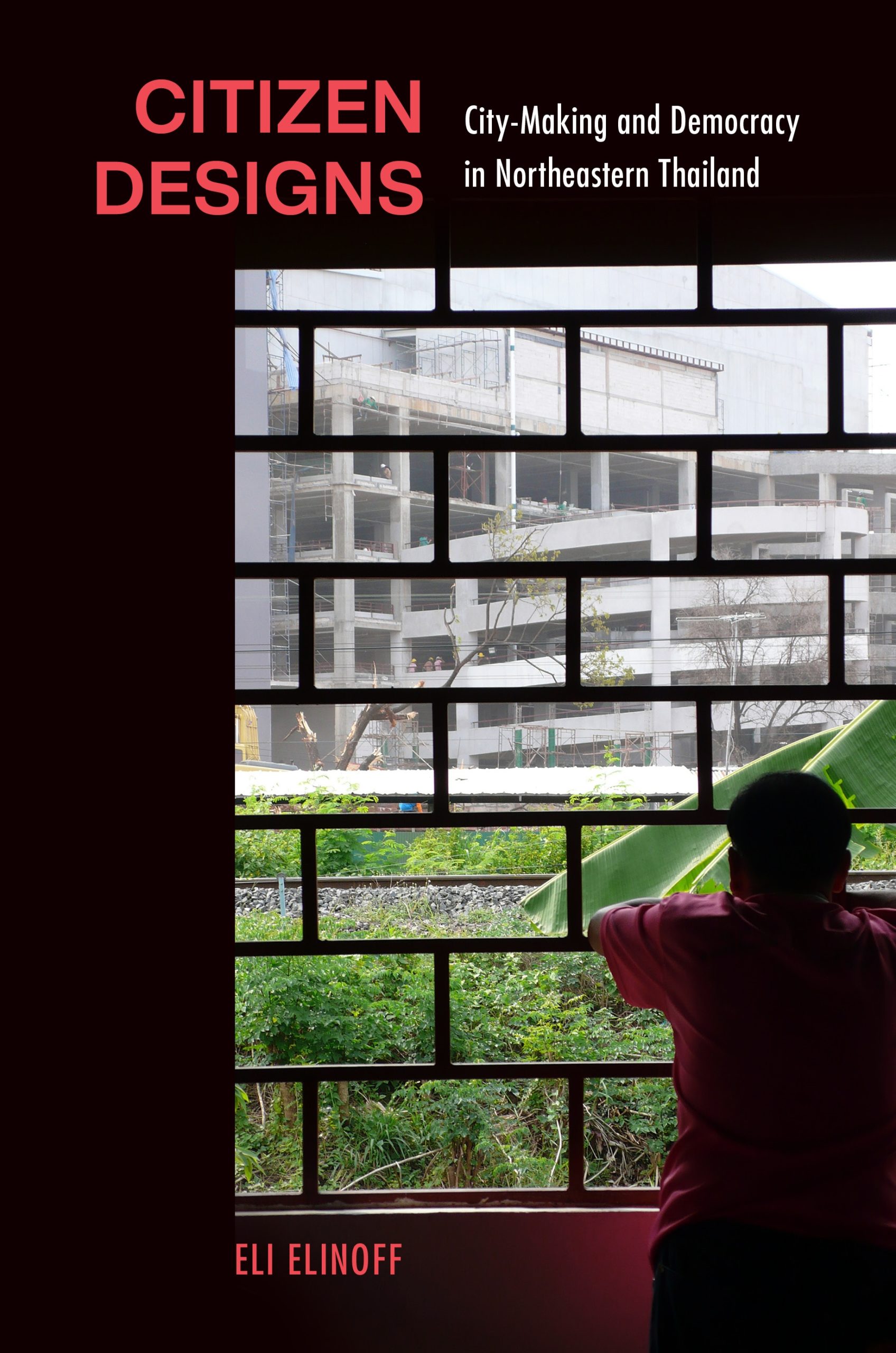
Review, Citizen Designs, by Eli Elinoff
Citizen Designs is a careful depiction of what democracy feels like, with all its discomforts, disagreements, and unresolved tensions. Elinoff manages to present a picture of the struggle for equal citizenship that is at once optimistic and unromantic. In this, the book makes a timely and important contribution to understandings of the relationship between politics and design
Hayden Shelby

Lebanese Yawmiyat (diaries): Archiving unfinished stories of spatial violence
The essay captures some aspects of urban violence in Lebanon and constructs their spatialities. Stories of struggle and creative coping strategies amidst the multiple crises in Lebanon constitute ‘living archives’. They expand the meaning and imaginaries of everyday life, link between a shared past and present reality, and transform the urban space.
Hanadi Samhan, Dina Mneimneh, Hoda Mekkaoui and Camillo Boano
related journal articles
Cities after planning.
In the papers that follow, we focus on the temporal dimensions of urban planning. We are particularly interested in the uneven ways in which urban spaces in the present – as (always incomplete) materializations of modernist plans past – present new predicaments not just for social life, but for the craft of planning itself.
Jenny Lindblad, Nikhil Anand
Planning context: Flexible plans and mayoral authority in French urban planning
In this article, I consider the relationship between urban planning and context by investigating the planning practices associated with a land-use plan in Bordeaux described as “adapted to context.”
Jenny Lindblad
Counterfactual future-thinking
Homing in on the protracted landscape of construction, I am concerned with how urban experts in Taksim 360, who do not entirely concur with the seemingly determined trajectory of urban transformation in Tarlabaşı, put inevitability to work. I ask: what makes urban experts stay with a project that might not materialize?
Alize Arıcan
Book Review Forums
Back to web version.
cholars and practitioners of urban planning need to rethink the field’s futures at this important historical juncture: some might call it a moment of truth when there is little left to hide. The COVID-19 pandemic exposed many cracks, contradictions, and inequalities that have always existed but are now more visible. This also includes the global vaccine apartheid that is ongoing as I write these words. Moreover, this is a time when the violence through which U.S. imperialism has exercised power worldwide is increasingly exposed. Protests in the summer of 2020, which spread all over the United States like fire through a long-dried haystack, showed Americans and the whole world that racialized violence and police brutality are real. They also revealed that such brutality is spatially facilitated in American apartheid—a condition that planning has been far from innocent in creating and maintaining. I think this reckoning is particularly important in the United States, the belly of the beast, where there might have been more of an illusion about planning innocence.
What’s a Rich Text element?
Moreover, this is a time when the violence through which U.S. imperialism has exercised power worldwide is increasingly exposed. Protests in the summer of 2020, which spread all over the United States like fire through a long-dried haystack, showed Americans and the whole world that racialized violence and police brutality are real. They also revealed that such brutality is spatially facilitated in American apartheid—a condition that planning has been far from innocent in creating and maintaining. I think this reckoning is particularly important in the United States, the belly of the beast, where there might have been more of an illusion about planning innocence.
- Moreover, this is a time when the violence through which U.S. imperialism has exercised power worldwide is increasingly exposed.
- Protests in the summer of 2020, which spread all over the United States like fire through a long-dried haystack, showed Americans and the whole world that racialized violence and police brutality are real.
- They also revealed that such brutality is spatially facilitated in American apartheid—a condition that planning has been far from innocent in creating and maintaining.
- I think this reckoning is particularly important in the United States, the belly of the beast, where there might have been more of an illusion about planning innocence.
- They also revealed that such brutality is spatially facilitated in American apartheid—a condition that planning has been far from innocent in creating and maintaining. I think this reckoning is particularly important in the United States, the belly of the beast, where there might have been more of an illusion about planning innocence.
Static and dynamic content editing
A rich text element can be used with static or dynamic content. For static content, just drop it into any page and begin editing. For dynamic content, add a rich text field to any collection and then connect a rich text element to that field in the settings panel. Voila!
How to customize formatting for each rich text
Headings, paragraphs, blockquotes, figures, images, and figure captions can all be styled after a class is added to the rich text element using the "When inside of" nested selector system.
Green Cities: Environmental Urbanism Essay
Introduction.
Research conducted by various researchers on the environment, in particular the urban centers, reveal various practices that range from pollution in the cities through conservation of natural vegetables to soil, that are worth checking towards sustaining the environment. In the chapter An Introduction to Ecological Design, Stuart Cowan and Sim van Der ryn argue in terms of the way people and cultures have established various mechanisms, all of which aim at preserving their environment.
Human beings can live together in harmony just like the way wild animals interact, not only with one another, but also with their environment (Van Der Ryn & Cowan, 2000, p. 519). Therefore, according to them, design is paramount in ensuring a steady balance between the ecosystems. On the other hand, in The Wasteful Cities , John Lorinc argues in terms of how cities cannot survive without water, a crucial resource whose reliability depends much on the nature of the environment.
According to him, the society ought to step up environmental conservation in the cities to ensure the sufficiency of water and wastewater infrastructure (Lorinc, 2006, p. 113). Government therefore, needs to intervene on issues of environmental conservation in the urban centers. However, Nicholas Low’s book Green-Shaded Cities claims that, cities should employ mechanisms for sustaining them in a way that people respect, not only one another, but also the nature around them for the benefit of all (Low, 2003, p. 211).
Nevertheless, based on a keen analysis of the works of these authors, there stand some loopholes, as they do not give a detailed procedure of the steps to follow in order to realize the dream of an environment conducive for the people leaving in the cities. In addition, cities have continued to deteriorate in terms of their surroundings, despite the efforts made by people like these authors, as they also do not pinpoint the requirements needed from the people towards the realization of this goal.
They also do not tell what exactly needs to be conserved and why. In this paper, I argue that the main reason why there appears to be a disconnection between environmental preservation, and conservation and human beings’ social and industrial practices is ignorance on the part of man.
By ignorance, I mean the lack of information on how to preserve and conserve the environment. Man is a rational being and if he/she knows what is at stake when he/she engages in environmentally unfriendly practices, it will become easier for him/her to refrain from them (Low, 2003, p. 224). Over the years, market economists, and other environmental entities have portrayed human beings as ‘monsters’ seeking to destroy the environment with their inventions of automobiles, skyscrapers, and other pollutants.
The concept of waste is a common allusion linking all the three articles. The authors agree that waste disposal has a major effect on how a city or an area’s environmental management is undertaken. One of the main reasons why this vice is rampant in urban centers includes the presence of air pollution policies that have no authority (Lorinc, 2006, p. 117).
Chronic technical failures of hydroelectric power plants result in waste release into the atmosphere. Over dependence on power energy is another problem affecting urban areas, especially those with lots of industries. “Nature’s cooling and purification systems are no longer functional because wetlands and woodlots have been eradicated by urban constructors and landscapers. Trees cut provide space for parking lots, “we build cities that function like huge heat sinks” (Lorinc, 2006, p. 114).
The houses seem insufficiently insulated and therefore the growing need for artificial heating systems. Pavements are made of asphalt and other ecologically insensitive building materials that absorb solar radiation. In Toronto for instance, the statistics report 1700 premature deaths, 6000 hospitalizations annually due to air pollution related conditions (Lorinc, 2006, p. 116). Smog and ground level ozone quantities have escalated and the situation is simply tragic.
Ecological footprints, defined as the amount of land, water, mineral resources and energy required to sustain an individual’s lifestyle remains worth measuring. Therefore, planners need to incorporate these measurements when developing cities. That way, the green cities spoken of, will appear a dream easy to realize, at least for future generations to live in.
Ecological design is another critical concept advanced throughout the three articles. It is what Van Der Ryn and Cowan propose as the possible solution to the environmental degradation, which currently seems directly proportional to the rate of urbanization. Briefly, ecological design refers to processes during and after a development that reduce environmental destruction through integration and adoption of natural processes (Van Der Ryn & Cowan, 2000, p. 223).
Experts have tested such designing. Based on their findings, the designs result to the advancement of sustainable life: a life of “social responsibility and financial profitability” (Van Der Ryn & Cowan, 2000, p. 528). For its implementation, an ecological design requires the cooperation and sacrifice of the present generation, which seems likely to benefit the least from their responsible actions, for the benefit of future generations.
Van Der Wyn and Cowan highlight three steps necessary to achieve this design with conservation as the first step. It refers to the practice of ‘economizing’ environmental resources or using less and reducing the wasted resources. Regeneration, the second principle, refers to “repairing and renewing a world deeply wounded by an environmentally insensitive design” (Van Der Ryn, & Cowan, 2000, p. 519). Finally, stewardship refers to interweaving nature and the urban environment in a way that yields maximum profitability.
Some of the methods proposed for the advancement of these principles include the construction of ‘pedestrian oriented’ urban designs, cogeneration, recycling of industrial wastes, toxic cleanup and the production or acquisition of sufficient energy to run the urban centers.
They also include the consideration of resource efficiency, construction of ‘healthy’ buildings, use of ecologically sensitive materials, social and ecological sensitivity in the usage of land, and aesthetic sensitivity. For these measures to succeed, it calls for the combination of efforts among architects, engineers and planners.
Such cooperation remains guaranteed to result in a very ecologically sensitive city, whose citizens, and administration appreciate the role of a healthy environment in the social and economical wellbeing of its inhabitants. Such a city will befit the title, ‘Green-shaded city’. Other characteristics of such a city include the “recognition of the intrinsic value of biodiversity and natural ecosystems-to protect and restore them” (Low, 2003, p. 210). Citizens can demand for it from their leaders by applying their democratic rights.
They can stage citizen action through rallies, campaigns and boycotts, which insist upon the maintenance of pure environments by all residents, including industries and factories that are naughty for polluting the environment. “Cities must coexist with and indeed within, nature. Cities must become resource pools rather than users of resources, reusing their own energy and resources- both natural and human” (Low, 2003, p. 225).
It therefore seems necessary for people to understand the importance of conserving energy and resources, so that they can gain the motivation to do so. It is also important that the opinion leaders be the ‘tool’ to administer this knowledge as more are likely to listen to their arguments. The result of such information dissemination will be diligent, self-driven environmental conservation by the people inhabiting such environments.
Lorinc, J. (2006). Wasteful Cities. In J. Lorinc, The City Under Stress . Toronto: Penguin Canada.
Low, N.(2003). Green Shaded Cities. In N. Low, The Green City . Oxford: Bellwether Publishing Ltd.
Van Der Ryn, S., & Cowan, S. (2000). An Introduction to Ecological Design. In R. T. LeGates, The City Reader. London: Routledge.
- Chicago (A-D)
- Chicago (N-B)
IvyPanda. (2018, October 12). Green Cities: Environmental Urbanism. https://ivypanda.com/essays/environmental-urbanism/
"Green Cities: Environmental Urbanism." IvyPanda , 12 Oct. 2018, ivypanda.com/essays/environmental-urbanism/.
IvyPanda . (2018) 'Green Cities: Environmental Urbanism'. 12 October.
IvyPanda . 2018. "Green Cities: Environmental Urbanism." October 12, 2018. https://ivypanda.com/essays/environmental-urbanism/.
1. IvyPanda . "Green Cities: Environmental Urbanism." October 12, 2018. https://ivypanda.com/essays/environmental-urbanism/.
Bibliography
IvyPanda . "Green Cities: Environmental Urbanism." October 12, 2018. https://ivypanda.com/essays/environmental-urbanism/.
- "Obesity Prevention" by Michelle Cowan
- Landscape Urbanism: A Medium to Modern Cities
- Urbanism in Architecture: Definition and Evolution
- Effects of Global Warming on Human Health, Human Welfare, and Human Settlements
- Green Building in the United Arab Emirates
- The Development at Bakers Bay Club and Their Effect to Maine-Ecosystem
- A Critical Analysis of ‘Psychology in an Age of Ecological Crisis’
- Future of Green Technologies in Architectural Industry
Advertisement
Green IoT for Eco-Friendly and Sustainable Smart Cities: Future Directions and Opportunities
- Open access
- Published: 17 August 2021
- Volume 28 , pages 178–202, ( 2023 )
Cite this article
You have full access to this open access article

- Faris. A. Almalki 1 ,
- S. H. Alsamhi ORCID: orcid.org/0000-0003-2857-6979 2 , 3 ,
- Radhya Sahal 4 , 5 ,
- Jahan Hassan 6 ,
- Ammar Hawbani 7 ,
- N. S. Rajput 8 ,
- Abdu Saif 9 ,
- Jeff Morgan 10 &
- John Breslin 10
25k Accesses
86 Citations
13 Altmetric
Explore all metrics
The development of the Internet of Things (IoT) technology and their integration in smart cities have changed the way we work and live, and enriched our society. However, IoT technologies present several challenges such as increases in energy consumption, and produces toxic pollution as well as E-waste in smart cities. Smart city applications must be environmentally-friendly, hence require a move towards green IoT. Green IoT leads to an eco-friendly environment, which is more sustainable for smart cities. Therefore, it is essential to address the techniques and strategies for reducing pollution hazards, traffic waste, resource usage, energy consumption, providing public safety, life quality, and sustaining the environment and cost management. This survey focuses on providing a comprehensive review of the techniques and strategies for making cities smarter, sustainable, and eco-friendly. Furthermore, the survey focuses on IoT and its capabilities to merge into aspects of potential to address the needs of smart cities. Finally, we discuss challenges and opportunities for future research in smart city applications.
Similar content being viewed by others

Artificial intelligence-based solutions for climate change: a review

RETRACTED ARTICLE: A Review and State of Art of Internet of Things (IoT)

Smart cities: the role of Internet of Things and machine learning in realizing a data-centric smart environment
Avoid common mistakes on your manuscript.
1 Introduction
Due to the tremendous development in communication and sensing technologies, ‘things’ around us are being connected together to provide various smart city applications, enhancing our life quality [ 1 ]. This connectivity between things in the smart city is commonly referred to as the Internet of Things (IoT). IoT includes everything in smart cities, to be connected at any time, anywhere, and using any medium [ 2 , 3 ]. The development of IoT technologies continue to grow, making IoT components smarter through an adaptive communication network, processing, analysis, and storage. For context, some IoT devices include cameras, sensors, Radio Frequency Identification (RFID), actuators, drones, mobile phones, etc. All of these have the potential to communicate and work together to reach common goals [ 1 , 4 ]. With such components and communication technologies, IoT devices are set to provide a broad range of applications for real time monitoring, as seen in environmental monitoring [ 5 , 6 ], e-healthcare [ 7 ], transportation autonomy [ 8 ], industry digitalization and automation [ 9 , 10 ] and home automation [ 11 , 12 ]. Furthermore, IoT is an enabler of software Agents, to help share information, make collaborative decisions, and optimally accomplish tasks [ 10 ].
IoT is capable of collecting and delivering vast amounts of data using advanced communication technologies that can be analyzed for intelligent decision making. The Big data requirements of IoT needs storage capacity [ 13 ], cloud computing [ 14 ], and wide bandwidth for transmission, to make IoT ubiquitous. This big processing and transmitting of data consumes high amounts of energy in the IoT devices. However, using efficient and smart techniques could lead to a decrease in power consumption. Therefore, the combination of IoT and the practical techniques to reduce power consumption of big data processing and transmission can improve the quality of life in smart cities, and contribute to making the world greener, more sustainable, and collectively a safer place to live [ 15 , 16 , 17 ]. Shuja et al. summarized this relationship between green IoT and big data to create sustainable, green, and smart cities by decreasing pollution hazards and reducing energy demand and efficient resource utilization [ 18 ].
Presently there is new potential in smart cities to become even smarter than before with the application of advanced technologies, such as Artificial Intelligence (AI). Examples of this can be seen in smart city components including sensor integrated smart transportation systems, cameras in smart monitoring systems, and so on. Vidyasekar et al. [ 19 ] introduced the critical aspects of potential smart cities in 2020, in which things are smarter through smart energy, smart building, smart mobility, smart citizens, smart infrastructure, smart healthcare, smart technology, and smart education and governance. These aspects are shown in Fig. 1 .
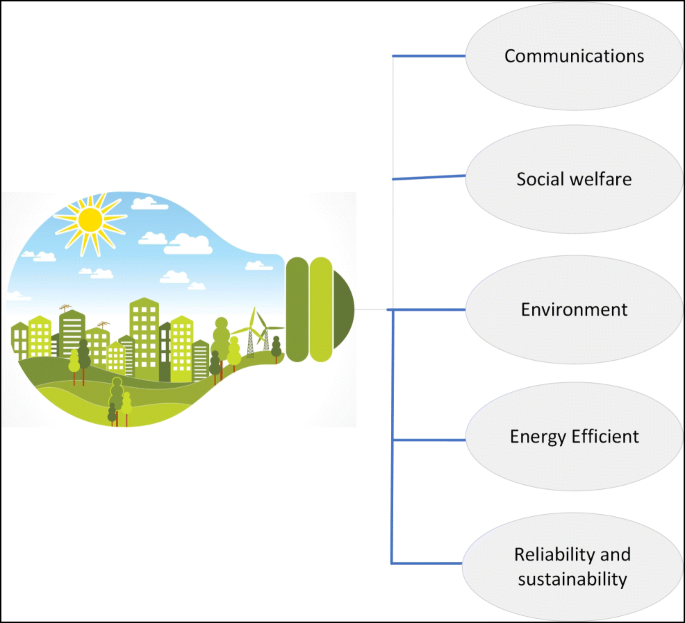
Aspects of smart cities
IoT plays a tremendous role in improving smart cities, affecting in different ways with its numerous applications in enhancing public transformation, reducing traffic congestion, creating cost-effective municipal services, keeping citizens safe and healthier, reducing energy consumption, improving monitoring systems, and reducing pollution, as shown in Fig. 2 . However, IoT environmental issues, such as, energy consumption, carbon emission, energy-saving, trading, carbon labeling and footprint, have attracted researchers’ attention. Therefore, carbon emission reduction and energy efficiency technologies based IoT are summarized [ 20 ]. The study discusses IoT technologies to facilitate real-time intelligent perception of the environment, and generate and collect energy consumption in manufacturing the entire life cycle.
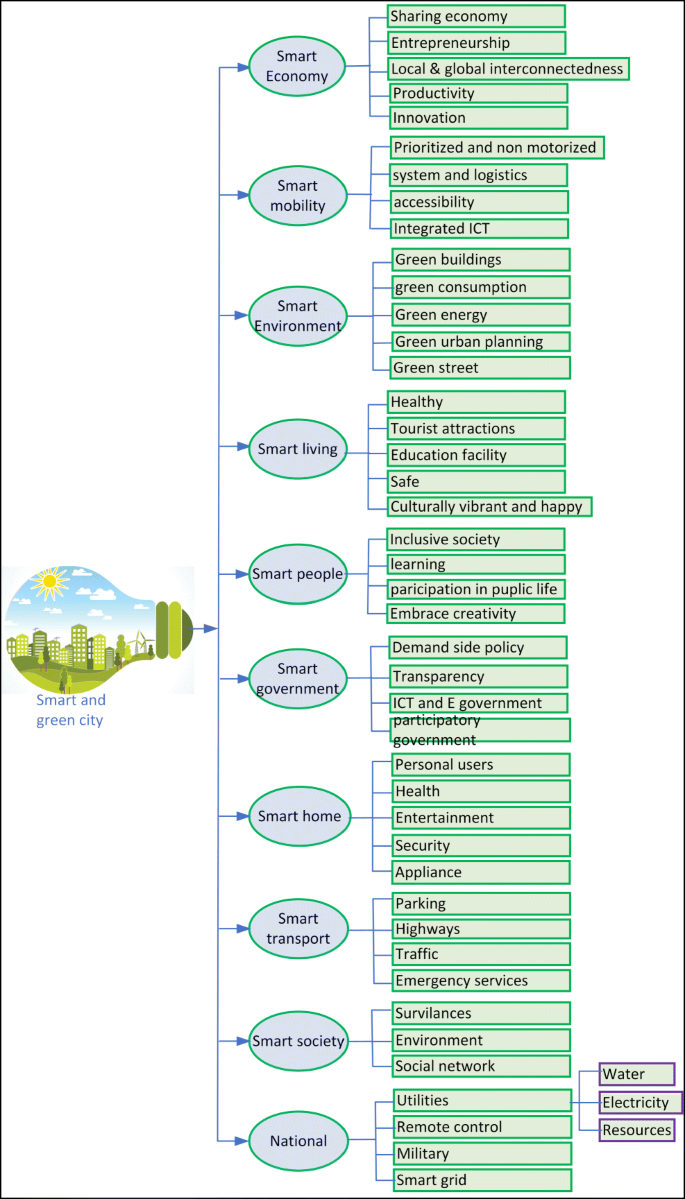
Smart city applications
To fulfill goals of smart cities and sustainability, green IoT is a key technology to decrease carbon emission and power consumption [ 21 , 22 , 23 ]. The increasing number of IoT devices leads to increased energy consumption. For example, wake up protocols and sleep schedules of IoT devices are introduced for energy consumption and resource utilization [ 21 ]. The authors of [ 23 ] provided the techniques that can reduce the energy consumption in IoT via efficient energy of data transmission from IoT devices, data center efficient energy, and design energy-efficient policies. Further, authors in [ 22 ] introduced Information and Communication Technology (ICT) impacts on carbon emissions and smart cities’ energy consumption.
1.1 Related work
The preliminary literature on smart cities based on greening IoT is dispersed [ 23 , 24 , 25 , 26 ], leading to inadequate recognition of the importance of green IoT. There is an apparent lack of depth in current literature which can explain in detail the enabling techniques for IoT systems in smart cities which can reduce C O 2 emission, minimizing power consumption, enhancing QoS [ 27 , 28 , 29 , 30 , 31 , 32 , 33 , 34 , 35 , 36 , 37 , 38 , 39 , 40 ], and enabling ICT. Existing surveys are not comprehensively focusing on smart cities strategies strategies and techniques for enabling greener smart cities. To the best of the authors’ knowledge, there is no existing survey dedicated to reviewing the strategies and techniques for greener smart cities, through enabling ICT, reducing energy consumption, reducing C O 2 emissions, reducing waste management, and improving sustainability.
As a comparison, Arshad et al. [ 23 ] discussed green IoT based on minimizing energy consumption. The study focuses only on designing energy efficient policies, energy efficient policies, energy efficient data centers, and data transmission from IoT devices. However, the study does not cover all of the potential ideas, while our survey will focus on techniques and strategies, for enabling IoT to improve the eco-friendly and sustainability of smart cities. The work presented in [ 25 ] discussed the negative impact of IoT technology and suggested solutions to minimize it. Some negative impacts of IoT were included in this study, e.g., greenhouse gas emissions, and energy usage, etc. The study explored the principles of green IoT to improve life quality, economic growth, and environments in smart cities. It showed evidence that green IoT usage can support sustainable natural resource utilization in agriculture, forestry, and aquaculture. However, the authors did not fully discuss all potential negative impacts of IoT technology in various applications. As such, Our work not only includes a broader coverage of the negative impacts, but also focuses on the use of green IoT to improve eco-friendly and sustainability for smart cities.
In [ 24 ], the authors introduced IoT for smart cities, and addressed techniques for minimizing energy consumption for green IoT, and as such, introduced the green ICT principle. However, the authors did not further discuss the green ICT for IoT applications in smart cities. As such, this paper will fill this gap in the literature. Shaikh et al. [ 26 ] presented how to deploy IoT technology efficiently to fulfill a green IoT. They identified IoT applications where energy consumption can be reduced for a green environment. Several techniques were introduced for enabling green IoT to facilitate energy efficiency. The authors of [ 41 ] discussed the concept of IoT for smart cities and their advantages, benefits, and different applications. The study focused mainly on the use of IoT for smart cities such as smart homes, smart parks, smart transports, weather, and pollution management. The authors focused on the benefits and applications of IoT for smart cities applications, however, the study does not discuss the techniques for improving IoT for enhancing the eco-friendlinesss and sustainability of smart cities. A comparison of existing surveys and the present work is summarized in Table 1 .

1.2 Contribution
This literature review is intended to develop smart cities’ strategies and techniques based on collaborative IoT to improve life quality, sustainability, echo-friendliness, citizen safety, and the health of the environment.This work will contribute to the research literature by broadening discussions on:
Enabling IoT techniques for eco-friendly ICT. Specifically the significant impacts of ICT for reducing energy consumption and C O 2 emissions for a sustainable smart city,
Different strategies and techniques used for energy-efficiency, reduced C O 2 , reduced traffic, and reduced resource usage in smart cities,
Waste management techniques to improve smart cities,
Advanced techniques used for smart city sustainability,
Surveyed current ongoing research works and possible future techniques for smart cities’ sustainability and energy efficiency, based on collaborative IoT.
1.3 The scope of study and structure
In a smart city, IoT plays a critical role in improving the life quality, safe environments, sustainability, and ecosystem. This paper will survey the techniques and strategies used to improve smart cities to be eco-friendly and sustainable. The authors focus on techniques which lead to fewer emissions, reduce traffic, improve waste management, reduce resource usage, reduce energy consumption, reduce pollution and improve Quality of Service (QoS) of communication networks. To the authors’ best knowledge, no previous research work in the survey has addressed the techniques and strategies that lead to eco-friendly and sustainable smart cities. Relevant challenges are addressed, and the solutions are conceived for other purposes, yet related work will be introduced.
The rest of this paper is organized as follows (see Fig. 3 ). ICT technology for smart cities is presented in Section 2 . Section 3 discusses energy efficiency. In Section 4 , reducing pollution hazards is considered. Waste management and sustainability are discussed in Sections 5 and 6 , respectively. The future directions and opportunities are discussed in Sections 7 and 8 , respectively. Finally, we conclude the paper in Section 9 .
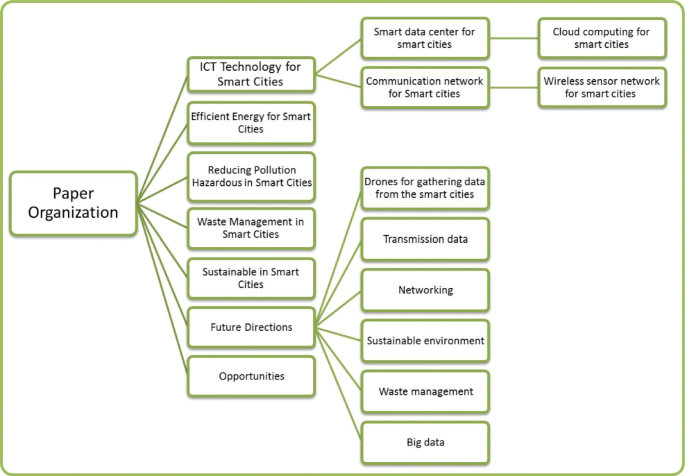
Paper Organization
2 ICT technology for smart cities
IoT is a global, ambient communication network, immersive, and an invisible computing environment built depending on smart sensors, cameras, software, databases, and data centers in smart cities [ 42 ]. In [ 43 ], the authors presented IoT for constructing a green campus environment based on energy efficiency. Despite prior evidence presented in [ 42 ], IoT elements have been presented in [ 4 ], where the benefits of IoT and how to create a green area by employing efficient techniques were discussed. In [ 44 ], the authors discussed different technical directions towards realizing future green Internet.
Consequently, IoT leads to saving natural resources, minimizing the technological impact on the environments and human health, and reducing costs. Thus, green IoT focuses on green manufacturing, green design, green utilization, and green disposal [ 41 ]. The authors in [ 41 ] discussed all of the above categories and their importance for improving smart cities.
Furthermore, Solutions for green IoT includes reducing C O 2 emissions and reducing IoT energy usage to fulfill the smart world with the sustainability of intelligent everything. Green IoT includes designing and leveraging green aspects. The design elements of green IoT include developing computing devices, energy efficiency, communication protocols, and networking architectures [ 45 ]. Leveraging the IoT element is to reduce the emissions of C O 2 , and enhance energy efficiency. Uddin et al. [ 46 ] presented the techniques for improving energy efficiency and reducing C O 2 for enabling green ICT. Gathering data from smart city environments represents the essential element of smart cities that create an intelligent model for appreciated decision making.
ICT plays an essential role in improving green IoT in smart cities to be friendly and sustainable. ICT can reduce cost, resource consumption, and pollution; interact with city services; and enhance life quality. Therefore, without ICT, the idea of smart cities cannot exist. ICT improves the smart cities’ application by automated, simplified, enabling IoT, automatic security threat isolated, and scalability, as shown in Table 2 . Furthermore, ICT technologies can reduce climate change globally [ 42 , 43 , 44 , 47 , 48 ], with ICT application growth with energy efficiency due to environmental awareness. Greening IoT refers to the advanced technologies that make the IoT environmentally friendly by using facilities and storage that enables subscribers to gather, store, access, and manage various information [ 23 ].
Green ICT enables subscribers to gather, access, store, and manage information [ 24 ]. ICTs play a critical role in greening IoT and providing many benefits to society, i.e., saving energy used for designing, manufacturing, and distributing ICT equipment and devices. Various research have been done on green ICT technologies, such as [ 24 , 49 , 50 , 51 , 52 , 53 ]. These are exciting, but they have been applied for limited applications and ways. In [ 49 ], the authors discussed using ICT applications and strategies to reduce C O 2 emissions and energy consumption. The authors [ 50 ] discussed green IoT principles for enhancing life quality, growth, economy, and environment. They provide the numerous benefits of reducing the negative impact of the latest technology on society, human health, and the environment. In the case of stainability, ICT can manage data centers optimization through techniques of sharing infrastructure, which leads to energy efficiency with reduced C O 2 emissions and e-waste of material disposals [ 54 ]. Furthermore, the authors [ 22 ] discussed the enabling technologies for green IoT, which include RFID, wireless sensor networks (WSN), machine to machine (M2M), data center, cloud computing, and communication networks, as shown in Fig. 4 . However, they did not consider the techniques used for greening IoT by reducing energy consumption and C O 2 emissions. Also, the authors [ 51 ] support the idea of [ 24 ] to satisfy greening IoT by transmitting the needful information, reduce the energy consumption of facilities, and use renewable energy sources. Kai et al. [ 53 ] proved that the Device to Device (D2D) communication plays a key technology to make cities greener and smarter. They investigated the combination of power allocation optimization and uplink subcarrier assignment in the D2D underlying cellular networks. Therefore, all users’ power consumption in network was decreased, while guaranteeing the required throughput of both cellular user and device to the device user equipment.

ICT technologies for smart cities
ICT technologies play a vital role in reducing C O 2 emissions and energy consumption to green IoT applications in smart cities, i.e., smart transportation, smart building, smart parking, and so on [ 55 ]. The authors of [ 56 ] described the green ICT and green IoT depending on green smart grid, green communication, and green computing technologies. The benefits of greening enabling IoT are illustrated in Table 3 . It shows the enhancement of green ICT technologies to reduce energy consumption, reduce C O 2 emissions, reduce costs, and change the climate.
Going towards greening IoT involves finding new resources, exploiting environmental conservation, minimizing the use of available resource and costs, and minimizing negative impacts of IoT on human health and environment (e.g., C O 2 emission , N O 2 and other pollution) [ 45 , 57 , 58 , 59 ]. The authors of [ 49 ] provided the details on how industrial emissions influence the environment over time. Therefore, reducing IoT device energy consumption is required to make the environment healthier [ 20 ]. Furthermore, greening ICT technologies help to support environmental sustainability and economic growth [ 45 , 50 ], and therefore, emerging IoT technologies make the world greener and smarter. Table 4 shows the critical trends in IoT for smart cities applications domains such as smart healthcare, smart transportation, smart retail, smart, smart industries, smart house, smart grid, smart agriculture, smart wearable.
2.1 Smart data center for smart cities
Data Center is a repository and technology for smart city management, data storage, and dissemination gathered from smart cities’ devices. A massive number of IoT devices need permanent internet connectivity over the smart city. However, data management and transformation of data into information over a smart city would not be possible without the data center. It consumes a huge amounts of energy [ 22 ], high costs of operation, and high C O 2 footprints due to dealing with different data from different applications. Furthermore, the production of big data is rising through various ubiquitous things, i.e., mobile devices, actuators, sensors, RFID, etc. For the energy efficiency of the data center, the authors of [ 24 , 60 , 61 ] discussed several techniques (i.e., renewable energy, utilizing efficient dynamic power-management, designing more energy-efficient hardware, constructing efficient, designing novel energy-efficient data center architectures, using accurate data center power models, drawing support from communication and computing techniques, and improving air management, consolidating servers, finding optimal environment, improving the processing technology and boost airflow). An eco-friendly datacenter comprises enhancing the airflow and processing, finding optimal environment, improving the air management, and consolidating the server.
Furthermore, the authors of [ 51 ] introduced many techniques for enhancing and predicting the energy efficiency of the data center and its components. In addition to the work of authors [ 51 ], authors in [ 52 , 53 ] presented the optimization technique for the data center energy efficiency with supporting Quality of Service (QoS). The study in [ 62 ] provided a method to reduce the power consumption without degrading the data center cooling efficiency. Peoples et al. [ 63 ] explored the energy-efficient context-aware broker framework mechanisms to manage data center next-generation. However, the study in [ 64 ] offers a green data center of air conditioning via cloud techniques, consisting of two subsystems (i.e., air conditioning in the data center system and cloud management platform). The air conditioning system’s data center includes environmental monitoring, air conditioning, communication, temperature control, and ventilation. Simultaneously, the cloud platform provides data storage, up-layer application, and big data analysis and prediction. Furthermore, an Ant Colony System (ACS) based virtual machine (VM) can be used for reducing the power consumption of the data center while maintaining QoS requirements [ 65 , 66 ] by a near-optimal solution, while virtual machine is considered to reduce the energy consumption of the cloud data center and maintain the desired QoS [ 67 ]. The authors of [ 50 ] discussed the mitigation of VMs for QoS constraints via bandwidth management and minimalizing energy for 5G networks [ 61 ]. Figure 5 illustrates the required impacts for greening the data center for smart cities.
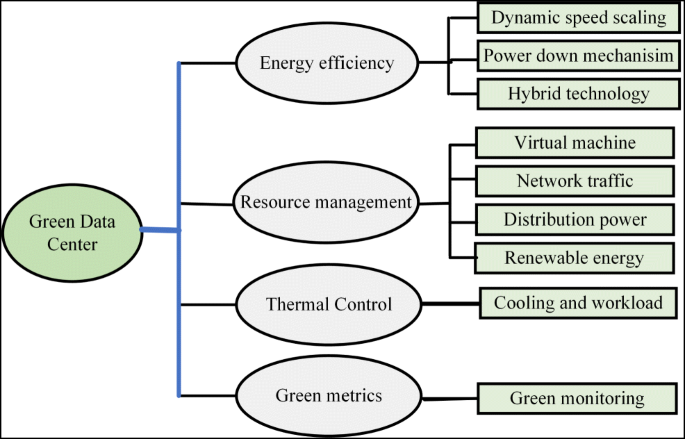
Required impacts for greening the data center
The dynamic speed scaling technique plays a vital role in reducing power consumption, as discussed in details in [ 68 ]. In the case of speed scaling, various researches have addressed signal processing [ 69 ], and network devices [ 70 , 71 ], and parallel processors [56] for saving energy by speed scaling. However, the authors in [ 72 ] combined sleep state and varying the speed when the tasks are processed for reducing energy usage. The study in [ 72 ] supported by Liu et al. [ 73 ], developed SleepScale for power efficiency and fulfilling QoS agreements. In addition to the work of [ 72 , 73 ], the authors in [ 74 ] used hybrid technology to reduce network energy consumption by using idle periods and adapting the rate of network operators to the requested workload.
The authors in [ 75 ] proposed a centralized network power controller based on collected data of traffic. Statistic servers form, and collected data are used to perform the aggregation of transportation and VM assignment, which was used for migrating the target data center. Authors found that the bandwidth and VM reduced the network power consumption for any data center topology. To optimize the power usage in data center networks with guaranteed connectivity and bandwidth utilization, Zhang et al. [ 76 ] discussed two levels for doing the needful. These levels are core level and pod level, in which the purpose of the core level is to define the core switches, while the pod level defines the aggregation switches. They evaluated the hierarchical energy optimization for various traffic patterns, small, large, or random traffic.
Furthermore, the study [ 77 ] focused on reducing energy by two steps:(i) by allocating VM to the server to minimize the traffic amount and (ii) balancing traffic flows by reducing the number of active switches. Zheng et al. [ 78 ] used PowerNets for improving the energy savings of a data center network. The proposed technique gradually improved VM and traffic consolidation performance with lower VM migration overheads by energy savings for a data center.
For power distribution, Meisner et al. [ 79 ] developed a technique to eliminate idle power waste in servers based on the PowerNap and RAILS.The finding showed that both techniques minimized the average power consumption in the server by 74%. Therefore, the proposed methods supported transitioning quickly between near-zero-power idle and high-performance active states in response to immediate load variations. However, the authors in [ 80 ] proposed a method to reduce the utilized power in installing the infrastructure, and they used power routing across redundant power feed for schedule servers.
Renewable energy is another route towards a green data center which minimizes the negative environmental implications. Therefore, Zhang et al. [ 81 ] designed the middleware system to optimize the dynamically distributed requests through various data centers via linear-fractional programming. They found that the proposed system could significantly increase renewable energy usage at different locations without impacting operational cost budges. Furthermore, authors in [ 82 , 83 ] considered the electrical grid and solar array for data center powering. They proposed two schedulers called GreenHadoop and GreenSlot for data processing jobs and parallel batch jobs, respectively. These schedules are used to predict the solar energy amount to maximize the green energy usage. Both schedulers could increase green energy consumption efficiently. Table 5 illustrates the summary of techniques and strategies for energy efficiency, resource management, thermal control, and green metrics for greening data centers.
Availability and sustainability are the factors that can determine the future of data centers. Therefore, smart cities are required for the data center with the high capacity to process big data coming from sensors dispersed in the city. To enhance the technological infrastructure and reduce the cost, the processing of big data needs communication networks, virtualization systems, and storage access. Here, the smart data center will manage the smart cities effectively and efficiently. Therefore, smart data centers represent smart cities’ core, increasing access security, providing passive sensitometry, achieving balanced sustainability, taking care of the city environment, and providing sustainable development for city development. Furthermore, the smart data center will have the capability to effectively and efficiently coordinate and manage the resources required by smart cities. For instance, they are measuring and controlling energy from renewable resources, managing the mobility and traffic, measuring the emissions and pollutions, managing the growth of resources, i.e., air, water, light, ect., and leading other services such as recycling waste, public safety, health, etc. Smart data centers’ future will help create new technologies and architectures for managing smart cities to improve citizens’ quality of life.
2.1.1 Cloud computing for smart cities
Cloud computing is a critical technology for smart cities’ physical infrastructure. The deployment of smart cities requires the combination of a decentralized cloud and a distributed open-source network.Cloud computing services are essential for smart city applications. Therefore, the massive amounts of heterogeneous data collected from different devices surrounding smart cities require the services of cloud computing. Smart cities refer to the high quality of life, management the natural resources, and economic development. Smart cities should intelligently provide the many facilities to improve smart city applications, such as police transport, public safety, security, electric supply, water supply, internet connectivity, smart parking, etc.
Cloud computing provides unlimited computational service delivery via the internet and unlimited storage. It is shown that different devices (i.e., tablet, camera, laptop, mobile, etc.) are connected to gather via the cloud. The combining of cloud computing and IoT together has a comprehensive research scope. The aim of cloud computing is to promote eco-friendly products, which are facilely reused and recycled. Thus, the authors of [ 18 ] proposed green computing with a focus on ICTs. Also, they discussed the trade-off between green computing and high- performance policies. Furthermore, Baccarelli et al. [ 90 ] introduced a green solution to IoT over the fog-supported network.
Therefore, efficient cloud computing plays a vital role in maximizing energy consumption, reducing hazardous materials, and enhancing old products’ recyclability. Moreover, efficient cloud computing achieves product longevity resource allocation and paperless virtualization due to the management of power used. Furthermore, Sivakumar et al. [ 91 ] introduced the integration of IoT and cloud computing in various architectures, applications, protocols, database technologies, service models, and algorithms.
Further, efficient cloud computing plays a vital role in maximizing energy consumption, reducing the use of hazardous materials, and enhancing the recyclability of old products. Moreover, efficient cloud computing achieves product longevity resource allocation and paperless virtualization due to the management of power used. The idea is supported by a study in [ 47 ], which discusses the various technologies for greening cloud computing by reducing energy consumption. It focused on how the combination of cloud and sensors can be used for green IoT agriculture and healthcare domains. Furthermore, Sivakumar et al. [ 91 ] introduced the integration of IoT and cloud computing in various architectures, applications, protocols, database technologies, service models, and algorithms.
Zhu et al. [ 92 ] presented a multi-method data delivery technique for low cost, sensor-cloud (SC) users, and immediate delivery time. Multi-method data delivery includes four kinds of transportation, i.e., delivery from the wireless sensor network to SC users, delivery from cloudlet to SC users, delivery from cloud to SC users, and delivery from SC users to SC users. Minimizing utility power is the main idea of green cloud computing [ 93 ]. Thus, the authors of [ 93 ] introduced the essential technique for improving the data center’s power performance. Private and public clouds required energy consumption in data processing, switching, transmission, and storage [ 94 ]. Table 6 summaries the used techniques and strategies in cloud computing for smart cities.
Despite the numerous works in [ 22 , 81 , 95 , 96 ] which carried out on green cloud computing and provided potential solutions be shown as the adoption of software and hardware for decreasing energy consumption, power-saving using VM techniques, various energy-efficient resource allocation mechanisms and related tasks, and efficient methods for energy-saving systems. The authors in [ 82 ] explored the trade-off of the energy performance for consolidation, which resulted in the desired workload distribution across servers and saves energy. The authors of [ 83 ] summarized the strategies used for economic and green cloud based on multi-tenancy, dynamic provisioning, server utilization, and data center efficiency.
Regarding green cloud computing, the relationships and similarities are discussed between service rate, packet arrival rate, and response time for efficiency improvement in power cost and server utilization [ 97 ]. However, a VM scheduling algorithm plays a vital role in greening cloud computing, which leads to energy consumption minimization [ 98 , 99 ]. In the case of [ 98 ], a machine algorithm is used for migration of loads of hosts, dynamic voltage frequency scaling, and shutdown of underutilized host features. The result of using algorithms led to improving power consumption. Cloud computing availability in smart cities could help ease big data storage, transforming in real-time data processing, and analyzing in real-time. Therefore, cloud computing will enhance speed, sharpness, and cost savings by providing network access on demand for sharing computing resources, which can be scaled as required and rapidly provisioned. The combination of IoT and cloud computing plays a vital role in healthcare applications such as disease prediction intelligently in smart cities [ 100 ].
Furthermore, [ 101 ] presented an intelligent model for healthcare services in smart cities using parallel particle swarm optimization and particle swarm optimization. The proposed model solves task scheduling, reduce medical requests execution time, and maximize medical resources utilization. The economic benefits and costs were discussed in [ 102 ] based on the combination of AI, cloud computing, and IoT. The authors of [ 91 ] proposed fog, cloud, and IoT to mitigate processing loads, reduce cost and time.
2.2 Communication network for smart cities
Greening wireless communication technologies play a crucial role in making IoT greener. Green communications refer to sustainable, energy-efficient, energy-aware, environmentally aware communications. The idea of a green communication network is referring to low C O 2 emissions, low radiation exposure, and low energy consumption. In [ 103 ], the authors proposed a genetic algorithm optimization for the network planning, where the finding showed significantly C O 2 reduction cost and low radiation exposure. The idea supported by a study in [ 104 ], discussed how to maximize the data rate, minimize C O 2 emissions in cognitive WSNs. In addition to the work of authors [ 103 , 104 ], Chan et al. [ 105 ] provided several models to evaluate the use-phase power consumption and C O 2 emissions of wireless telecommunication networks. The designing of Vehicular Ad hoc NETworks (VANETs) was proposed to decrease energy consumption [ 106 ].
The investigation of the energy efficiency in 5G based mobile communication networks are presented in three aspects, i.e., theory models, application, and technology developments [ 107 ]. Furthermore, Abrol et al. [ 108 ] showed the influence and the growing technologies supporting the energy efficiency of Next Generation Networks (NGN) technology. The need for adopting energy efficiency and C O 2 emission is to increase capacity, enhance data rate, and improve QoS of the NGN. Several researchers have addressed solar for saving energy and enhancing QoS, such as [ 27 , 39 , 109 , 110 , 111 , 112 ], reliable storage for saving energy [ 113 ]. Furthermore, the stochastic geometry approach is applied to achieve energy efficiency and maintaining QoS [ 114 ].
Moreover, the utility-based adaptive duty cycle algorithm proposed to reduce delay, increase energy efficiency, and keep a long lifetime [ 115 ]. However, the hypertext transfer protocol was applied to minimize delay and enhance the lifetime for providing reliability [ 116 ]. The development of wireless communication will improve a next-generation network’s performance according to the requirements based on decreasing energy usage, reducing the emission of C O 2 for providing a healthy environment, and green cities.
5G focuses on reducing energy utilization and results to green communication with healthy environments. In 2020, the prediction of green communication is observed that all communication devices and objects will communicate effectively and efficiently using smart and green techniques for a healthy and green life. 5G technology is essential for enhancing the reliability and improving QoS of communication among machines and humans. Also, 5G technology supports a large area’s connectivity, reduces latency, saves energy, and provides higher data rate. The services of 5G for our society are including robotics communication, e-health, interaction human and robotics, media,transport and logistics, e-learning, public safety, e-governance, automotive and industrial systems, etc.[ 117 , 118 , 119 , 120 ].
Many techniques have been used for energy harvesting and energy-efficient methods discussed in [ 121 ]. Regarding energy-saving methods, Wang et al. [ 122 ] proposed a resource allocation approach for minimizing the network’s energy rate. Maximizing the power-efficiency was by relay station with subcarrier for an orthogonal frequency division multiple access. However, the energy efficiency was optimized by using an energy-efficient incentive resource allocation technique for enhancing the cooperation of communication networks [ 123 ], in which the combination of genetic and water drops method for improving energy consumption effectively and efficiently.
Regarding harvesting energy, many studies focus on greening the communication network based on harvested energy, such as [ 124 , 125 , 126 ]. In [ 124 ], the authors focused on resource allocation techniques used for maximizing the energy efficiency of the green cognitive radio network. Furthermore, Ge et al. [ 125 ] discussed the cognitive radio network secured based on multiple-input single-output using to minim transmit the information signal’s power. However, Zheng et al. [ 126 ] introduced the smart grid’s performance and power consumption based on analyzing IEEE802.11ah. The authors [ 127 ] introduced different techniques for greening communication networks in term of energy-efficiency metrics. The power consumption of the network equipment has taken into account transparency and accuracy [ 128 ]. Yang et al. [ 129 ] differentiated renewable and non-renewable energy for green internet routing. However, Hoque et al. [ 130 ] examined techniques to enhance mobile hand-held devices’ energy efficiency. Table 7 summaries the used techniques and strategies in a communication network for smart cities.
2.2.1 Wireless sensor network for smart cities
The combination of sensing and wireless communication has led to WSNs. WSNs have been used in many applications such as fire detection [ 132 , 133 , 134 ], object tracking [ 135 , 136 , 137 ], environmental monitoring [ 138 , 139 , 140 , 141 , 142 ], evolving constraints in the military [ 143 ], control machine health, and monitoring industrial process [ 121 ]. WSNs represent the critical technology that has made IoT flourish. A sensor combines an enormous number of small, low-power, and low-cost electronic devices [ 139 ]. WSN components are including base stations or sinks and a large number of sensors nodes. The sensor node consists of communication unit, sensing unit, processing unit, and power unit [ 139 ]. Sensor nodes are used to measuring global and local environments such as pollution, weather, healthcare, agricultural fields, and so on. Sensors also communicate via wireless channels and deliver the nearest base station’s sensory data using ad-hoc technology. The authors of [ 144 , 145 ] introduced sleep mode for saving sensor power for a long time and supporting green IoT. For energy conservation of WSNs, Khalil et al. proposed the nearest most used routing algorithm, in which the nearest node is active (transmit and receive data), and the rest of the nodes are in sleep mode and keep sensing in idle mode [ 146 ] . Therefore, any node wanting to send data to another node, it will wake up all the nodes along to its roots and then send data accordingly.
Consequently, when the sending data finished, all the nodes will be reset to sleep mode. Sensors can utilize energy harvested directly from the environment, such as the sun, vibrations, kinetic energy, temperature differentials, etc. [ 147 , 148 , 149 , 150 , 151 , 152 ]. Also, the combination of WSN and energy harvested technologies plays a vital role in the green world [ 153 ], on account of energy harvesting is cost comparable with long batteries life. Many techniques are enabling sensor networks for green IoT, such as sensing selection [ 154 ], energy overheads for context-aware sensing [ 155 ], and sleeping schedule [ 156 ] to save energy, reduce the communication delay between sensors nodes.
Battery power is considered the most critical resource in WSN that directly influences network lifetime. Thus, the main goal is to reduce energy consumption and contribute reliable/robust transmission without compromising the overall QoS [ 203 ]. The idea of energy efficiency is supported by Mehmood et al. [ 157 ], which introduced routing protocols for energy efficiency. Similarly, Rani et al. [ 158 ] discussed flexible IoT and the designing hierarchical network’s energy-efficiency. In addition to [ 58 , 157 ], the authors in [ 159 ] introduced green WSN to improve routing and lifetime of WSN. However, the authors of [ 158 ] discussed green WSN for enabling greening IoT based on increasing energy efficiency, reducing relay nodes, extending the network lifetime, and improving the system budget.
Furthermore, the authors of [ 160 ] investigated a cooperative approach to save energy for greening WSNs. A collaborative approach is based on the cluster technique in which multi-hop works as a relay station to ensure the communication between sensors. Furthermore, energy consumption and network resilience provisioning are discussed for enhancing green WSN for fog computing platforms [ 161 ]. Four steps implemented this work: the creation of hierarchical system frameworks, sensor/actuator nodes localization, nodes clustering, creation of optimization model to realize green IoT, and finally the computing the discovering the minimal energy routing path. The results showed that the proposed approach was pliable, energy-saving, and cost-effective. Furthermore, it applies to the different type of IoT applications such as smart city and smart farming applications.
Mahapatra et al. [ 162 ] introduced wake-up radio, error control coding, wireless energy harvesting to enhance the performance of green WSNs while minimizing the C O 2 emissions. Furthermore, the combination of WSN and cloud computing leads to a decrease in demanded high power consumption and C O 2 emission, which significantly affects the environment [ 163 ]. A balanced tree-based WSN is designed for network lifetime maximization and reduces sensor nodes’ energy consumption [ 164 ]. However, the green cooperative cognitive radio was proposed in WSN [ 104 ]. Also, Araujo et al. [ 165 ] proposed cognitive WSN for reducing a large amount of power. Their work was demonstrated and evaluated in three scenarios to enable the development of power reductions and green protocols for cognitive WSN. Regarding green WSN, the following techniques could be adopted [ 22 , 95 , 116 , 166 ] such as sleep and active sensor nodes to save energy consumption, energy depletion, optimization of radio techniques, data reduction mechanisms and energy-efficient routing techniques, hybrid transmission protocol to maximize lifetime reliability. Table 8 summarizes the used techniques and strategies in WSN for smart cities.
Smart cities are recently suffering from several problems such as traffic, pollution, waste management, and high energy consumption. The rapid development and sustainability solutions demand increasing mobility in order to improve environmental impacts. The authors [ 167 ] introduced smart mobility with autonomous vehicles and connected and discussed smart cities’ challenges. The advantages of mobility for enhancing smart cities’ sustainability are discussed [ 168 ], including increasing people’s safety, reducing noise pollution, reducing pollution, improving transfer speed, reducing traffic, and reducing the transferring costs. Furthermore, [ 169 ] discussed how information shared with IoT help in a sustainable value chain network.
3 Efficient energy for smart cities
The drone plays an essential role in greening IoT. It provides efficient energy utilization and hence reducing IoT device’s power consumption. For sending data over long distances, IoT devices need high transmission power. Therefore, the drone can move towards closer to IoT devices to collect data, processing data, and sending data to another device that is in another place. Authors in [ 170 ] introduced a genetic algorithm for improving drone-assisted IoT devices based on energy consumption, sensor density, fly risk level, and flight time. Furthermore, Mozaffari et al. [ 171 ] evaluated the optimal values for small drone cells’ altitude, which leads to the maximum coverage area and minimum transmit power.
Processing in each machine is the primary object of IoT equipment. Drone-equipped IoT devices are used to capture data, process, analyze, manage, storge, and deliver to the cloud. The combination of drones and WSN was discussed [ 172 ]. The framework of drone and WSN is composed of sensor nodes, fixed-group leaders, and drone-Sink. The finding was that the election process and energy consumption were reduced. The techniques of drone-based WSN for data collection were discussed [ 173 ]. The used procedures were able to reduce flying time, energy consumption, and latency of data collection. The authors in [ 174 ] introduced an algorithm for data collection of WSNs by using mobile agents and drones. Therefore, drones and mobile agents are contributed to save time and reduce sensor nodes’ energy consumption. Also, Zorbas et al. [ 175 ] developed a mathematical model for the energy efficiency of IoT devices. The developed model’s performance detects the events that happened on the ground with minimizing power consumption in the coverage area. Furthermore, Sharma et al. [ 176 ] introduced drones’ cooperation with WSN to provide energy-efficient relaying for a better life.
The power needed for a drone is found that energy-efficient components in emerging technologies can improve the energy efficiency [ 177 ]. Choi et al. [ 178 ] formulated the drone efficient energy based relaying by taking into consideration the traffic load and speed factors. On the other hand, the wired drone docking system was developed to perform several functions via the collaboration of drone and IoT devices for reducing wasted resources, reducing energy consumption, and ensuring transmission security [ 179 ]. Moreover, Seo et al. [ 180 ] proposed drones for IoT monitoring, security platform, and emergency response in buildings by utilizing beacons.The authors in [ 181 ] developed an automatic battery replacement mechanism of drone battery lifetime. An automatic battery was used in drones to operate without battery manual replacement.
The selection of the shortest path for packet transmission plays an important role in conserving energy and high efficiency. Engergy 4.0 fault diagnosis framework was presented based on wind turbines [ 182 ]. For improving WSN efficiency, intelligent path optimization is proposed to maximize the rate of network utilization and create the shortest routing path [ 183 ]. The proposed method shows significant improvement in traffic load and network utilization rate for enhancing network performance.
Mahapatra et al. [ 184 ] discussed smart homes’ energy management for making sustainable and green smart cities. Furthermore, the authors proposed NN-based Q–learning for efficient energy management in Canadian homes by decreasing the peak load. Big data analytics represents the most critical part of developing smart city applications. IoT devices are intended to improve smart cities, where they are connected to improve life quality. Therefore, authors in [ 185 ] introduced a new protocol QoS –IoT to reduce the delay of collecting big data from sensors nodes in smart cities and enhance energy efficiency. The study in [ 91 ] discusses an essential issue related to IoT devices’ hardware lifespan in smart cities and energy conservation. Table 9 summarizes the techniques and strategies for energy-efficient for smart cities.
4 Reducing pollution hazardous in smart cities
Recently, monitoring air pollution has become the ultimate essential issue in our environment, life and society. Smart sensors are utilized for pollution monitoring. However, their transmission power is limited for sending data in real-time. Therefore, these sensors can be carried by drones, and it will be easy for gathering data and sending to the destination in real-time. Thus, Villa et al. [ 187 ] developed the best way for gas sensors and a particle number concentration monitor onboard a hexacopter. The authors showed that developed drone system was capable of identifying the point source emissions. The study focuses on airflow behavior and evaluates CO, NO, C O 2 , and N O 2 sensors for monitoring the pollution emissions in a particular area. The potential drone applications explore for interacting with sensor devices to perform remote crop monitoring, soil moisture sensing, water quality monitoring, infrastructure monitoring, and remote sensor deployment [ 165 , 188 ]. The greenhouse pollution should also be considered for controlling the gas emission from the greenhouse. Hamilton et al. [ 189 ] introduced a solar-powered drone carried C O 2 sensing integrated with a WSN. The authors of [ 190 ] proposed drone for remote autonomous food safety and quality. Due to the dynamic and flexible deployment, air pollution monitoring has been found suitable as one of many applications [ 191 , 192 ]. Authors in [ 193 ], reviewed the existing techniques for drone monitoring applications. Furthermore, author of [ 194 ] proposed drones equipped with off-the-shelf sensors for tracking tasks, but they ignored the guidance system. To solve this issue, few authors suggested adopting the pollution-based drone control system. It was based on the chemotaxis meta heuristic and PSO technique, which monitors certain areas on the most polluted zones [ 195 ]. Authors [ 196 ] proposed drone equipped Pixhawk Autopilot to control the drone and a Raspberry Pi for storing and sensing environmental pollution data. Furthermore, authors in [ 197 ] developed an efficient drone platform model to monitor multiple air pollutants. Also, Šmídl et al. [ 198 ] developed the idea of autonomously navigated drones for pollution monitoring. Authors remonstrated the applications of the drone platform in air pollution. It was focusing on air pollution profiling of roadside and air pollution episodes in emergency monitoring. Furthermore, Zang et al. [ 199 ] demonstrated experiences in applying drones to investigate water pollution in Southwest China because of low air pressure, high altitude, severe weather, strong air turbulence, and clouds over. Furthermore, the prediction of carbon footprint in ICT sectors was discussed in [ 200 ].
Air pollution is one of the impact of climate change. However, drone technology currently represent the key technology for monitoring air pollution in order to improve life quality in smart cities. It is used for many scenarios to monitor air pollution and predict air pollution.
5 Waste management in smart cities
Smart cities are running to become smarter and greener. Therefore, companies and governments are searching for efficient solutions to maximize the collection level using intelligent techniques and smart devices, i.e., smart sensors, cloud platforms, IoT, etc. Therefore, Gutierrez et al. [ 201 ] introduced intelligent waste collection cyber-physical system for smart cities based on IoT sensing prototype. IoT sensing prototype measures the waste level in trash bins and sends data to the cloud over the Internet for processing and storage. Based on the collected data, the optimization process can efficiently and dynamically manage the waste collection by forwarding the worker’s necessary action. The authors focused on improving the strategies of waste collection efficacy in real-time through ensuring that when the trash bins were full, the workers would collect in real-time, and therefore, the waste overflow was reduced. Thus, IoT has enabled waste monitoring and management solutions in smart cities within the connected sensors implemented in the container.
Moreover, creating a comprehensive system can help to make cities smarter, healthier, and greener. Hence, the smart waste management (SWM) system helps in decision-making and processing, ensuring the employers follow the procedures and enhance waste collection services delivery [ 202 ]. The SWM system was analyzed in the public university, such as Oradea University [ 203 ]. The designed system at Oradea University was to reduce pollution, protect the environment, and encourage recycling. Employing the SWM at Oradea University was significantly enhanced. Moreover, the authors in [ 204 ] presented ICT application for smart management in Europe and Italy’s circular economy. Likewise, The authors in [ 205 , 206 , 207 , 208 ] [ 205 , 206 , 207 , 208 ] discussed SWM includes IoT technology for smart cities application.
The smart city development system is essential for automated waste collection. Companies and governments are looking for an efficient solution for collecting all kinds of waste using smart IoT devices, edge intelligence, cloud, etc. Therefore, designing, implementing, and developing an automated system to collect waste is required to increase usage, storage, and production capacity. IoT can improve automated waste collection systems by providing real-time monitoring and communication with the cloud. Furthermore, the authors in [ 209 ] focused on increasing automated waste collection systems and improved productivity and capacity. They studied how the system could be integrated with the infrastructure of the smart city. Here, IoT allowed real-time monitoring and data collection in real-time and connected with a cloud of the automated waste collection system. IoT plays a vital role in enhancing the system’s performance by connecting devices and processing and analyzing data in real-time. Therefore, the proposed system could monitor the different types of waste in the containers in real-time. The proposed system helped provide the total amount of waste collected in containers, and optimal discharging equipment status, the optimized route for waste discharged storage system status. However, exploring the possibilities of increasing profit and productivity in waste collection architectures can be considered for future work. In [ 210 ], the authors introduced the existing Italian legislation tools that aimed toward sustainable waste management for smart cities. The waste management technique should foresee the hazard level and the quantity reduction of waste for sustainable development in smart cities.
To enhance environmental protection, and achieve increased efficiency, handle waste for sustainable smart cities is required. Many technologies control waste, such as automatic waste collection, recycling rate, route optimization, and renewable energy. In the case of automated waste collection, IoT devices such as sensors that produced alarms in case of the container are filled up and need to be serviced, thus mange the waste efficiently. Furthermore, smart in-vehicle monitoring makes the waste process faster and ensuring driver safety. IoT is the new technology that can be used for waste management and provide an efficient solution in different ways such as IoT software in waste management, cost efficiency, waste collection, and reduce Greenhouse gas emissions. Furthermore, advanced technologies such as AI and IoT have immensely contributed to reducing the cost and complexity of automated waste systems via improving efficiency, productivity, and safety and minimizing environmental impacts. Disposed waste represents a challenge due to health issues.
6 Sustainability in smart cities
Urban planning has become essential for our very survival in the development of sustainable and green smart cities. Maintaining the wellbeing of every citizen and health are significant factors. The areas are integrated with human right down to waste disposal. Levels of obesity are low, and then the citizens mental health is positive. The structure and design of sustainable green cities are directly connected with human health as well as wellbeing. Through smart networking and environmentally friendly habitats ecological resources are examined, maintained, and environmental benefits are immense. These technologies applications are not for making human life healthy only but also healthy trees, wildlife, and plants. Energy-efficient practices are the key in a green sustainable city. The smart and green disposal techniques help curtail the catastrophic dilemma of green-house gas emissions.
Furthermore, water and food have an impact on growing sustainable smart cities. The role of clean water is vital to the economy in smart cities’ development. Integrated advanced technologies play a crucial role in creating the relationship between government, citizens, environment, ecosystems, infrastructure, and resource utilization. Therefore, sustainable and green cities lead to change in technical and social innovations. On the other hand, sustainable and green cities are also referring to green spaces and smart agricultural resources. Renewable resources, reducing the ecological footprint, and reducing pollution are necessary to keep the city smart and green. IoT plays a vital role in improving smart cities to become more livable, resilient, green, and sustainable.
IoT and smart city technology represent the critical key for developing society and improving life quality. A smart city is created on an intelligent framework and complex manner of ubiquitous networks, objects, government, and connectivity to send and receive data. The data gathered in a cloud of smart cities of any application is managed and analyzed accordingly, for decision making based on the available data, and transform action in real-time to improve the way we work and live. The study [ 211 ] finds out an analysis of the smart cities’ role in making sustainable cities. It is mainly focused on air quality, green energy, renewable, energy efficiency, water quality, and environmental monitoring.
Green IoT plays a vital role in smart cities to make it a greener and sustainable place for working and living. Green IoT techniques and technologies achieve good performance in big data analysis, making smart cities significantly safer, smarter, and more sustainable. The authors of [ 212 ] discussed the big data achievements in improving life quality by reducing pollution and utilizing resources more efficiently. For managing resources utilized by IoT for sustainable and green smart cities, the authors of [ 213 ] introduced delay tolerant streaming and hybrid adaptive bandwidth and power techniques during media transmission in a smart city. Furthermore, the authors of [ 214 ] discussed a sustainable green-IoT environment. However, in [ 215 ] the authors presented greening the technologies process for sustainable smart cities by exploring the greening IoT in improving the environment, life quality, and economy while minimizing the negative impact on the environment and human health.
A smart sustainable city uses ICT to improve life quality, the efficiency of urban services and operation, and competitiveness while ensuring that it meets present and future generations’ economic, social, and environmental needs. A sustainable smart city is an innovative city that uses ICT and IoT technologies to improve life quality, service quality, and competitiveness. Furthermore, it ensures meeting the need of the present and future people regarding social, economic, cultural, and environmental aspects. Due to many people shifting to live in urban and smart cities, the energy resource management, sustainability and sharing, and utilities of emerging technologies need further discussion. Furthermore, addressing the requirements are the most important such as optimizing resources management, growth of business potential, environmental impact, and improving peoples’ life quality
7 Future directions
The upcoming cutting edge disruptive technologies with efficient techniques and strategies will change our future ambience to become healthier, smarter, and greener, delivering very high QoS. This tomorrow would be sustainable environmentally, socially, and economically. The following research fields will seek in depth investigation to improvise and optimize existing solutions for improving smart cities more efficiently.
7.1 Drones for gathering data from the smart cities
The drone is a promising technology which can improvise many real-time applications. Drone technology is a promising solution for making IoT green from both IoT power consumption and device recharging points of views. For example, drones will reduce power consumption of the IoT devices by getting closer to the nodes during data gathering, capture pollution data from agricultural farm lands, and support real-time traffic monitoring and mitigation. Therefore, drones will lead to greener IoT at low cost and with high efficiency and penetration. For pollution monitoring, few IoT devices can be carried out as payloads on a drone to capture real-time data from a large area, and cover different areas dynamically, in a time division mode for energy saving and economy in management expenditures.
Drones can contribute directly in reducing E-waste by wirelessly recharging the IoT devices, enhancing their lifetime. This is particularly useful in large IoT deployments wherein replacing batteries in the massive number of IoT devices would be impractical, thus new deployments would be considered resulting in producing E-waste.
7.2 Transmission data
The data transmission from sensors to the mobile cloud is more beneficial. Sensor-cloud model is now integrating the WSN with the mobile cloud. It is an upcoming technology for greening IoT to improve the sustainability of smart cities. Furthermore, a green social network as a service (SNaaS) may improve the system’s energy efficiency, service provisioning, sensor networks, and management of the WSN on the cloud.
7.3 Networking
It may be perceived from literature that attaining outstanding performance and high QoS on the network is the future direction for green IoT. Finding suitable and efficient techniques for improving QoS parameters (i.e., bandwidth, delay, and throughput) can efficiently improve the smart city’s eco-friendliness. Furthermore, researches are required to design IoT networks which help in reducing C O 2 emission and energy usage. The most critical tasks requiring urgent attention for smart and eco-friendly environment include energy efficiency, resource utilization, and C O 2 emission reduction.
7.4 Sustainable environment
While shaping up a sustainable and eco-friendly network environment for future, it will require less energy demand, newer resources and minimization of the negative impact of IoT on the health of the humankind without disturbing the environment. While machines are getting connected to machines via the Internet to reduce energy, smart devices have to be smarter and greener to enable automation in smart city. Therefore, machine based automation delays can be reduced in case of traffic and taking immediate action. Furthermore, during the machine to machine communication, energy balancing is required in which the radio frequency energy harvesting should be taken into consideration.
7.5 Waste management
Briefly, the future directions in waste management can be categorized based on enabling impacts, emerging technologies, and objectives. Waste gathering and recovery infrastructure have to focus on the automatizing process, implement the best practices with values. IoT devices and technologies have received enough attention in the smart cities domain. Waste management and smart communities need to be addressed and defined. In emerging technologies, smart cities propose to use many smart devices based on processing and computing capabilities that support green automation, monitoring and data collection. In enabling factors, planning, society, economics are essential to understand the waste management platform and creating value from the controlled collection and disposal of waste. Furthermore, the waste management and collection of smart city infrastructures should be taken into considerations. The connection between waste management and smart communities’ activities need to be addressed in a coherent manner.
7.6 Big data
The challenge in the accumulated big data is the prediction and estimation of the required energy for analysis of the gathered data. Rapid analysis of big data may be taken into consideration. If the volume of big data increases, it will increase the exponential scale-up of the cost and resources required for the analysis. Hence, big data analytics may be considered to enhance the prediction of energy efficiency versus the improvement of the life quality [202]. Deep learning techniques can be applied to getting accurate estimation for energy efficiency and the ways to reduce it further to meet greener ranges of system design and deployments. Table 10 summaries the comparison of recent studies with suggestion for future improvement.
8 Opportunities
Smart cities’ technologies bring many advantages by using IoT devices such as sensors, actuators, wearable devices. To improve smart cities, autonomous cars with potential services enabled by vehicle to vehicle and vehicle to internet wireless communication is a technology disruption. It will change the ways in which taxies have been run and owned thus far. For example, improving traffic flow and reducing accidents via intelligent systems and collaborative IoT devices will enhance communication with autonomous cars. Furthermore, autonomous vehicles can also get passengers in demand based on loading and unloading areas. Moreover, improving traffic flow can allow public service to optimize evacuation planning in natural disasters [ 225 , 226 , 227 ]. In order to make our life easier, machine learning and IoT devices are necessary for improving efficiency. Smarter waste management, using IoT technology, utilizes the consideration of our waste disposal by data gathered and how much waste is produced to collect data and then use collected data to implement models to reduce waste in the nearest future by recycling and separation. Today, IoT technology plays a vital role in making city cleaner, healthier, and happier citizens. Improving healthcare and quality of life via the monitoring of environment, air quality, and reduce health stress. Therefore, there are many opportunities for prospective future to create a smarter, healthier, greener, and happier citizen, leading to a cleaner, greener planet.
9 Conclusion
Tremendous developments of various technologies in the 21 st century has improved life quality in smart cities. Recently, IoT technology has demonstrated heightened benefits in enhancing our life quality in smart cities. However, the technologies development demands high energy accompanied by unintentional e-waste and pollution emissions. This survey studied the strategies and techniques to improve our life quality by making the cities smarter, greener, sustainable, and safer. In specific, we highlighted the green IoT for efficient resource utilization, creating a sustainable, reducing energy consumption, reducing pollution, and reducing e-waste. This survey provided a practical insight for anyone who wishes to find out research in the field of eco-friendly and sustainable city- based on emerging IoT technologies. Based on the critical factors of enabling technologies, the smart things in smart cities become smarter to perform their tasks autonomously. These things communicate among themselves and humans with efficient bandwidth utilization, energy efficiency, mitigation of hazardous emissions, and reducing e-waste to make the city eco-friendly and sustainable. We also identified the challenges and prospective future research direction in developing eco-friendly and sustainable smart cities.
Atzori L, Iera A, Morabito G (2010) The internet of things: a survey. Comput Netw 54 (15):2787–2805
Article MATH Google Scholar
Minerva R, Biru A, Rotondi D (2015) Towards a definition of the Internet of Things (IoT). IEEE Internet Initiative 1(1):1–86
Google Scholar
Perera C, Zaslavsky A, Christen P, Georgakopoulos D (2014) Context aware computing for the internet of things: a survey. IEEE Commun Surv Tutor 16(1):414–454
Article Google Scholar
Gubbi J, Buyya R, Marusic S, Palaniswami M (2013) Internet of things (iot): a vision, architectural elements, and future directions. Future Gen Comput Syst 29(7):1645–1660
Tellez M, El-Tawab S, Heydari HM (2016) Improving the security of wireless sensor networks in an iot environmental monitoring system. In: Systems and information engineering design symposium (SIEDS) IEEE. IEEE, Conference Proceedings, pp 72–77
Shah J, Mishra B (2016) Iot enabled environmental monitoring system for smart cities. In: Internet of things and applications (IOTA), International conference on. IEEE, Conference Proceedings, pp 383–388
Chen X, Ma M, Liu A (2018) Dynamic power management and adaptive packet size selection for iot in e-healthcare. Comput Electric Eng 65:357–375
Kong L, Khan MK, Wu F, Chen G, Zeng P (2017) Millimeter- wave wireless communications for iot-cloud supported autonomous vehicles: overview, design, and challenges. IEEE Commun Mag 55 (1):62–68
POPA D, POPA DD, CODESCU M-M (2017) Reliabilty for a green internet of things. Buletinul AGIR nr 45–50
Prasad SS, Kumar C (2013) A green and reliable internet of things. Commun Netw 5(01):44
Pavithra D, Balakrishnan R (2015) Iot based monitoring and control system for home automation. In: Communication technologies (GCCT) global conference on. IEEE, Conference Proceedings, pp 169–173
Kodali RK, Jain V, Bose S, Boppana L (2016) Iot based smart security and home automation system. In: Computing, communication and automation (ICCCA) international conference on. IEEE, Conference Proceedings, pp 1286–1289
Gu M, Li X, Cao Y (2014) Optical storage arrays: A perspective for future big data storage. Light Scie Appl 3(5):e177
Hashem IAT, Yaqoob I, Anuar NB, Mokhtar S, Gani A, Khan SU (2015) The rise of big data on cloud computing: Review and open research issues. Inf Syst 47:98–115
Syed F, Gupta SK, Hamood Alsamhi S, Rashid M, Liu X (2020) A survey on recent optimal techniques for securing unmanned aerial vehicles applications. Trans Emerg Telecommun Technol e4133
Alsamhi SH, Ansari MS, Zhao L, Van SN, Gupta SK, Alammari AA, Saber AH, Hebah MYAM, Alasali MAA, Aljabali HM (2019) Tethered balloon technology for green communication in smart cities and healthy environment. In: First international conference of intelligent computing and engineering (ICOICE). IEEE, Conference Proceedings, pp 1–7
Alsamhi SH, Ma O, Ansari MS, Almalki FA (2019) Survey on collaborative smart drones and internet of things for improving smartness of smart cities. Ieee Access 7:128125–128152
Shuja J, Ahmad RW, Gani A, Ahmed AIA, Siddiqa A, Nisar K, Khan SU, Zomaya AY (2017) Greening emerging it technologies: techniques and practices. J Int Serv Appl 8(1):9
Vidyasekar AD (2013) Strategic opportunity analysis of the global smart city market: Smart city market is likely to be worth a cumulative 1.565 trillion by 2020. Frost & Sullivan
Arshad R, Zahoor S, Shah MA, Wahid A, Yu H (2017) Green iot: an investigation on energy saving practices for 2020 and beyond. IEEE Access 5:15667–15681
Khan R, Khan SU, Zaheer R, Khan S (2012) Future internet: The internet of things architecture, possible applications and key challenges. In: Frontiers of information technology (FIT), 10th International Conference on. IEEE, Conference Proceedings, pp 257–260
Zhu C, Leung VC, Shu L, Ngai EC-H (2015) Green internet of things for smart world. IEEE Access 3:2151–2162
Shaikh FK, Zeadally S, Exposito E (2017) Enabling technologies for green internet of things. IEEE Syst J 11(2):983–994
Talari S, Shafie-Khah M, Siano P, Loia V, Tommasetti A, Catalão J (2017) A review of smart cities based on the internet of things concept. Energies 10(4):421
Alsamhi SH, Ma O, Ansari MS, Meng Q (2019) Greening internet of things for greener and smarter cities: a survey and future prospects. Telecommun Syst 72(4):609–632
Zahmatkesh H, Al-Turjman F (2020) Fog computing for sustainable smart cities in the iot era: Caching techniques and enabling technologies-an overview. Sustainable Cities and Society, p 102139
Alsamhi SH, Rajput NS (2015) Implementation of call admission control technique in hap for enhanced qos in wireless network deployment, Telecommun Syst 1–11. [Online]. Available: https://doi.org/10.1007/s11235-015-0108-4
Alsamhi SHA, Rajput NS (2012) Methodology for coexistence of high altitude platform ground stations and radio relay stations with reduced interference. Int J Scientif Eng Res 3:1–7
SH, Ma O, Ansari MS, Gupta SK (2019) Collaboration of drone and internet of public safety things in smart cities: An overview of qos and network performance optimization. Drones 3(1):13
Alsamhi SH, Rajput NS (2014) Neural network in intelligent handoff for qos in hap and terrestrial systems. Int J Mater Sci Eng 2:141–146
Alsamhi SH, Rajput NS (2015) An intelligent hap for broadband wireless communications: developments, qos and applications. Int J Electron Electric Eng 3(2):134–143
Saif A, Dimyati KB, Noordin KAB, Shah NSM, Alsamhi SH, Abdullah Q, Farah N (2021) Distributed clustering for user devices under unmanned aerial vehicle coverage area during disaster recovery. arXiv: 2103.07931
Alsamhi SH, Almalki F, Ma O, Ansari MS, Lee B (2021) Predictive Estimation of Optimal Signal Strength from Drones over IoT Frameworks in Smart Cities. IEEE Transactions on Mobile Computing. IEEE
Alsamhi SH, Rajput NS (2014) Performance and analysis of propagation models for efficient handoff in high altitude platform system to sustain qos. In: IEEE students’ conference on electrical, electronics and computer science. IEEE, Conference Proceedings, pp 1–6
Gupta A, Sundhan S, Alsamhi SH, Gupta SK (2020) Review for capacity and coverage improvement in aerially controlled heterogeneous network. Springer, Berlin, pp 365–376
Gupta A, Sundhan S, Gupta SK, Alsamhi SH, Rashid M (2020) Collaboration of uav and hetnet for better qos: A comparative study. Int J Veh Inf Commun Syst 5(3):309–333
Almalki FA, Angelides MC (2019) Deployment of an aerial platform system for rapid restoration of communications links after a disaster: a machine learning approach. Computing 1–36
Alsamhi SH, Afghah F, Sahal R, Hawbani A, Al-qaness AA, Lee B, Guizani M (2021) Green iot using uavs in b5g networks: A review of applications and strategies, arXiv: 2103.17043
Alsamhi SH (2015) Quality of service (qos) enhancement techniques in high altitude platform based communication networks, Thesis
Al-Samhi S, Rajput N (2012) Interference environment between high altitude platform station and fixed wireless access stations. System 4:5
Nandyala CS, Kim H-K (2016) Green iot agriculture and healthcareapplication (gaha). Int J Smart Home 10(4):289–300
Sala S Information and communication technologies for climate change adaptation, with a focus on the agricultural sector
Eakin H, Wightman PM, Hsu D, Gil Ramón VR, Fuentes-Contreras E, Cox MP, Hyman T-AN, Pacas C, Borraz F, González-Brambila C (2015) Information and communication technologies and climate change adaptation in latin america and the caribbean: A framework for action. Clim Dev 7 (3):208–222
Upadhyay AP, Bijalwan A (2015) Climate change adaptation: services and role of information communication technology (ict) in india. Amer J Environ Protect 4(1):70–74
Gapchup A, Wani A, Wadghule A, Jadhav S (2017) Emerging trends of green iot for smart world. Int J Innov Res Comput Commun Eng 5(2):2139–2148
Uddin M, Rahman AA (2012) Energy efficiency and low carbon enabler green it framework for data centers considering green metrics. Renew Sust Energ Rev 16(6):4078–4094
Zanamwe N, Okunoye A (2013) Role of information and communication technologies (icts) in mitigating, adapting to and monitoring climate change in developing countries. In: International conference on ICT for Africa, Conference Proceedings
Mickoleit A (2010) Greener and smarter: Icts, the environment and climate change. OECD Publishing, Report
Lü Y-L, Geng J, He G-Z (2015) Industrial transformation and green production to reduce environmental emissions: Taking cement industry as a case. Adv Clim Chang Res 6(3):202–209
Radu L-D (2016) Determinants of green ict adoption in organizations: A theoretical perspective. Sustainability 8(8):731
Dayarathna M, Wen Y, Fan R (2016) Data center energy consumption modeling: A survey. IEEE Commun Surv Tutor 18(1):732–794
Cordeschi N, Shojafar M, Amendola D, Baccarelli E (2015) Energy-efficient adaptive networked datacenters for the qos support of real-time applications. J Supercomput 71(2):448–478
Shuja J, Bilal K, Madani SA, Othman M, Ranjan R, Balaji P, Khan SU (2016) Survey of techniques and architectures for designing energy-efficient data centers. IEEE Syst J 10(2):507–519
Di Salvo AL, Agostinho F, Almeida CM, Giannetti BF (2017) Can cloud computing be labeled as green? insights under an environmental accounting perspective. Renew Sust Energ Rev 69:514–526
Gelenbe E, Caseau Y (2015) The impact of information technology on energy consumption and carbon emissions. Ubiquity 2015:1
Ozturk A, Umit K, Medeni IT, Ucuncu B, Caylan M, Akba F, Medeni TD (2011) Green ict (information and communication technologies): A review of academic and practitioner perspectives. Int J eBusiness eGovernment Stud 3(1):1–16
Murugesan S, it Harnessing green (2008) Principles and practices. IT professional 10(1)
Rani S, Talwar R, Malhotra J, Ahmed SH, Sarkar M, Song H (2015) A novel scheme for an energy efficient internet of things based on wireless sensor networks. Sensors 15(11):28603–28626
Huang J, Meng Y, Gong X, Liu Y, Duan Q (2014) A novel deployment scheme for green internet of things. IEEE Internet Things J 1(2):196–205
Baccarelli E, Amendola D, Cordeschi N (2015) Minimum-energy bandwidth management for qos live migration of virtual machines. Comput Netw 93:1–22
Amendola D, Cordeschi N, Baccarelli E (2016) Bandwidth management vms live migration in wireless fog computing for 5g networks. In: Cloud Networking (Cloudnet), 5th IEEE International Conference on. IEEE, Conference Proceedings, pp 21– 26
Roy A, Datta A, Siddiquee J, Poddar B, Biswas B, Saha S, Sarkar P (2016) Energy-efficient data centers and smart temperature control system with iot sensing. In: Information technology, electronics and mobile communication conference (IEMCON), IEEE 7Th Annual. IEEE, Conference Proceedings, pp 1–4
Peoples C, Parr G, McClean S, Scotney B, Morrow P (2013) Performance evaluation of green data centre management supporting sustainable growth of the internet of things. Simul Model Pract Theory 34:221–242
Liu Q, Ma Y, Alhussein M, Zhang Y, Peng L (2016) Green data center with iot sensing and cloud-assisted smart temperature control system. Comput Netw 101:104–112
Farahnakian F, Ashraf A, Pahikkala T, Liljeberg P, Plosila J, Porres I, Tenhunen H (2015) Using ant colony system to consolidate vms for green cloud computing. IEEE Trans Serv Comput 8 (2):187–198
Ashraf A, Porres I (2017) Multi-objective dynamic virtual machine consolidation in the cloud using ant colony system. arXiv: 1701.00383
Matre P, Silakari S, Chourasia U (2016) Ant colony optimization (aco) based dynamic vm consolidation for energy efficient cloud computing. Int J Comput Sci Inform Secur 14(8):345
Jin X, Zhang F, Vasilakos AV, Liu Z (2016) Green data centers: A survey, perspectives, and future directions. arXiv: 1608.00687
Bansal N, Kimbrel T, Pruhs K (2007) Speed scaling to manage energy and temperature. J ACM (JACM) 54(1):3
Article MathSciNet MATH Google Scholar
Andrews M, Anta AF, Zhang L, Zhao W (2012) Routing for power minimization in the speed scaling model. IEEE/ACM Trans Netw 20(1):285–294
Bampis E, Kononov A, Letsios D, Lucarelli G, Sviridenko M (2018) Energy-efficient scheduling and routing via randomized rounding. J Sched 21(1):35–51
Irani S, Shukla S, Gupta R (2007) Algorithms for power savings. ACM Trans Algo (TALG) 3(4):41
Liu Y, Draper SC, Kim NS (2014) Sleepscale: runtime joint speed scaling and sleep states management for power efficient data centers. In: Computer Architecture (ISCA), ACM/IEEE 41st International Symposium on. IEEE, Conference Proceedings, pp 313–324
Nedevschi S, Popa L, Iannaccone G, Ratnasamy S, Wetherall D (2008) Reducing network energy consumption via sleeping and rate-adaptation. In: NsDI, vol 8. pp 323–336
McGeer R, Mahadevan P, Banerjee S (2010) On the complexity of power minimization schemes in data center networks. In: IEEE global telecommunications conference GLOBECOM 2010 Conference Proceedings, pp 1–5
Zhang Y, Ansari N (2015) Hero: Hierarchical energy optimization for data center networks. IEEE Syst J 9(2):406–415
Wang L, Zhang F, Aroca JA, Vasilakos AV, Zheng K, Hou C, Li D, Liu Z (2014) Greendcn: a general framework for achieving energy efficiency in data center networks. IEEE J Select Areas Commun 32(1):4–15
Zheng K, Wang X, Li L, Wang X (2014) Joint power optimization of data center network and servers with correlation analysis. In: INFOCOM, Proceedings IEEE. IEEE, Conference Proceedings, pp 2598–2606
Meisner D, Gold BT, Wenisch TF (2009) Powernap: eliminating server idle power. SIGARCH Comput Archit. News 37(1):205– 216
Pelley S, Meisner D, Zandevakili P, Wenisch TF, Underwood J (2010) Power routing: dynamic power provisioning in the data center. In: ACM Sigplan Notices, vol 45. ACM, Conference Proceedings, pp 231–242
Sarathe R, Mishra A, Sahu SK (2016) Max-min ant system based approach for intelligent vm migration and consolidation for green cloud computing. Int J Comput Appl 136(13)
Srikantaiah S, Kansal A, Zhao F (2008) Energy aware consolidation for cloud computing
Kumar S, Buyya R (2012) Green cloud computing and environmental sustainability. In: Murugesan S, Gangadharan GR (eds) Harnessing green it. https://doi.org/10.1002/9781118305393.ch16
Greiner G, Nonner T, Souza A (2014) The bell is ringing in speed-scaled multiprocessor scheduling. Theor Comput Syst 54(1):24–44
Van HN, Tran FD, Menaud J-M (2009) Sla-aware virtual resource management for cloud infrastructures. In: 9th IEEE international conference on computer and information technology (CIT’09). Conference Proceedings, pp 1–8
Li C, Jian S, Min Z, Qi P, Zhe H (2019) Multi-scenario application of power iot data mining for smart cities. In: Proceedings of Purple Mountain Forum-international forum on smart grid protection and control. Springer, Conference Proceedings, pp 823–834
Goiri I, Le K, Nguyen TD, Guitart J, Torres J, Bianchini R (2012) Greenhadoop: leveraging green energy in data-processing frameworks. In: Proceedings of the 7th ACM european conference on computer systems. ACM, Conference Proceedings, pp 57–70
Zhang Y, Wang Y, Wang X (2011) Greenware: Greening cloud-scale data centers to maximize the use of renewable energy. In: ACM/IFIP/USENIX international conference on distributed systems platforms and open distributed processing. Springer, Conference Proceedings, pp 143–164
Bhatt JG, Jani OK, Bhatt CB (2020) Automation based smart environment resource management in smart building of smart city. Springer, Berlin, pp 93–107
Baccarelli E, Naranjo PGV, Scarpiniti M, Shojafar M, Abawajy JH (2017) Fog of everything: Energy-efficient networked computing architectures, research challenges, and a case study. IEEE Access
Deep B, Mathur I, Joshi N (2020) An approach toward more accurate forecasts of air pollution levels through fog computing and IoT. Springer, Berlin, pp 749–758
Zhu C, Leung VC, Wang K, Yang LT, Zhang Y (2017) Multi-method data delivery for green sensor-cloud. IEEE Commun Mag 55(5):176–182
Garg SK, Buyya R (2012) Green cloud computing and environmental sustainability. Harnessing Green IT: Principles and Practices 315–340
Chen F, Schneider J, Yang Y, Grundy J, He Q (2012) An energy consumption model and analysis tool for cloud computing environments. In: First international workshop on green and sustainable software (GREENS). Conference Proceedings, pp 45–50
Shaikh FK, Zeadally S, Exposito E (2015) Enabling technologies for green internet of things. IEEE Systems Journal
Liu X-F, Zhan Z-H, Zhang J (2017) An energy aware unified ant colony system for dynamic virtual machine placement in cloud computing. Energies 10(5):609
Peoples C, Parr G, McClean S, Morrow P, Scotney B (2013) Energy aware scheduling across ’green’cloud data centres. In: Integrated Network Management (IM 2013), IFIP/IEEE International Symposium On. IEEE, Conference Proceedings, pp 876– 879
Lago DGd, Madeira ER, Bittencourt LF (2011) Power-aware virtual machine scheduling on clouds using active cooling control and dvfs. In: Proceedings of the 9th International Workshop on Middleware for Grids, Clouds and e-Science. ACM, Conference Proceedings, p 2
Cotes-Ruiz IT, Prado RP, García-Galán S, Muñoz-Expósito JE, Ruiz-Reyes N (2017) Dynamic voltage frequency scaling simulator for real workflows energy-aware management in green cloud computing. PloS One 12(1):e0169803
Abdelaziz A, Salama AS, Riad AM, Mahmoud AN (2019) A machine learning model for predicting of chronic kidney disease based internet of things and cloud computing in smart cities. Springer International Publishing, Cham, pp 93–114. [Online]. Available: https://doi.org/10.1007/978-3-030-01560-2_5
Abdelaziz A, Salama AS, Riad AM (2019) A swarm intelligence model for enhancing health care services in smart cities applications. Springer, Berlin, pp 71–91
Mishra KN, Chakraborty C (2020) A Novel Approach Toward Enhancing the Quality of Life in Smart Cities Using Clouds and IoT-Based Technologies. Springer International Publishing, Cham, pp 19–35. [Online]. Available: https://doi.org/10.1007/978-3-030-18732-3_2
Koutitas G (2010) Green network planning of single frequency networks. IEEE Trans Broadcast 56(4):541–550
Naeem M, Pareek U, Lee DC, Anpalagan A (2013) Estimation of distribution algorithm for resource allocation in green cooperative cognitive radio sensor networks. Sensors 13(4):4884– 4905
Chan CA, Gygax AF, Wong E, Leckie CA, Nirmalathas A, Kilper DC (2012) Methodologies for assessing the use-phase power consumption and greenhouse gas emissions of telecommunications network services. Environ Sci Technol 47(1):485–492
Feng W, Alshaer H, Elmirghani JM (2010) Green information and communication technology: energy efficiency in a motorway model. IET Commun 4(7):850–860
Mao G (2017) 15g green mobile communication networks. China Commun 14(2):183–184
Abrol A, Jha RK (2016) Power optimization in 5g networks: a step towards green communication. IEEE Access 4:1355– 1374
Alsamhi SH, Rajput NS (2016) An efficient channel reservation technique for improved qos for mobile communication deployment using high altitude platform. Wirel Pers Commun 1–14. [Online]. Available: https://doi.org/10.1007/s11277-016-3514-3
Alsamhi S, Rajput NS (2015) An intelligent hand-off algorithm to enhance quality of service in high altitude platforms using neural network. Wirel Pers Commun 82(4):2059–2073. [Online]. Available: https://doi.org/10.1007/s11277-015-2333-2
Alsamhi S, Rajput NS (2014) Hap antenna radiation pattern for providing coverage and service characteristics. In: Advances in computing, communications and informatics (ICACCI), international conference on conference proceedings, pp 1434– 1439
Alsamhi SH, Ma O (2017) Optimal technology for green life and healthy environment, Disaster medicine and public health preparedness, vol Communicated
Li J, Liu Y, Zhang Z, Ren J, Zhao N (2017) Towards green iot networking: Performance optimization of network coding based communication and reliable storage. IEEE Access
Zhou L, Sheng Z, Wei L, Hu X, Zhao H, Wei J, Leung VC (2016) Green cell planning and deployment for small cell networks in smart cities. Ad Hoc Netw 43:30–42
Wang J, Hu C, Liu A (2017) Comprehensive optimization of energy consumption and delay performance for green communication in internet of things. Mobile Information Systems, vol. 2017
Liu A, Zhang Q, Li Z, Choi Y-J, Li J, Komuro N (2017) A green and reliable communication modeling for industrial internet of things. Comput Electric Eng 58:364–381
Sahal R, Alsamhi SH, Breslin JG, Ali MI (2021) Industry 4.0 towards forestry 4.0: Fire detection use case. Sensors 21(3):694
Alsamhi SH, Lee B, Guizani M, Kumar N, Qiao Y, Liu X (2021) Blockchain for decentralized multi-drone to combat covid-19 and future pandemics: Framework and proposed solutions. Trans Emerg Telecommun Technol e4255
Sahal R, Alsamhi SH, Breslin JG, Brown KN, Ali MI (2021) Digital twins collaboration for automatic erratic operational data detection in industry 4.0. Appl Sci 11(7):3186
Alsamhi SH, Lee B (2020) Block-chain empowered multi-robot collaboration to fight covid-19 and future pandemics. IEEE Access
Wu Y, Zhou F, Li Z, Zhang S, Chu Z, Gerstacker WH (2018) Green communication and networking. Wirel Commun Mob Comput 2018
Wang T, Ma C, Sun Y, Zhang S, Wu Y (2018) Energy efficiency maximized resource allocation for opportunistic relay-aided ofdma downlink with subcarrier pairing. Wirel Commun Mob Comput 2018
Liu ZY, Mao P, Feng L, Liu SM (2018) Energy-efficient incentives resource allocation scheme in cooperative communication system. Wirel Commun Mob Comput 2018
Yang Z, Jiang W, Li G (2018) Resource allocation for green cognitive radios: Energy efficiency maximization. Wirel Commun Mob Comput 2018
Ge W, Zhu Z, Wang Z, Yuan Z (2018) An-aided transmit beamforming design for secured cognitive radio networks with swipt. Wirel Commun Mob Comput 2018
Zheng Z, Cui W, Qiao L, Guo J (2018) Performance and power consumption analysis of ieee802. 11ah for smart grid. Wirel Commun Mob Comput 2018
Wang X, Vasilakos AV, Chen M, Liu Y, Kwon TT (2012) A survey of green mobile networks: Opportunities and challenges. Mob Netw Appl 17(1):4–20
Adelin A, Owezarski P, Gayraud T (2010) On the impact of monitoring router energy consumption for greening the internet. In: Grid computing (GRID), 11th IEEE/ACM international conference on. IEEE, Conference Proceedings, pp 298– 304
Yang Y, Wang D, Pan D, Xu M (2016) Wind blows, traffic flows: Green internet routing under renewable energy. In: Computer communications, IEEE INFOCOM-The 35th Annual IEEE international conference on. IEEE, Conference Proceedings, pp 1–9
Hoque MA, Siekkinen M, Nurminen JK (2014) Energy efficient multimedia streaming to mobile devices—a survey. IEEE Commun Surv Tutor 16(1):579–597
Al Ridhawi I, Otoum S, Aloqaily M, Jararweh Y, Baker T (2020) Providing secure and reliable communication for next generation networks in smart cities. Sustainable Cities and Society 56:102080
Lloret J, Garcia M, Bri D, Sendra S (2009) A wireless sensor network deployment for rural and forest fire detection and verification. Sensors 9(11):8722–8747
Aslan YE, Korpeoglu I, Ulusoy Z (2012) A framework for use of wireless sensor networks in forest fire detection and monitoring Computers. Environ Urban Syst 36(6):614–625
Bhattacharjee S, Roy P, Ghosh S, Misra S, Obaidat MS (2012) Wireless sensor network-based fire detection, alarming, monitoring and prevention system for bord-and-pillar coal mines. J Syst Softw 85(3):571–581
Viani F, Lizzi L, Rocca P, Benedetti M, Donelli M, Massa A (2008) Object tracking through rssi measurements in wireless sensor networks. Electron Lett 44(10):653–654
Han G, Shen J, Liu L, Qian A, Shu L (2016) Tgm-cot: energy-efficient continuous object tracking scheme with two-layer grid model in wireless sensor networks. Pers Ubiquit Comput 20(3):349–359
Han G, Shen J, Liu L, Shu L (2017) Brtco: A novel boundary recognition and tracking algorithm for continuous objects in wireless sensor networks. IEEE Systems Journal
Wu F, Rüdiger C, Yuce MR (2017) Real-time performance of a self-powered environmental iot sensor network system. Sensors 17(2):282
Prabhu B, Balakumar N, Antony AJ (2017) Wireless sensor network based smart environment applications
Trasviña-Moreno CA, Blasco R, Marco L, Casas R, Trasviña-Castro A (2017) Unmanned aerial vehicle based wireless sensor network for marine-coastal environment monitoring. Sensors 17(3):460
Sharma D (2017) Low cost experimental set up for real time temperature, humidity monitoring through wsn. Int J Eng Sci 4340
Almalki SHA, Faris A, Othman SB, Sakli H (2021) A low-cost platform for environmental smart farming monitoring system based on iot and uavs. Sustainability
Prabhu B, Balakumar N, Antony AJ (2017) Evolving constraints in military applications using wireless sensor networks
Ye W, Heidemann J, Estrin D (2002) An energy-efficient mac protocol for wireless sensor networks. In: INFOCOM Twenty-first annual joint conference of the IEEE computer and communications societies. Proceedings IEEE, vol 3. IEEE, Conference Proceedings, pp 1567–1576
Anastasi G, Francesco MD, Conti M, Passarella A (2013) How to prolong the lifetime of WSNs. CRC Press, Boca Raton. book Section 6
Khalil HB, Zaidi SJH (2012) Mnmu-ra: Most nearest most used routing algorithm for greening the wireless sensor networks. Wirel Sens Netw 4(06):162
Azevedo J, Santos F (2012) Energy harvesting from wind and water for autonomous wireless sensor nodes. IET Circ Dev Syst 6(6):413–420
Article MathSciNet Google Scholar
Eu ZA, Tan H-P, Seah WK (2011) Design and performance analysis of mac schemes for wireless sensor networks powered by ambient energy harvesting. Ad Hoc Netw 9(3):300–323
Shaikh FK, Zeadally S (2016) Energy harvesting in wireless sensor networks: a comprehensive review. Renew Sust Energ Rev 55:1041–1054
Hawbani A, Wang X, Al-Dubai A, Zhao L, Busaileh O, Liu P, Al-qaness MAA (2021) A novel heuristic data routing for urban vehicular ad-hoc networks. IEEE Internet of Things Journal
Busaileh O, Hawbani A, Wang X, Liu P, Zhao L, Al-Dubai AY (2020) Tuft: Tree based heuristic data dissemination for mobile sink wireless sensor networks. IEEE Transactions on Mobile Computing
Hawbani A, Wang X, Zhao L, Al-Dubai A, Min G, Busaileh O (2020) Novel architecture and heuristic algorithms for software-defined wireless sensor networks. IEEE/ACM Trans Netw 28 (6):2809–2822
Jain PC (2015) Recent trends in energy harvesting for green wireless sensor networks. In: International conference on signal processing and communication (ICSC) conference proceedings, pp 40–45
Abedin SF, Alam MGR, Haw R, Hong CS (2015) A system model for energy efficient green-iot network. In: Information networking (ICOIN) international conference on. IEEE, Conference Proceedings, pp 177–182
Sun K, Ryoo I (2015) A study on medium access control scheme for energy efficiency in wireless smart sensor networks. In: Information and communication technology convergence (ICTC) international conference on. IEEE, Conference Proceedings, pp 623–625
Uzoh PC, Li J, Cao Z, Kim J, Nadeem A, Han K (2015) Energy efficient sleep scheduling for wireless sensor networks. In: International conference on algorithms and architectures for parallel processing. Springer, Conference Proceedings, pp 430–444
Mehmood A, Song H (2015) Smart energy efficient hierarchical data gathering protocols for wireless sensor networks. SmartCR 5(5):425–462
Rekha RV, Sekar JR (2016) An unified deployment framework for realization of green internet of things (giot). Middle-East J Sci Res 24(2):187–196
Naranjo PGV, Shojafar M, Mostafaei H, Pooranian Z, Baccarelli E (2017) P-sep: A prolong stable election routing algorithm for energy-limited heterogeneous fog-supported wireless sensor networks. J Supercomput 73(2):733–755
Yaacoub E, Kadri A, Abu-Dayya A (2012) Cooperative wireless sensor networks for green internet of things. In: Proceedings of the 8h ACM symposium on QoS and security for wireless and mobile networks. ACM, Conference Proceedings, pp 79– 80
Castillo-Cara M, Huaranga-Junco E, Quispe-Montesinos M, Orozco-Barbosa L, Antúnez EA (2018) Frog: a robust and green wireless sensor node for fog computing platforms. J Sensors 2018
Mahapatra C, Sheng Z, Kamalinejad P, Leung VC, Mirabbasi S (2017) Optimal power control in green wireless sensor networks with wireless energy harvesting, wake-up radio and transmission control. IEEE Access 5:501–518
Amirthavarshini LJ, Varshini R , Kavya S (2015) Wireless Sensor Networks in Green Cloud Computing. International Journal of Scientific & Engineering Research 6(10):98–100. https://www.ijser.org/researchpaper/Wireless-Sensor-Networks-in-Green-Cloud-Computing.pdf https://www.ijser.org/researchpaper/Wireless-Sensor-Networks-in-Green-Cloud-Computing.pdf
Khatri A, Kumar S, Kaiwartya O, Aslam N, Meena N, Abdullah AH (2018) Towards green computing in wireless sensor networks: Controlled mobility–aided balanced tree approach. Int J Commun Syst 31(7):e3463
Araujo A, Romero E, Blesa J, Nieto-Taladriz O (2012) Cognitive wireless sensor networks framework for green communications design. In: Proceedings of the 2nd international conference on advances in cognitive radio (COCORA’12), conference proceedings, pp 34–40
Rault T, Bouabdallah A, Challal Y (2014) Energy efficiency in wireless sensor networks: a top-down survey. Comput Netw 67:104–122
Seuwou P, Banissi E, Ubakanma G (2020) The future of mobility with connected and autonomous vehicles in smart cities. Springer, Berlin, pp 37–52
Bencardino M, Greco I (2014) Smart communities. social innovation at the service of the smart cities, Tema. Journal of Land Use, Mobility and Environment
Jraisat L (2020) Information sharing in sustainable value chain network (SVCN)—-the perspective of transportation in Cities. Springer, Berlin, pp 67–77
Yoo S-J, Park J-H, Kim S-H, Shrestha A (2016) Flying path optimization in uav-assisted iot sensor networks. ICT Express 2(3):140–144
Mozaffari M, Saad W, Bennis M, Debbah M (2015) Drone small cells in the clouds: Design, deployment and performance analysis. In: Global communications conference (GLOBECOM), IEEE. IEEE, Conference Proceedings, pp 1–6
Cao H-R, Yang Z, Yue X-J, Liu Y-X (2017) An optimization method to improve the performance of unmanned aerial vehicle wireless sensor networks. Int J Distrib Sensor Netw 13(4):1550147717705614
Cao H, Liu Y, Yue X, Zhu W (2017) Cloud-assisted uav data collection for multiple emerging events in distributed wsns. Sensors 17(8):1818
Dong M, Ota K, Lin M, Tang Z, Du S, Zhu H (2014) Uav-assisted data gathering in wireless sensor networks. J Supercomput 70(3):1142–1155
Zorbas D, Razafindralambo T, Guerriero F (2013) Energy efficient mobile target tracking using flying drones. Procedia Comput Sci 19:80–87
Sharma V, You I, Kumar R (2016) Energy efficient data dissemination in multi-uav coordinated wireless sensor networks. Mob Inform Syst 2016
Uragun B (2011) Energy efficiency for unmanned aerial vehicles. In: Machine learning and applications and workshops (ICMLA), 10th international conference on, vol 2. IEEE, Conference Proceedings, pp 316–320
Choi DH, Kim SH, Sung DK (2014) Energy-efficient maneuvering and communication of a single uav-based relay. IEEE Trans Aerosp Electron Syst 50(3):2320–2327
Yu Y, Lee S, Lee J, Cho K, Park S (2016) Design and implementation of wired drone docking system for cost-effective security system in iot environment. In: Consumer electronics (ICCE) IEEE international conference on. IEEE, Conference Proceedings, pp 369–370
Seo S-H, Choi J-I, Song J (2017) Secure utilization of beacons and uavs in emergency response systems for building fire hazard. Sensors 17(10):2200
Fujii K, Higuchi K, Rekimoto J (2013) Endless flyer: a continuous flying drone with automatic battery replacement. In: Ubiquitous intelligence and computing, IEEE 10th international conference on and 10th international conference on autonomic and trusted computing (UIC/ATC). IEEE, Conference Proceedings, pp 216–223
Sahal R (2021) Digital twins collaboration for automatic erratic operational data detection in industry 4.0. Appl Sci 11:15
Luo Z, Zhong L, Zhang Y, Miao Y, Ding T (2017) An efficient intelligent algorithm based on wsns of the drug control system. Tehnički vjesnik 24(1):273–282
Mahapatra C, Moharana AK, Leung V (2017) Energy management in smart cities based on internet of things: Peak demand reduction and energy savings. Sensors 17(12):2812
Rani S, Chauhdary SH (2018) A novel framework and enhanced qos big data protocol for smart city applications
Shafik W, Matinkhah SM, Ghasemzadeh M (2020) Internet of things-based energy management, challenges, and solutions in smart cities. J Commun Technol Electron Comput Sci 27:1–11
Villa TF, Salimi F, Morton K, Morawska L, Gonzalez F (2016) Development and validation of a uav based system for air pollution measurements. Sensors 16(12):2202
Wang J, Schluntz E, Otis B, Deyle T (2015) A new vision for smart objects and the internet of things: Mobile robots and long-range uhf rfid sensor tags, arXiv: 1507.02373
Hamilton A, Magdalene AHS (2017) Study of solar powered unmanned aerial vehicle to detect greenhouse gases by using wireless sensor network technology. J Sci Eng Educ (ISSN 2455-5061) 2:1–11
Almalki FA (2020) Utilizing drone for food quality and safety detection using wireless sensors. In: IEEE 3rd international conference on information communication and signal processing (ICICSP). IEEE, Conference Proceedings, pp 405–412
Klimkowska A, Lee I, Choi K (2016) Possibilities of uas for maritime monitoring, ISPRS-international Archives of the Photogrammetry. Remote Sens Spatial Inform Sci 885–891
Villa TF, Gonzalez F, Miljievic B, Ristovski ZD, Morawska L (2016) An overview of small unmanned aerial vehicles for air quality measurements: Present applications and future prospectives. Sensors 16 (7):1072
Telesetsky A (2016) Navigating the legal landscape for environmental monitoring by unarmed aerial vehicles. Geo Wash J Energy Envtl L 7:140
Alvear O, Calafate CT, Hernández E, Cano J-C, Manzoni P (2015) Mobile pollution data sensing using uavs. In: Proceedings of the 13th international conference on advances in mobile computing and multimedia. ACM, Conference Proceedings, pp 393–397
Alvear OA, Zema NR, Natalizio E, Calafate CT (2017) A chemotactic pollution-homing uav guidance system. In: Wireless communications and mobile computing conference (IWCMC), 13th International. IEEE, Conference Proceedings, pp 2115–2120
Alvear O, Zema NR, Natalizio E, Calafate CT (2017) Using uav-based systems to monitor air pollution in areas with poor accessibility. J Adv Transport 2017
Koo VC, Chan YK, Vetharatnam G, Chua MY, Lim CH, Lim C-S, Thum C, Lim TS, bin Ahmad Z, Mahmood KA (2012) A new unmanned aerial vehicle synthetic aperture radar for environmental monitoring. Prog Electromagn Res 122:245– 268
Šmídl V, Hofman R (2013) Tracking of atmospheric release of pollution using unmanned aerial vehicles. Atmos Environ 67:425–436
Zang W, Lin J, Wang Y, Tao H (2012) Investigating small-scale water pollution with uav remote sensing technology. In: World automation congress (WAC). IEEE, Conference Proceedings, pp 1–4
Bronk C, Lingamneni A, Palem K (2010) Innovation for sustainability in information and communication technologies (ict). In: James A Baker III Institute for Public Policy Rice University
Gutierrez JM, Jensen M, Henius M, Riaz T (2015) Smart waste collection system based on location intelligence. Procedia Comput Sci 61:120–127
Omar M, Termizi A, Zainal D, Wahap N, Ismail N, Ahmad N (2016) Implementation of spatial smart waste management system in malaysia. In: IOP conference series: Earth and environmental science, vol 37. IOP Publishing, Conference Proceedings, p 012059
Popescu DE, Bungau C, Prada M, Domuta C, Bungau S, Tit D (2016) Waste management strategy at a public university in smart city context. J Environ Prot Ecol 17(3):1011–1020
Del Borghi A, Gallo M, Strazza C, Magrassi F, Castagna M (2014) Waste management in smart cities: The application of circular economy in genoa (italy). Impresa Progetto Electronic Journal of Management 4:1–13
Vu DD, Kaddoum G (2017) A waste city management system for smart cities applications. In: Advances in wireless and optical communications (RTUWO). IEEE, Conference Proceedings, pp 225–229
Shyam GK, Manvi SS, Bharti P (2017) Smart waste management using internet-of-things (iot). In: Computing and communications technologies (ICCCT), 2nd International Conference on. IEEE, Conference Proceedings, pp 199–203
Aazam M, St-Hilaire M, Lung C-H, Lambadaris I (2016) Cloud-based smart waste management for smart cities. In: Computer aided modelling and design of communication links and networks (CAMAD) IEEE 21st international workshop on. IEEE, Conference Proceedings, pp 188–193
Sivasankari A, Priyavadana V (2016) Smart planning in solid waste management for a sustainable smart city. Int Res J Eng Technol 3(8):2051–2061
Popa CL, Carutasu G, Cotet CE, Carutasu NL, Dobrescu T (2017) Smart city platform development for an automated waste collection system. Sustainability 9(11):2064
Pirlone F, Spadaro I (2014) Towards a waste management plan for smart cities. WIT Trans Ecol Environ 191:1279–1290
Ismagiloiva E, Hughes L, Rana N, Dwivedi Y (2019) Role of smart cities in creating sustainable cities and communities: A systematic literature review. In: International working conference on transfer and diffusion of IT. Springer, Conference Proceedings, pp 311–324
Maksimovic M (2017) The role of green internet of things (g-iot) and big data in making cities smarter, safer and more sustainable. Int J Comput Digit Syst 6(04):175–184
Sodhro AH, Pirbhulal S, Luo Z, de Albuquerque VHC (2019) Towards an optimal resource management for iot based green and sustainable smart cities. J Clean Prod 220:1167–1179
Tuysuz MF, Trestian R (2020) From serendipity to sustainable green iot: technical, industrial and political perspective. Comput Netw 182:107469
Maksimovic M (2018) Greening the future: Green Internet of Things (G-IoT) as a key technological enabler of sustainable development. Springer, Berlin, pp 283–313
Kumar A, Payal M, Dixit P, Chatterjee JM (2020) Framework for realization of green smart cities through the internet of things (iot). Trends in Cloud-based IoT 85–111
Sharma SK, Gayathri N, Kumar SR, Ramesh C, Kumar A, Modanval RK (2021) Green ICT, Communication, networking, and data processing. Springer, Berlin, pp 151–170
Dell’Anna F (2021) Green jobs and Energy efficiency as strategies for economic growth and the reduction of environmental impacts. Energ Policy 149:112031
Chithaluru P, Al-Turjman F, Kumar M, Stephan T (2020) I-areor: An energy-balanced clustering protocol for implementing green iot in smart cities. Sustain Cities Soc 61:102254
Cetin C, Karafakı FC (2020) The influence of green areas on city-dwellers’ perceptions of air pollution The case of nigde city center. J Environ Biol 41(2):453–461
Mingaleva Z, Vukovic N, Volkova I, Salimova T (2020) Waste management in green and smart cities: a case study of russia. Sustainability 12(1):94
Ali T, Irfan M, Alwadie AS, Glowacz A (2020) Iot-based smart waste bin monitoring and municipal solid waste management system for smart cities. Arab J Sci Eng 45:10185–10198
Elayyan HO (2021) Sustainability and smart cities: a case study of internet radio. Springer, Berlin, pp 281–296
Ortega-Fernández A, Martín-Rojas R, García-Morales VJ (2020) Artificial intelligence in the urban environment: Smart cities as models for developing innovation and sustainability. Sustainability 12 (19):7860
Alsamhi SH, Almalki FA, Ma O, Ansari MS, Angelides MC (2019) Performance optimization of tethered balloon technology for public safety and emergency communications. Telecommun Syst 1–10
Alsamhi SH, Ansari MS, Ma O, Almalki F, Gupta SK (2019) Tethered balloon technology in design solutions for rescue and relief team emergency communication services. Disaster Medicine and Public Health Preparedness 13(2):203– 210
Alsamhi SH, Ansari MS, Rajput NS (2018) Disaster coverage predication for the emerging tethered balloon technology: capability for preparedness, detection, mitigation, and response. Disaster Medicine and Public Health Preparedness 12(2):222–231
Download references
Acknowledgements
This research has emanated from research supported by a research grant from Science Foundation Ireland (SFI) under Grant Number SFI/16/RC/3918 (Confirm), and Marie Skłodowska-Curie grant agreement No. 847577 co-funded by the European Regional Development Fund.
The authors are grateful to the Deanship of Scientific Research at Taif University, Kingdom ofSaudi Arabia for funding this project through Taif University ResearchersSupporting Project Number (TURSP-2020/265).
Author information
Authors and affiliations.
Department of computer engineering, collage of computers and information technology, Taif University, Taif, Kingdom of Saudi Arabia
Faris. A. Almalki
Athlone Institute of Technology, Athlone, Ireland
S. H. Alsamhi
IBB University, Ibb, Yemen
SMART 4.0 Fellow, CONFIRM Centre for Smart Manufacturing, University College, Cork, Ireland
Radhya Sahal
Faculty of Computer Science and Engineering, Hodeidah University, Al Hodeidah, Yemen
School of Engineering and Technology, CQUniversity Australia, Rockhampton, Australia
Jahan Hassan
School of Computer Science and Technology, University of Science and Technology of China, Hefei, China
Ammar Hawbani
Department of Electronics Engineering, IIT (BHU), Varanasi, India
N. S. Rajput
Department of Electrical Engineering, Faculty of Engineering, University of Malaya, 50603, Kuala Lumpur, Malaysia
National University of Ireland Galway, Galway, Ireland
Jeff Morgan & John Breslin
You can also search for this author in PubMed Google Scholar
Corresponding author
Correspondence to S. H. Alsamhi .
Additional information
Publisher’s note.
Springer Nature remains neutral with regard to jurisdictional claims in published maps and institutional affiliations.
Rights and permissions
Open Access This article is licensed under a Creative Commons Attribution 4.0 International License, which permits use, sharing, adaptation, distribution and reproduction in any medium or format, as long as you give appropriate credit to the original author(s) and the source, provide a link to the Creative Commons licence, and indicate if changes were made. The images or other third party material in this article are included in the article's Creative Commons licence, unless indicated otherwise in a credit line to the material. If material is not included in the article's Creative Commons licence and your intended use is not permitted by statutory regulation or exceeds the permitted use, you will need to obtain permission directly from the copyright holder. To view a copy of this licence, visit http://creativecommons.org/licenses/by/4.0/ .
Reprints and permissions
About this article
Almalki, F.A., Alsamhi, S.H., Sahal, R. et al. Green IoT for Eco-Friendly and Sustainable Smart Cities: Future Directions and Opportunities. Mobile Netw Appl 28 , 178–202 (2023). https://doi.org/10.1007/s11036-021-01790-w
Download citation
Accepted : 20 May 2021
Published : 17 August 2021
Issue Date : February 2023
DOI : https://doi.org/10.1007/s11036-021-01790-w
Share this article
Anyone you share the following link with will be able to read this content:
Sorry, a shareable link is not currently available for this article.
Provided by the Springer Nature SharedIt content-sharing initiative
- Sustainability
- Eco-friendly
- Energy efficiency
- Find a journal
- Publish with us
- Track your research
Accept cookies?
We use cook ies to give you the best online experience and to show personalised content and marketing. We use them to improve our website and content as well as to tailor our digital advertising on third-party platforms. You can change your preferences at any time.
Popular search terms:
- British wildlife
- Wildlife Photographer of the Year
- Explore the Museum
- Anthropocene
British Wildlife
Collections
Human evolution
What on Earth?

Hyde Park is a large green space in central London. Not only does it provide outdoor space for us, but it is also a unique habitat for a wide variety of plants and animals. © I Wei Huang/ Shutterstock
During Beta testing articles may only be saved for seven days.
Create a list of articles to read later. You will be able to access your list from any article in Discover.
You don't have any saved articles.
City life: Why are green spaces important?
Our cities are damaging our health. Here's how plants can help us.
By 2050, 68% of the global population will live in cities. That's 2.5 billion more people than today. In Europe, three out of four of us already live in urban areas, and the consequences of that are becoming clear .
Researchers estimate that nine million people die every year as a direct result of air pollution. In London, two million people - of which 400,000 are children - are living in areas with toxic air .
Why do we need nature in urban areas?
As our cities grow and more people move into already crowded spaces, what do we need to do to transform our urban areas into healthy places to live? An increasing body of research tells us that we should be letting nature back in.
Dr Cecil Konijnendijk is a Professor of Urban Forestry at the University of British Colombia (UBC). He studies the role of nature and green spaces in cities and towns, and how we can use the natural world to make urban environments healthier and more liveable.
'Research shows really clearly that we need nature in our surroundings. We need trees in our streets, plants in our gardens and flowers on our balcony. We need nature as our neighbour all the time.'
'We have a responsibility as human beings to take care of nature in our cities. In return, the benefits to our health would be huge.'
Growing a mini meadow of wildflowers in your garden or in a pot on a balcony can be beneficial to our health and make life better for pollinating insects. Read the full instructions .
The urban heat island effect
Green spaces in cities mitigate the effects of pollution and can reduce a phenomenon known as the urban heat island effect , which refers to heat trapped in built-up areas.
The urban heat island effect appears in towns and cities as a result of human activity. The heat generated by people, transport, shops and industry is trapped in the narrow roads and concrete structures, unable to escape to the atmosphere. This can bring the temperature in urban areas up 3-4°C higher than the surrounding countryside, and with that comes a vicious cycle.
Increased temperatures in summer leads to an increased demand for cooling. This expands our energy consumption, which in turn intensifies fossil fuel consumption, increasing pollutants in the air and harmful smog on our streets .
Hotter pavements also damage the water cycle. In summer, surface temperatures can be a staggering 50°C hotter than the surrounding air, and that heat is transferred to the rainwater that drains into our sewers, which in turn raises water temperatures as it is released into streams, rivers and lakes. This can be destructive to aquatic ecosystems, as changes in water temperature can be stressful or even fatal for marine life.
The benefits of green spaces in cities
Planning cities to include green spaces wherever possible is the first step in making our urban areas healthier. For example, adding a layer of vegetation to rooftops and creating green roofs has proven to reduce the urban heat island effect.
Having soil, plants and greenery on our roofs would both reduce surface temperature and serve as insulation for the structures below, reducing the energy needed to heat and cool the buildings. Green roofs can also help regulate rainwater, trapping it as it falls and filtering out pollutants.
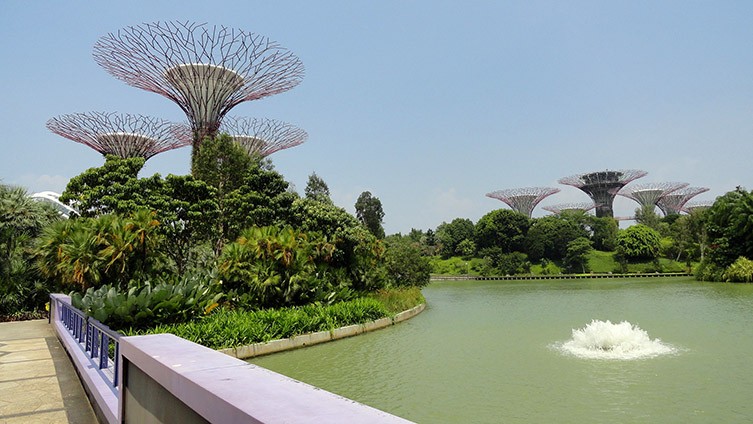
Singapore's Gardens by the Bay is a great example of a city bringing biodiversity into its centre. The tall structures pictured make up the sky garden's Supertree Grove. These vertical gardens are home to a wide variety of plants including orchids, vines and ferns. © Fabio Achilli ( CC BY 2.0 ) via Flickr
Trees in our streets also play their part, and a variety of tree species can have a profound effect.
'By increasing the diversity of trees on our streets we can create miniature forests,' Cecil explains. 'This has already started to be implemented in cities like Singapore, where they are mixing human structures with many different tree species.'
'These miniature forests in our cities create ecosystems, bringing a diversity of insect and bird species which, in turn, keep the trees healthy. If we allow ecosystems to flourish, we have to spend less resources on maintaining them.'
Cecil recommends going beyond creating pockets of nature within a city. He says, 'If we give space to natural processes and link up our green spaces, we can create flourishing and wild ecosystems in man-made environments. There were no sightings of the critically endangered smooth-coated otter in Singapore for decades. Now they are returning to the city, because of its dedication to nature.'
Green cities mean giving up some control of our surroundings - but for our long-term benefit.
'We need to get used to letting go and try not to manage everything. Some natural spaces are messy, but that's a good thing! Messy nature isn't just a great habitat for wildlife but it's good for children to play in. Children's depression and ADHD is on the rise and one of the reasons is our disconnect from nature.'
Simply having access to green spaces in cities can do wonders for our stress levels and concentration at work.
Cecil says, 'People need to interact with nature whenever the opportunity arises. Something as simple as a five- to ten-minute break during the workday can improve well-being and boost productivity.'
Democratising our green spaces
Right now, however, accessing to green spaces isn't universal - what's more, it can be a driver of inequality in our societies.
In 2008, a Lancet study by Dr Richard Mitchell and Frank Popham of 40 million British people found a link between income inequality, access to green spaces and life expectancy.
The study revealed that in rural areas with plenty of access to green spaces, the life expectancy of those on the highest and lowest incomes was roughly the same.
However, in urban environments, the gap in life expectancy was staggering. People on the lowest incomes living in cities are expected to live 10 years less than those on the highest incomes. This is due in part to the green spaces available to the richest people, who often live in open, leafy areas, while the poorest are often left living in overcrowded, heavily concreted areas.
Mitchell and Popham's results showed that as you move along an axis of increasing access to green spaces, the difference in life expectancy decreases. But the problem can't be solved just by creating green spaces in poorer areas.
Dr Matilda van den Bosch is a physician and an assistant professor at UBC, with a PhD in landscape planning and public health.
She says, 'It's not as simple as just creating green spaces in certain areas. The situation we have at the moment is that high-quality urban areas, with good access to nature, are more expensive to live in.'
'What's happening is that green spaces are being created, but suddenly those areas become more desirable and housing costs go up - often pricing out the people currently living there. It's a kind of green gentrification.'
'What we need is for there to be an effort to recognise that green spaces are vital for everyone, and that everyone should feel the benefit. Parks should be easily accessible, democratic spaces - somewhere you can go without the pressure to spend money, and meet people from all walks of life within your community.'
It will take some effort to truly bring nature into the heart of our cities, especially to sprawling urban jungles.
But there is plenty that all of us can do right now to protect what we have and encourage nature to flourish. By caring for and using the parks and green spaces near us, we show councils that these precious places are cherished.
You can also use your voice. Talk or write to those who oversee the public green spaces in your area - in the UK, this would be your local council and MP - about the changes you'd like to see. We all need to work together to create real change for people and the planet.
- Urban wildlife

Do your bit for nature
Small actions can make a big difference.
Here's how you can help protect biodiversity.

You are invited to make your mark in the Museum gardens
From sponsoring a square metre of garden to dedicating a bench to a loved one, a donation to the Urban Nature Project is the perfect way to show your love for urban wildlife.

Everyone should live within a 15-minute walk of nature
The UK government has released plans to restore the natural world.

Why we should rewild ourselves and the places we live
When we live alongside nature, we end up happier and healthier. We might even end up rewilding ourselves.

How listening to birdsong can transform our mental health
Listening to some bird song can help improve our mental health.
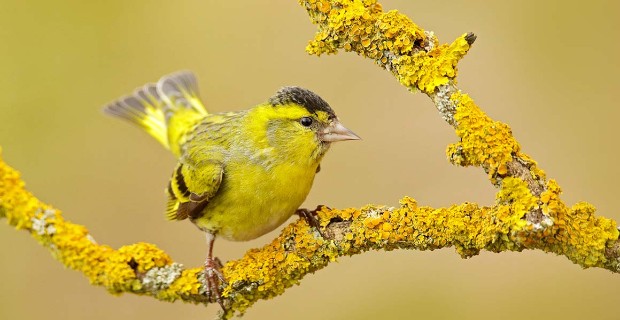
Nature and pollution: what lichens tell us about toxic air
Like small signposts, lichens can tell us a lot about the air we are breathing.
Don't miss a thing
Receive email updates about our news, science, exhibitions, events, products, services and fundraising activities. We may occasionally include third-party content from our corporate partners and other museums. We will not share your personal details with these third parties. You must be over the age of 13. Privacy notice .
Follow us on social media

10 Ways to turn a city green

The world has seen rapid growth in industrializations and population in the 20th Century that has impacted the world in various ways. We have seen urbanization become so rapid with growing industries and construction of buildings, due to which the environment has lost its greenery and even has made people so busy in their lives that they do not have time to interact with each other and have a peaceful time. The world has now become a concrete jungle with tall buildings standing at every corner of the street which also impacts the city conditions and also the mental health of the citizens due to lack of green space in the city. The dramatic climatic changes experienced globally, we as architects should work on creating green cities to restore the imbalance of extreme use of harmful substances in our environment while constructions.

10 following ways to turn a city green is a guide on how as individuals and as city builders we could work together to make the city greener and sustainable for living.
1. COMMUNITY GARDEN
Concrete buildings standing at every corner of the street with no green spaces in societies, the world has lost its soul. Building community parks in every society helps bring in soul to the environment and works as an interactive space for people in the community to come together and spend time together.
2. GREEN YOUR BUILDING
The concrete structures often look unattractive to the eyes and do nothing for the environment as well. Adding in green will attract wildlife and help the environment by emitting oxygen back in the air. Adding vegetation on rooftops and balconies will help in greening the city. adding in the plant even provides psychological benefits to the people.
3. SMART ENERGY POLICIES
Introducing Smart energy policies in the city will help the city turn greener. Renewable energy sources help in generating electricity and do not release harmful gases to the environment. solar panels installed on the roof, energy generated through wind and water, and energy through biodegradables help in keeping the environment eco friendly and benefit its people.

4. ENCOURAGE BICYCLING AMONG CITIZENS
The population is increasing day by day and hence the use of cars is also increasing which releases harmful gases in the environment. Creating bicycling lanes and encouraging people to use them helps create the city greener and keeps the user healthy as well.

5. REDUCE, REUSE AND RECYCLE
Recycling waste products and using them helps keep the city green and the environment eco-friendly by reusing the old products again in a creative way. Reducing the use of energy sources that releases harmful gases and pollutes the environment.

6. URBAN FORESTRY
Taking care of the urban plants and managing the tree populations in urban settings help in improving the environment and helps the city stay green. It improves the air quality in the surrounding. The act of urban forestry also helps improve the mental health of people in fast-paced life in the cities and even provides potential habitat for urban wildlife.
7. EFFICIENT PUBLIC TRANSPORT
Car transport has become very common around the world that causes traffic and releases harmful gases in the environment which also impacts human health and also affects city life by destroying peace. Fewer trees in the city also enhance the effect of personal transport in the city. By integrating efficient public transport reduces the release of gas in the surrounding and also saves time in reaching the destination due to less traffic.

8. QUALITY PUBLIC SPACES
Amid all the skyscrapers and busy roadways in the city, we need to build quality Public Spaces where people can take a walk and happily gather. A pedestrian path in the city encourages people to get around the foot, also reduces the need for large private dwellings by creating communal space for people to enjoy.
9. MIXED USE AND INFILL DEVELOPMENT
Good planning is the key to a green city. By making a space renovate or design for mixed-use for people and recycling the existing space that’s already woven in the urban fabric and making it easy to get to and get around for the people of the city. With this approach, it helps the people migrating to the city for jobs to have the opportunity to earn money.
10. GOOD GREEN FUN
The city life is considered to be busy hence when going green it does not only mean to make the city green and create parks but also create opportunities for the people to have fun while going green. celebrating eco-friendly lifestyles of the farmer’s market and exhibiting ecologically-minded artists that promote the idea of going green.

Bibliography:
- https://greenercities.org/green-city-guide/
- https://greentumble.com/5-ideas-to-green-up-your-city/
- https://www.treehugger.com/things-that-make-a-great-green-city-4859235
- https://www.smartcitiesdive.com/ex/sustainablecitiescollective/how-can-your-city-become-more-eco-friendly/1259526/

Areeba Rizwan is currently pursuing her Bachelors in Architecture. She is a travel enthusiast with an interest in learning about architecture through different mediums.An avid reader who likes to scribble her thoughts and ideas on paper and believes that architectural writing is an important part of learning.

10 Reasons to architects should practice for humanitarian architecture
PDD Group Ltd- 10 Iconic Products
Related posts.

Biomimetic Architecture; Back in time

Khayelitsha: Inside one of the biggest slums in South Africa

Luxury Housing and Sustainable Materials

Heritage Hotel: Gleneagles

Smart Cities: Integrating Technology to Enhance Urban Living

Sustainable Design Practices for Mixed-Use Public Spaces
- Architectural Community
- Architectural Facts
- RTF Architectural Reviews
- Architectural styles
- City and Architecture
- Fun & Architecture
- History of Architecture
- Design Studio Portfolios
- Designing for typologies
- RTF Design Inspiration
- Architecture News
- Career Advice
- Case Studies
- Construction & Materials
- Covid and Architecture
- Interior Design
- Know Your Architects
- Landscape Architecture
- Materials & Construction
- Product Design
- RTF Fresh Perspectives
- Sustainable Architecture
- Top Architects
- Travel and Architecture
- Rethinking The Future Awards 2022
- RTF Awards 2021 | Results
- GADA 2021 | Results
- RTF Awards 2020 | Results
- ACD Awards 2020 | Results
- GADA 2019 | Results
- ACD Awards 2018 | Results
- GADA 2018 | Results
- RTF Awards 2017 | Results
- RTF Sustainability Awards 2017 | Results
- RTF Sustainability Awards 2016 | Results
- RTF Sustainability Awards 2015 | Results
- RTF Awards 2014 | Results
- RTF Architectural Visualization Competition 2020 – Results
- Architectural Photography Competition 2020 – Results
- Designer’s Days of Quarantine Contest – Results
- Urban Sketching Competition May 2020 – Results
- RTF Essay Writing Competition April 2020 – Results
- Architectural Photography Competition 2019 – Finalists
- The Ultimate Thesis Guide
- Introduction to Landscape Architecture
- Perfect Guide to Architecting Your Career
- How to Design Architecture Portfolio
- How to Design Streets
- Introduction to Urban Design
- Introduction to Product Design
- Complete Guide to Dissertation Writing
- Introduction to Skyscraper Design
- Educational
- Hospitality
- Institutional
- Office Buildings
- Public Building
- Residential
- Sports & Recreation
- Temporary Structure
- Commercial Interior Design
- Corporate Interior Design
- Healthcare Interior Design
- Hospitality Interior Design
- Residential Interior Design
- Sustainability
- Transportation
- Urban Design
- Host your Course with RTF
- Architectural Writing Training Programme | WFH
- Editorial Internship | In-office
- Graphic Design Internship
- Research Internship | WFH
- Research Internship | New Delhi
- RTF | About RTF
- Submit Your Story
Looking for Job/ Internship?
Rtf will connect you with right design studios.

- Reykjavik, Iceland
- Vaxjo, Sweden
- Freiburg, Germany
- Oslo, Norway
- Copenhagen, Denmark
- Vancouver, Canada
- London, England
- Curitiba, Brazil
- Portland, Oregon
- San Diego, California
- What Makes a City Sustainable
- 5 Greenest US Cities
- Sustainability Defined
- Sustainable Urban Planning
- Desalination in San Diego, Israel, and Worldwide
- Featured Sustainable City: Chicago
- Featured Sustainable City: New York City
- Geothermal District Heating in Iceland
- London Olympics
- Paris: CRIT’Air
- Passivhaus in Vaxjo
- Recycling in Curitiba
- Featured Sustainable City: Vancouver and the GCAT
- The Greenest Town in Europe
- Featured Sustainable City: Austin
- Green City Solutions: Reykjavik
- Vancouver: Sustainable Transit Capital of North America
- Renewable Energy – Global Electricity Mix
- Breakthroughs in Solar
- The Average Payback Period for Solar Panels
- 3 Benefits of Solar Energy + Installation Tips
- Community Solar & Net Metering
- Topaz Solar Farm
- Ivanpah Solar Electric Generating System
- Kamuthi Solar Power Project
- Bhadla Solar Park
- 6 Reasons to Go Solar
- Breakthroughs in Wind
- London Array
- Anholt Wind Farm
- Amazon RE Projects
- The RISE of SOLAR
- Block Island and Future US Offshore Wind Farms
- Anaerobic Digestion and Waste-to-Energy
- Fuel Solution – Cellulosic Biofuel
- Gasification – Creating Syngas
- Algae – the Future of Biofuel
- HydroPOWER in the USA
- Hydrokinetic and Marine Energy
- Feed-In Tariffs, RPS, and Net Metering
- (The Small) Solar and Wind Energy Carbon Footprints
- The Bullitt Center
- The Cottle Home
- 5 Examples of Net Zero Buildings Around the World
- Net Zero Construction
- Sustainable Construction Management
- The 3 Best Ways to Reduce the Carbon Footprint in Your Home
- Creating A Carbon-Free Home
- Green Building Benefits
- Energy Star
- Home Energy Management
- Flow Meter Technology
- Home Energy Efficiency
- 14 Energy Saving Tips + Green Living Tips
- 10 Best Green Home Tech Items
- Designing Efficient Buildings
- Smart Meters Expanding Globally
- Microgrids: Powering the Future
Smart City Energy Infrastructure
- Do Cities Need to Change Infrastructure to Become Smarter?
- Demand Response
- 5 Ways Construction Companies Can Build Green
- Managing Construction and Demolition Waste Sustainably
- How to Sustainably Remodel Your Home: A Guide for Homeowners
- 10 Tips to Find an Eco-Friendly Contractor
- European Green Building
- District Energy
- 5 Advantages of LEDs
- Low-Carbon Solutions for Cement and Steel
- Reducing Emissions From Refrigerants
Clean Hydrogen Power
- 10+ Point Plan to Reduce GHGs
- Clean Energy Jobs Are UP
- Ambitious Net Zero Public Policy
- Shortfall in International NDCs
- International Methane Reduction Pledges
- Nationally Determined Contributions (NDCs) and International Net Zero Goals
- Sustainability Priorities for Energy, Pipelines, MORE…
- Global ICE Vehicle Phase-Out
- Coal-Fired Power Plant Phase-Out
How Safe & Clean is Nuclear Energy?
- Carbon Capture (CCS, DAC, & BECCS)
- Next-Gen Batteries
- Batteries – Climate Solution
- Smart Meters – Smarter Grid for the US, and the World
- Smart Meter Benefits to Energy Consumers and Utilities
- Smart Cities Contributing to Sustainable Development
- Carbon Tax – Pricing Pollution
- CHP – Making the Most of Energy
- Natural Gas vs. Coal
- Hydrogen Buses & H2BusEurope
- Low-Carbon Shipping Fuels and SAF
- Sustainable Mass Transit
- 5 Advantages of LED Lighting
- 10 Countries Accelerating EVs
EVs and the Future of Urban Transit
- E-mobility Trends
- Debunking Electric Car Myths
- Recycling Global Report Card
10 Ways to Reduce Food Waste
- 5 Types of Change in Climate
- Desalination – One H2O Solution
- Sustainable Agriculture
Regenerative Agriculture and Plant-Based Diets
- Climate Support: Reforestation
- Zero Waste Circular Economy
- Decoupling and Divestment
- Sustainable Waste Management
- The Best Waste Management Practices
- How Modern Technologies are Implemented in Smart Cities
- 10 Simple Steps To Living A Sustainable Lifestyle
- How to Live a More Sustainable Life
- Green City Times’ Sustainability Resources
- Next-Generation Batteries
- Combined Heat and Power (Cogeneration) – Making the Most of Energy
- ICE Vehicle Phase-Out
- Plus-Energy Homes in Vauban, Germany
- Passivhaus Construction in Växjö, Sweden
10+ IoT and Sustainability Technologies for Smart Cities
- Making Smart Cities Sustainable
- 5 Ways Smart HVAC Can Make Smart Cities More Sustainable
- Smart Cities – Sustainable Development
- IoT Technologies Implemented in Smart Cities
- Ride-Sharing – Eco-Friendly Choice
California – Current Progress of a Climate Champion
- Solutions to the European Gas Issue
- IoT Technology for Air Quality in Smart Cities
- ESG for Younger Generations
- Solar Panels Average Payback Period
- 12 Sustainable Lawn Alternatives to Grass
- 3 Ways to Inspire Sustainability-Minded Action
- Reducing Road Pollution
- Xeriscaping
- Making Cities a Haven for Wildlife
- Sustainable Pest Control
- Benefits of Green Spaces at Home
- 3 Tips to Enjoy A Fire Sustainably
- How to Make Your Fitness Routine More Eco-Friendly
- Social Enterprise Franchising
- Green E-commerce & Sustainable Packaging
- Green Signage for Sustainable Cities
Green City Times Online Magazine
Sustainability | Renewable Energy
Green CIty Times Online Magazine
10 ways to create green spaces for cities, eco-capital – oslo, norway, vauban and the plus-energy sun ship, 5 categories of change in climate, austin – a sustainable city, 10 countries promoting the use of electric vehicles, future generations of batteries, sustainable cities, profiles in sustainable cities – chicago, illinois, profiles in sustainable cities – san diego, california, modern sustainable waste management technologies, 10 sustainable technologies improving air quality in cities, paris climate accord – good news for the planet, plan for the expansion of smart meter infrastructure, e-mobility trends are decarbonizing transit, is nuclear energy necessary, climate action, climate solution – sustainable agriculture, sustainability priorities for coal, pipelines, more…, shortfall in international ghg reduction pledges, global climate action; ndcs and net zero targets, putting a price on carbon; carbon offsets, carbon tax – an essential levy on pollution, gct featured articles, 12+ ways you can help the environment, desalination: global clean water solution, economy vs. the environment, improving energy efficiency, articles featured, clean energy jobs are up, and re cost is down, breakthroughs in onshore and offshore wind energy, recycling – how we are doing as a global community; waste-to-energy, microgrids spread across africa, decoupling and divestment to reach sustainability; esg, car-sharing and ride-hailing, reforestation, using technology to provide clean water to cities, clean energy, isegs – a shining example of concentrated solar power (csp) in california, breakthroughs in solar photovoltaics and solar thermal, kamuthi solar project, bhadla solar park, and the largest solar pv farms in india and china, offshore wind farms in the united states | block island leads the way, energy saving ideas.
- Install double-pane windows in your home
- Use CFL or LED light bulbs
- Use Energy Star labeled equipment
- Turn off all home and office equipment when not in use, and use power strips for your electricity needs; consider a smart power strip
- Turn off lights when not in use
- Turn down the thermostat - lowering it by just one degree can reduce heating energy costs significantly; consider a smart thermostat
- Avoid unnecessary electricity loads (electrical equipment that still uses energy even after being turned off) by using a power strip
- Reduce your water heater temperature from 140 degrees to 120 degrees
- Consider a Home Energy Management system
- Weatherize and upgrade the insulation in your home
- Consider adding solar panels to your rooftop, or participating in a community solar program
Climate, Renewable Energy, and Sustainability Resources
- NOAA Climate
- NASA Climate
- Breakthrough Energy
- Yale Environment 360
- Yale Climate Connections
- MIT Energy Initiative
- MIT Climate
- Carbon Tracker
- Cleantechnica
- Renewable Energy World
- Renewable Energy Magazine
- Inhabitat
- DeSmog Blog
- The Climate Group
- Climate Central
- Climate Nexus
- Smart Cities Dive
- Ensia
- RMI.org
- climateaction.org and climateactiontracker.org
- insideclimatenews.org
- carbonbrief.org
- drawdown.org
Climate Action and International Climate Resources
- earthjustice.org
- citizensclimatelobby.org
- priceofoil.org
- sierraclub.org
- ucsusa.org
- greenpeace.org
- edf.org
- nrdc.org
- 350.org
- biologicaldiversity.org
- Climate Leadership Council
- UNFCCC
- Intergovernmental Panel on Climate Change (IPCC)
- IPCC Data Distribution Center
- European Commission (re: Climate Change)
- UN Global Goals for Sustainable Development
- International Renewable Energy Agency (IRENA)
Ideas for a Greener Lifestyle
- Reduce, reuse, recycle
- Bring reusable shopping bags with you to the grocery store or farmer's market
- Support your local farmer's market and buy seasonal farmed foods and produce
- Use eco-friendly cleaning supplies
- Favor cloth over paper products
- Choose natural lawn care instead of using pesticides and synthetic fertilizers
- Consider using biodegradable detergent and oxygen bleach
- Consider getting in the habit of using reusable mugs, thermoses, sports bottles, etc… daily
- Install low-flow toilets and water-saving faucets
- Consider bicycling instead of driving if possible...try biking to work or using public transit, where these alternatives are accessible
- Instead of a conventional car that relies on gasoline, consider a plug-in hybrid or a 100%-electric vehicle
Contact Us: [email protected]
© 2024 Green City Times™, LLC
About Us: about.me/gctimes
GCT – Sustainability | Renewable Energy 48658
Transgression or Restoration? A Critique of Calls for a Transgressive Urban Forest
June 6, 2023 – A 2022 essay in the Journal of the American Planning Association warns that our urban landscapes communicate a misleading sense of compatibility between cities and nature, and called for a transgressive approach. Sasha Colbert argues while a critique of ecological aesthetics is useful, the authors discount ecological function that differs from pre-settlement conditions, and ignore inequalities and injustices at the foundation of our ecological crisis.
Read more…
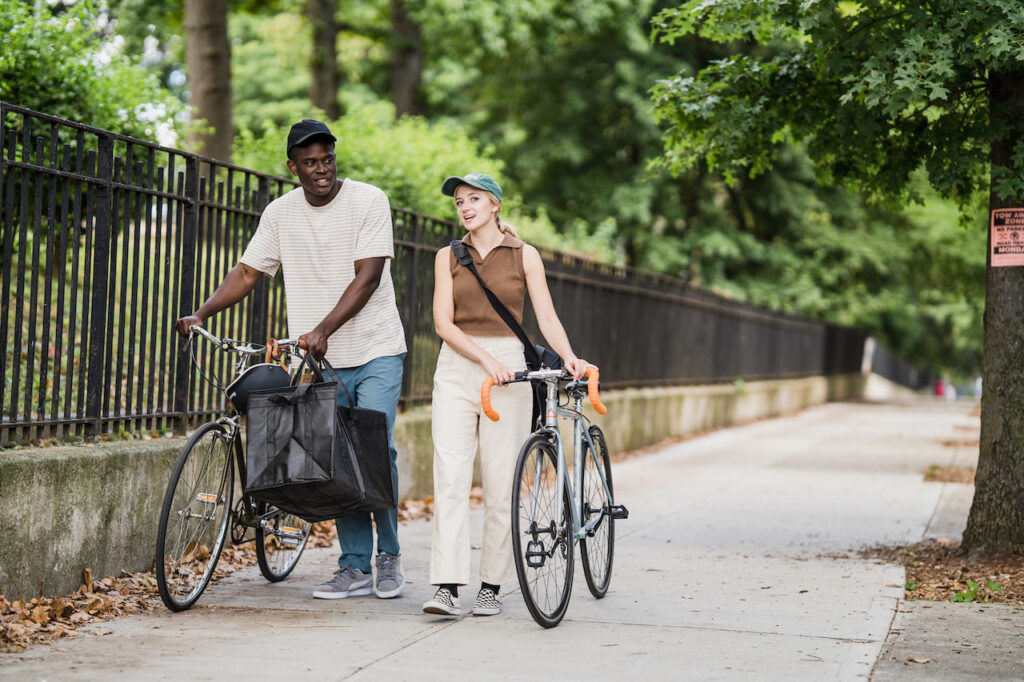
How can cultivating friendships in your community help you thrive?
May 30, 2023 – Research demonstrates that healthy, strong friendships help individuals thrive, and the physical environment can be designed to support interactions that lead to friendship. As Maria Vargas writes, Streets and sidewalks can be powerful spaces for community connections.

E-Commerce or Community? Rethinking the Land Use Debate Over Warehouses
May 23, 2023 – The growth in e-commerce has contributed to the growth of warehousing development in many regions, leaving many concerned about impacts on communities. But Bess Morin asks, “What values are communicated when investment goes towards warehousing and not towards fostering neighborhood social interaction?”

From Concrete to Oasis: The Cheonggyecheon and the Future of Urban Stream Restoration
May 16, 2023 – In addition to its role as a public open space in the midst of Seoul, South Korea, the Cheonggyecheon is a stream that provides a number of critical ecosystem services. As Jiyoon Kim writes, it also provides some important lessons about urban stream restoration.

The Thick Injustice of Park Inequity
March 21, 2023 – Racist housing, zoning and redevelopment policies and practices which have long been commonplace across the United States, have cemented inequities in green space access along racial lines. Graham Feltham writes that a radical re-organization of the urban framework is needed, if the injustices are ever to be rectified.
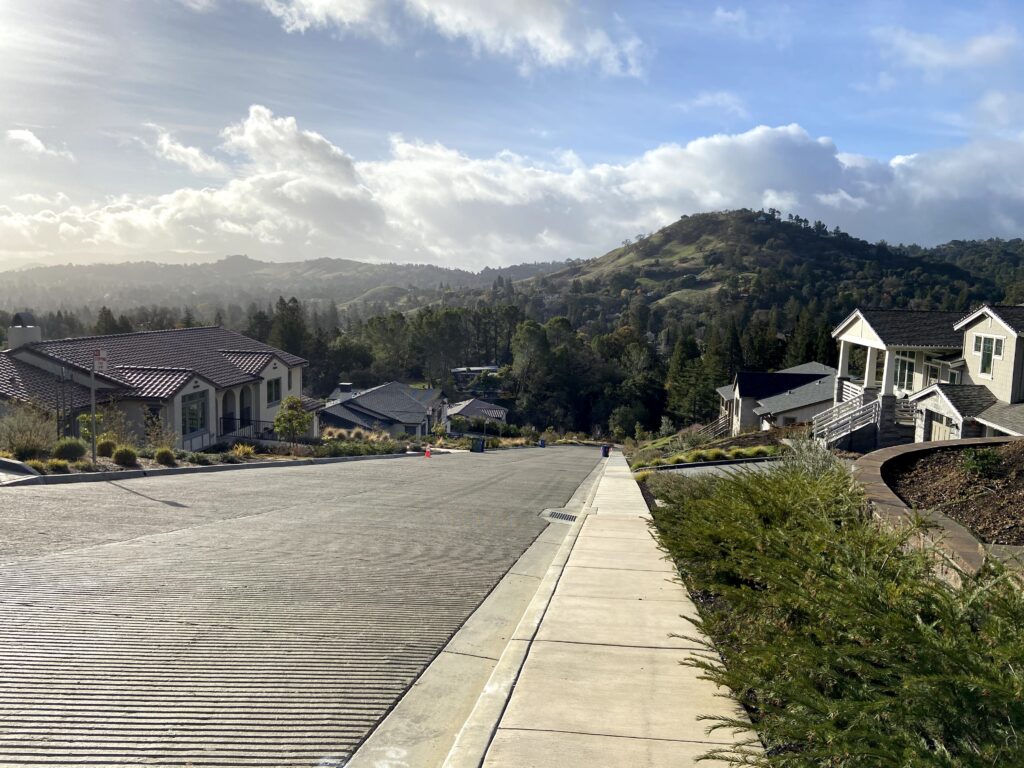
Homeowners Associations: Overcoming Barriers to Sustainability
March 14, 2023 – Homeowners Associations are often marketed as simple, community-based approaches to protecting home values and funding shared services. But as Rania Theodosi writes, being a member of an HOA may not be simple if the homeowner is environmentally-minded.
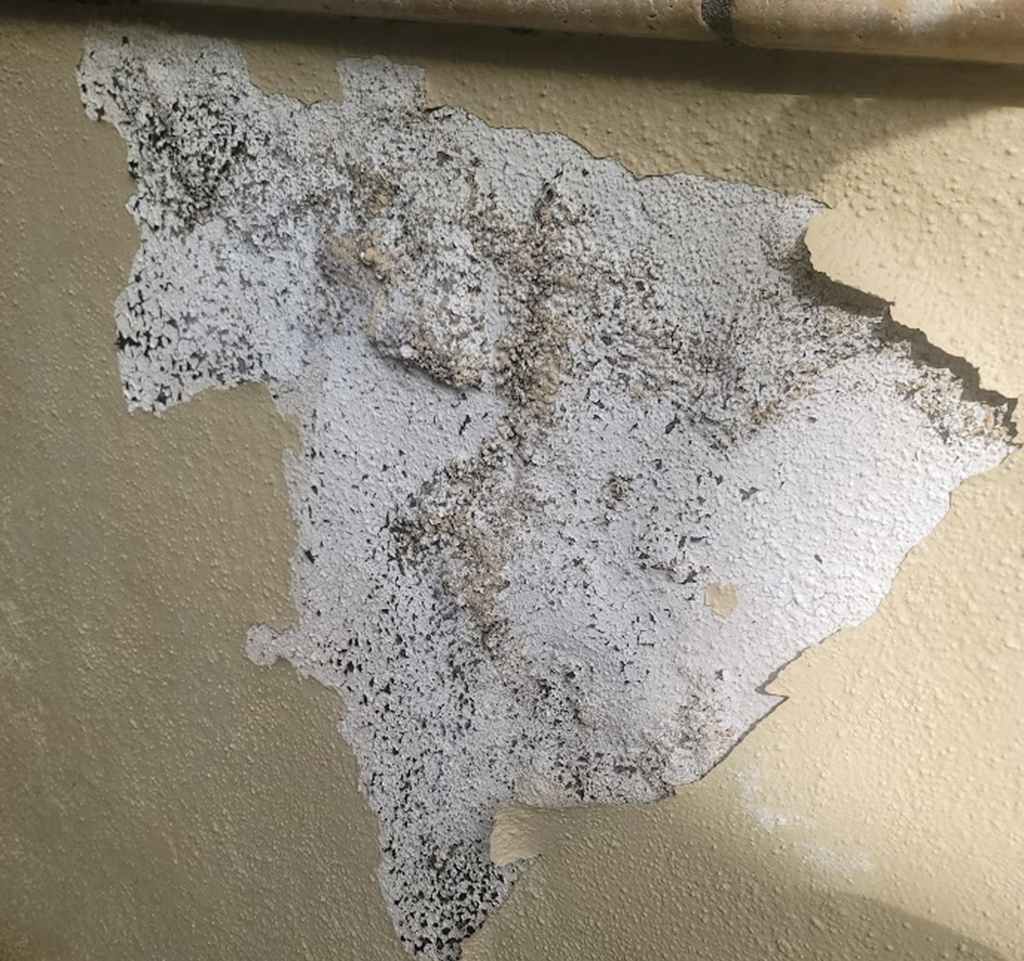
CalEnviroScreen’s New Lead Exposure Factor: What it Tells Us and What it Doesn’t
March 7, 2023 – California has made information about potential exposure to lead through their online pollution exposure tool, CalEnviroScreen. Clarence Vong examines the new factor, what it tells us about risk from lead exposure and what it doesn’t.
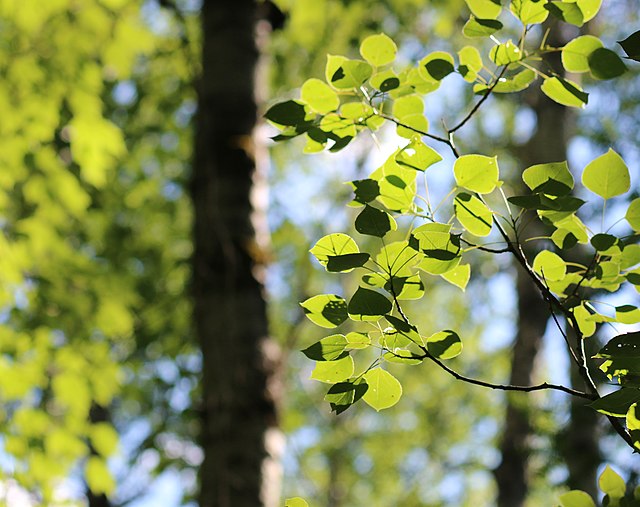
Meeting People Where They Are: An Intersectionality Approach to Equitable Access to Nature
February 28, 2023 – Many studies show that men visit natural environments more frequently than women, describing what some researchers call a “gender gap” in access to nature. But Karla Valdiviezo examines other demographic factors that reveal important differences in how people access nature.
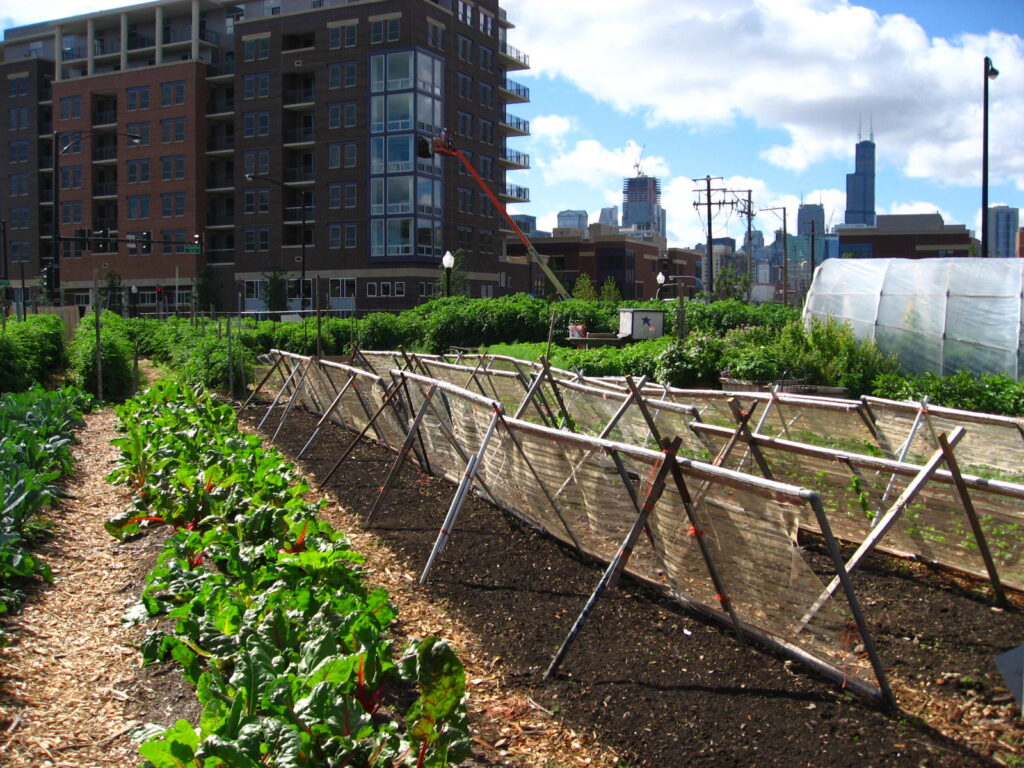
Green Gentrification: Do Gardens Drive Displacement?
February 21, 2023 – Cities across the United States are preparing to implement urban greening projects such as expanding park infrastructure and building up community gardens and farms. Atticus Lee examines whether these projects contribute to the concurrent crisis of gentrification and rising housing costs in urban America.
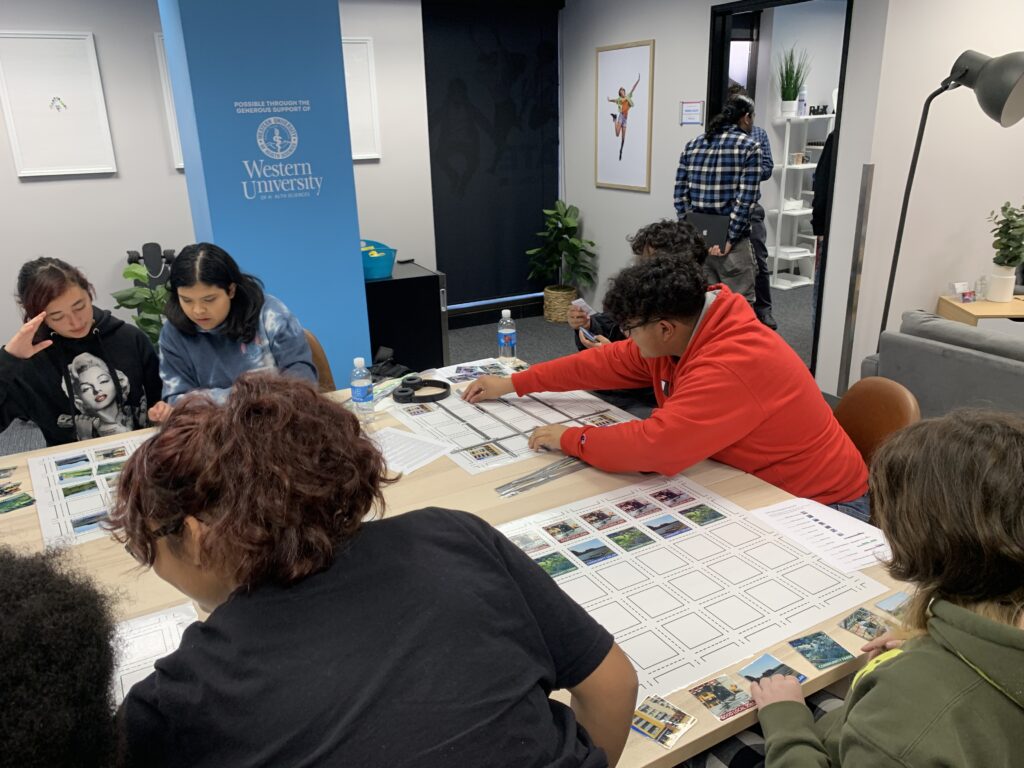
Finding Common Ground in an Anti-Intellectual World
February 14, 2023 – Designers, planners and community organizers need to relate to the communities in which they work. As Michael Gallagher writes, a growing trend toward anti-intellectualism in American society is making this more important, and more challenging.
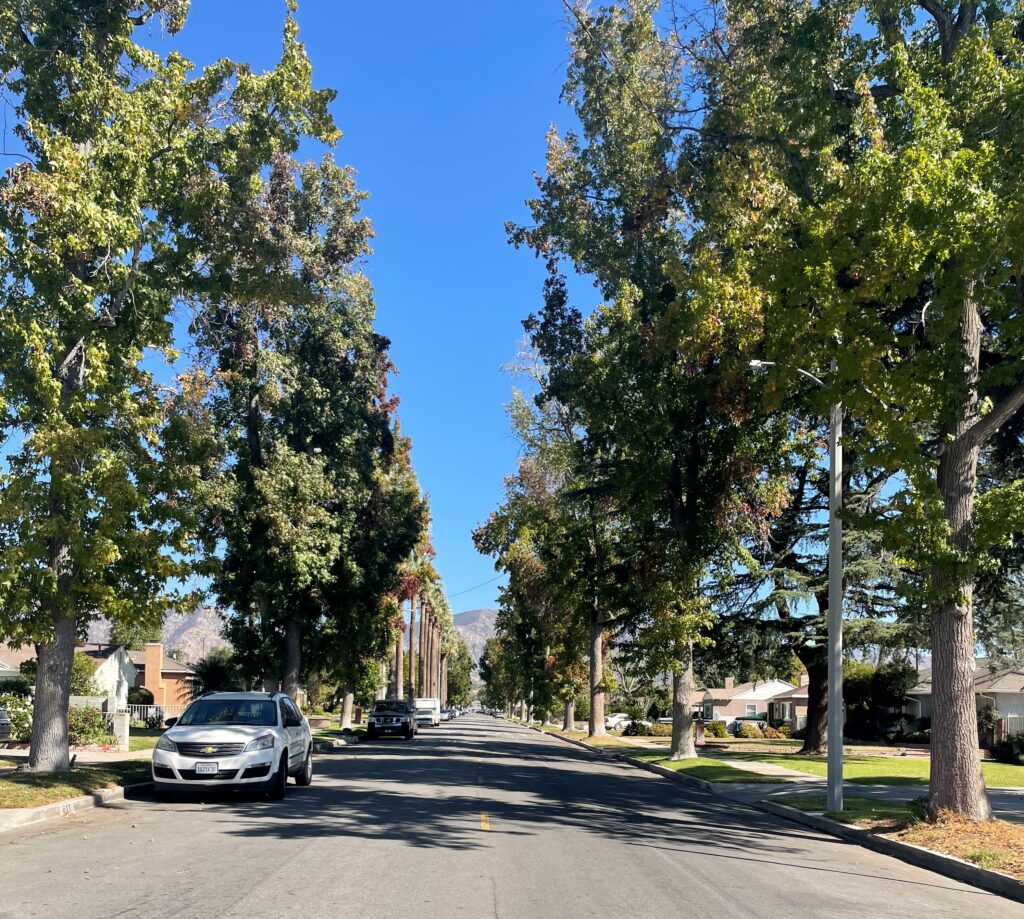
“Why Don’t you Want a Tree?” – Attitudes Toward Tree Planting in Urban Neighborhoods
February 7, 2023 – There are always people who are resistant to tree planting efforts, even in neighborhoods that have lacked substantial tree cover, and need more trees to combat the effects of climate change. Sahar Fazelvalipour shares new research that examines why people often resist these efforts and how peoples’ concerns might be addressed.
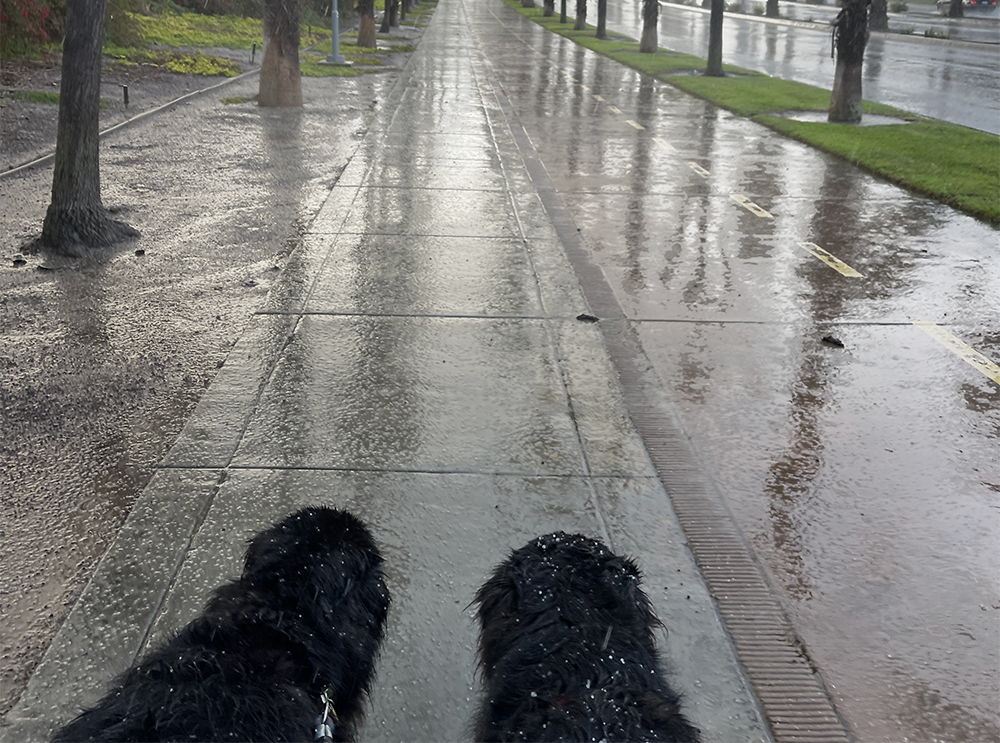
Resilience is the New Resistance: Re-Imagining Stormwater Infrastructure
January 31, 2023 – The Los Angeles River once flowed chaotically through a flood plain, before it was tamed into a concrete channel. Our refusal to accept the natural flow of water fits the classic definition of resistance. Jeanine Sharkey asks what if we could be resilient, and embrace the capacity to recover quickly from storms?
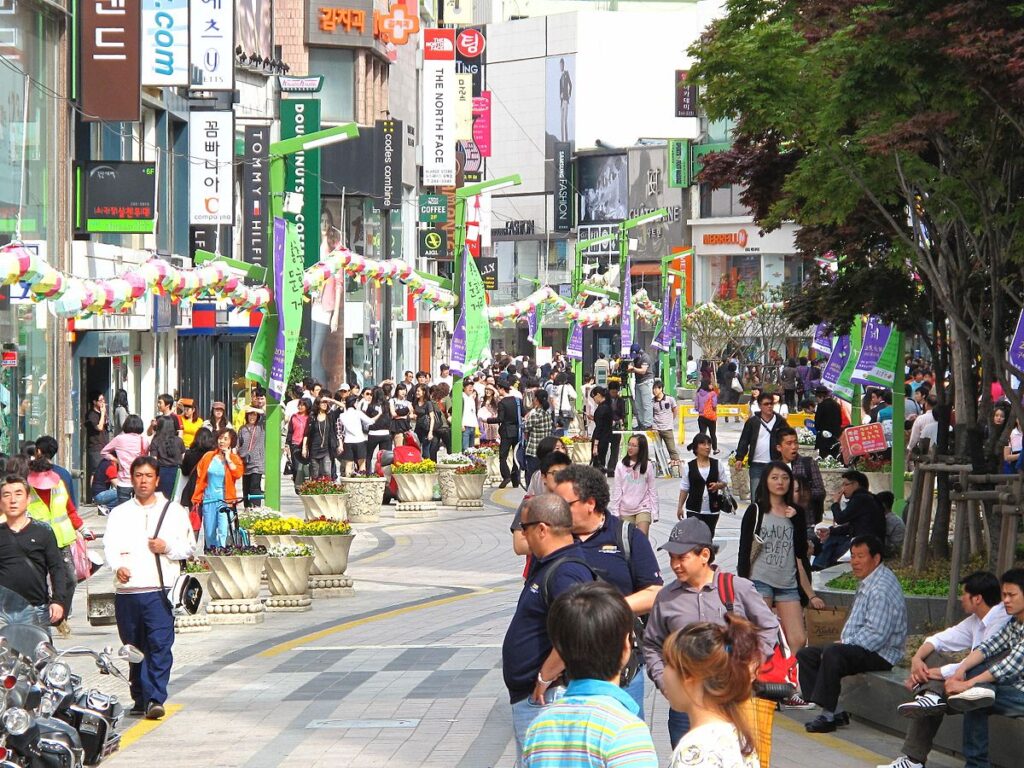
Lively Streets: Restoring Public Space and Public Life
January 25, 2023 – Active public spaces are crucial to community well-being, but how can design spaces to ensure their use? As Chris Otte describes, recent research reveals ingredients that greatly increase the likelihood of creating lively streets in urban communities.
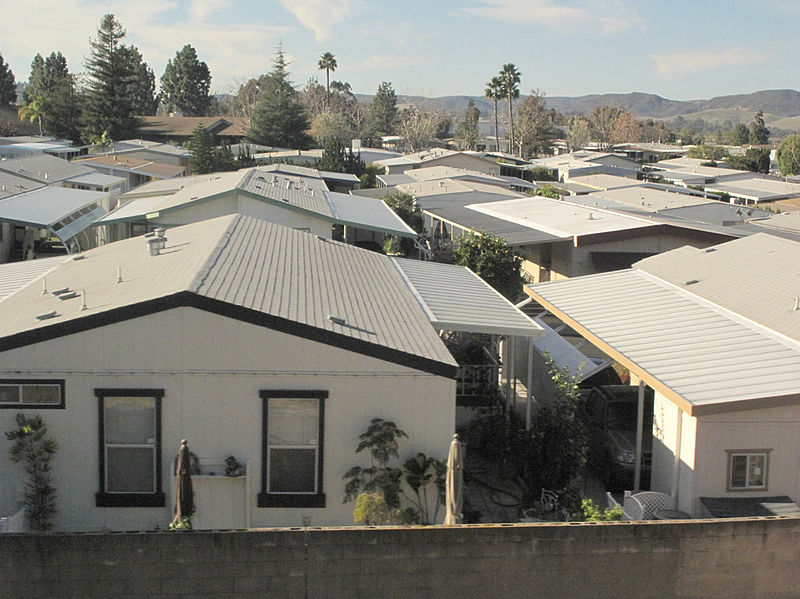
Here to Stay: Mobile Home Parks for Affordable Home Ownership
June 6, 2022 – For many low-income families looking to own their own home, one option is to purchase a mobile home. As James Kingsbury writes, improving the access of mobile home parks to transportation, recreation, and employment can help low-income families build wealth and create a more equitable future.

A Community to Call Home
May 31, 2022 – Where and how the abuelos (grandparents) are going to spend their golden years is a common issue among first-generation Latino families in Southern California. A critical issue communities must address is how neighborhoods will accommodate and encourage aging in place. As Ernesto Perez writes, addressing this challenge will not only help our elders, but will provide amenities for the entire neighborhood for generations to come.

The Labor behind our landscapes: Communication between Design Professions and Landscape Workers
May 25, 2022 – As a Landscape Maintenance Foreman and Landscape Architecture graduate student, Eduardo Baca has witnessed a disconnect between those who design landscapes, and those who install and maintain them. He argues that involving installation and maintenance professionals in the decision-making process will tap into tremendous experiential knowledge, resulting in better designs.

Reimagining Health Care in Community Design and Planning
May 20, 2022 – As we witness prominent disparities in COVID-19 infections, practitioners and communities have been examining infrastructural changes that perpetuate health disparities. Glynda Tucker writes that reimagining health care around community-based strategies delivers equitable health services that are trusted, affordable, nearby and culturally resonant.

Unsettled Futures: Decolonization for a Just and Sustainable World
May 17, 2022 – Given our global environmental crises, many are turning to Traditional Ecological Knowledge to learn how to live sustainably. However, Robert Douglass writes that our actions have the potential to perpetuate injustices rather than correct them. Until we intentionally take actions for Indigenous livelihoods, we cannot achieve the vision of a sustainable and just future.

Dark Nights for the Soul: Fading Skies, and the Regenerative Potential of Natural Darkness
May 6, 2022 – Light pollution deprives millions of people access to natural darkness, with significant biological and cultural impacts. Lani MacLean writes that darkness has the potential to regenerate our mind and body, and restore our universal perspective to life on earth.
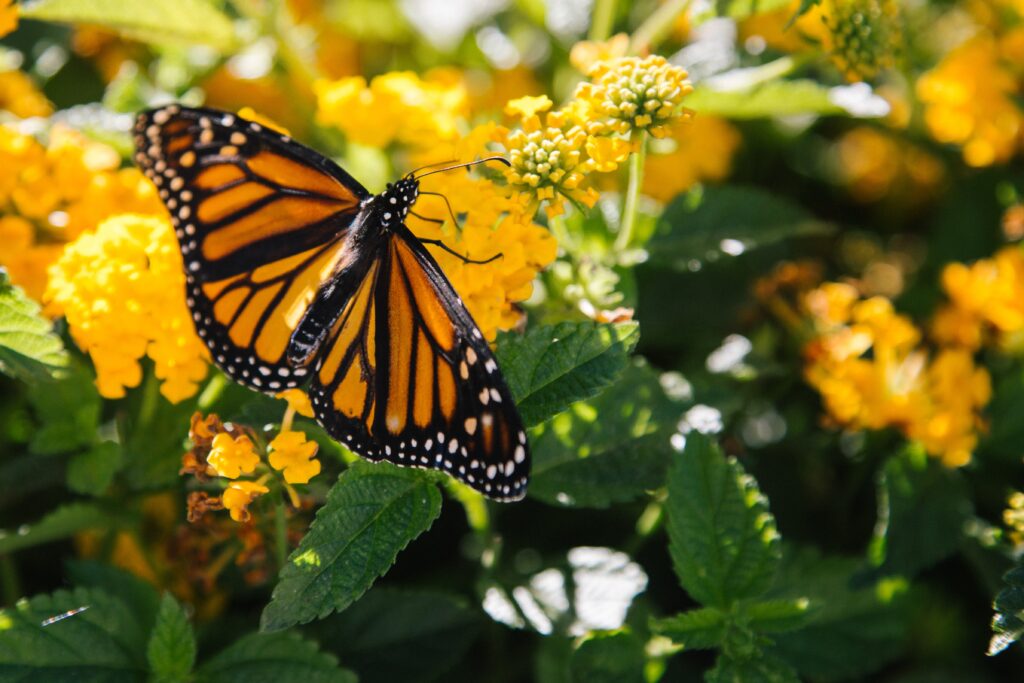
Reconciliation Ecology: Protecting Monarch Butterflies in Southern California
April 19, 2022 – Like many species, sprawling urbanization has destroyed and degraded much needed habitat for the Monarch Butterfly, and brought inhospitable conditions due to the use of herbicides, insecticides, introduced predators and other human impacts. Carolin Khanlari outlines some common-sense protection strategies to protect this treasured species.

Catalyzing Health and Wealth: Rebranding Gentrification
March 25, 2022 – When discussing the concept of gentrification, there is a polarizing argument around its benefits and costs. Hector San Martin argues that we should view gentrification as a catalyst for health and wealth for existing residents.

Mending the Fabric of Community: Breaking the Cycle of Incarceration and Homelessness
March 1, 2022 – Formerly incarcerated people are more vulnerable to homelessness, and homeless individuals are more vulnerable to incarceration. Eddie Meyerholz writes that this vicious cycle must be broken if we are ever going to mend the fabric of our communities.
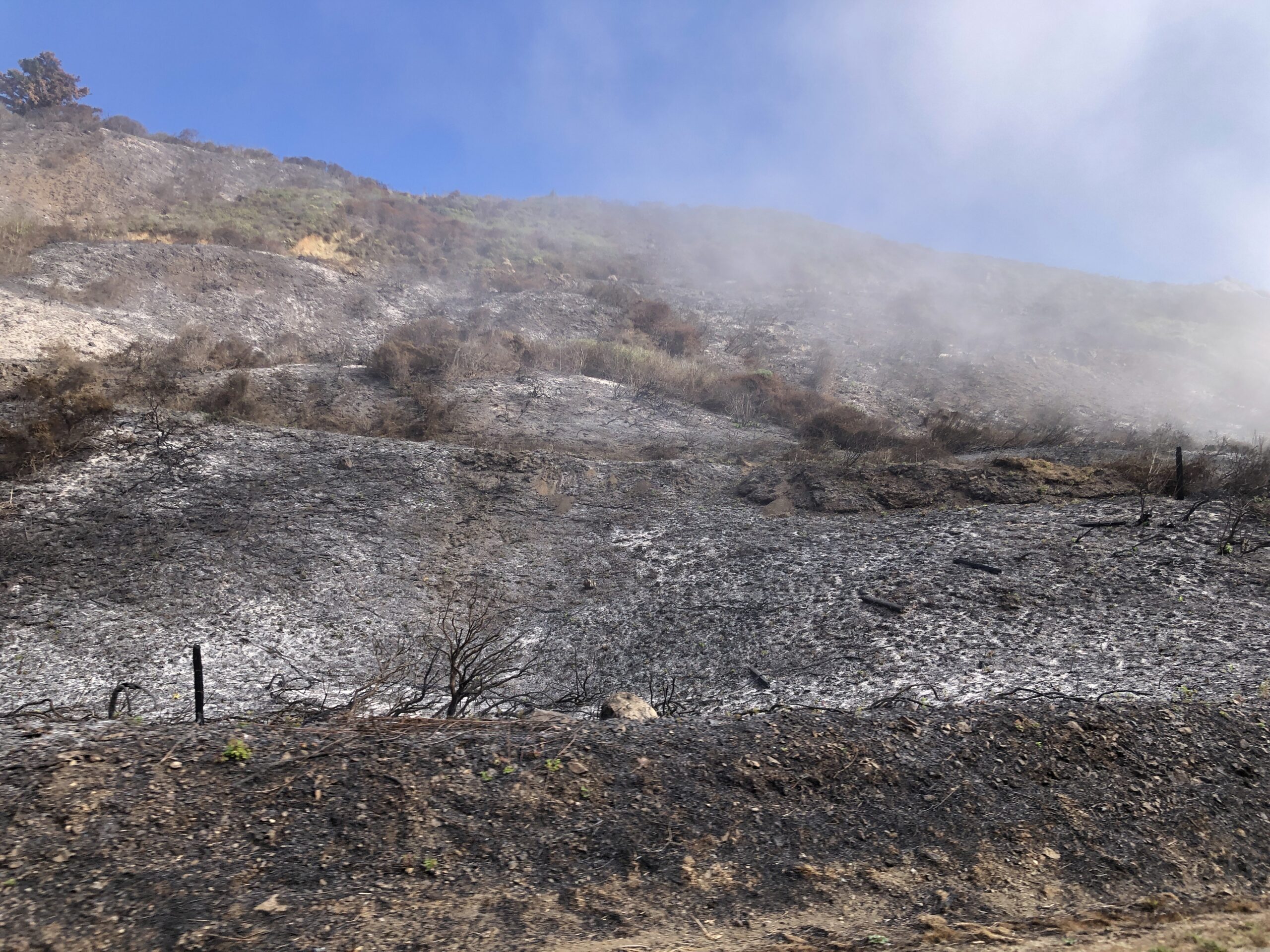
Fighting Fire with Fire: The Role of Traditional Ecological Knowledge in Managing the Wildland Urban Interface
February 15, 2022 – Climate change, expanding populations, and invasive plants are contributing to an increase in fire ignitions. So how can we protect vulnerable communities? Neil Heacox writes that traditional ecological knowledge from Indigenous Californians may be a solution.
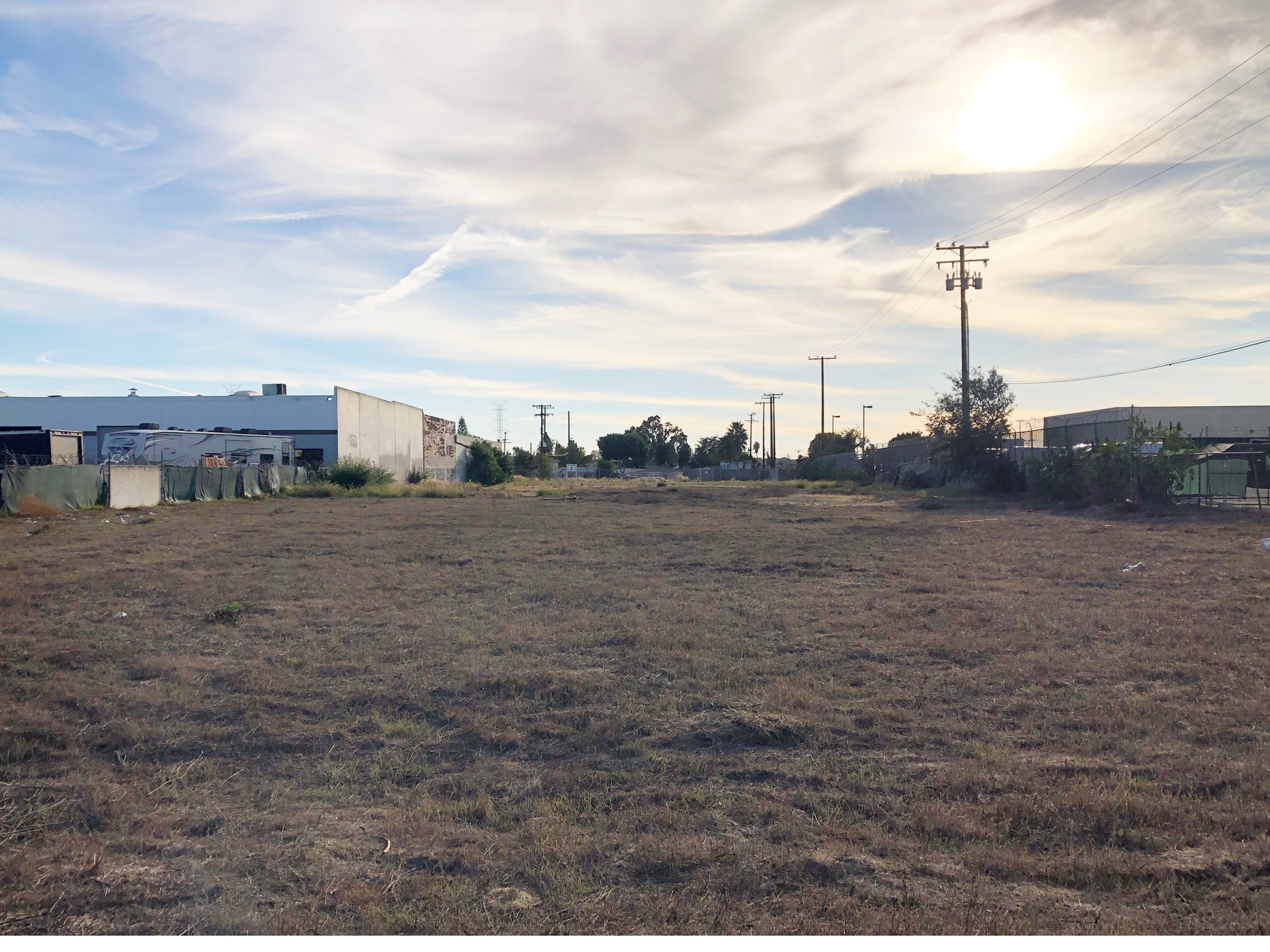
Dreaming of Los Angeles’ Vacant Lots as Bits of Nature
February 8, 2022 – There are approximately 2,000 city-owned vacant lots in Los Angeles. Macy Dreizler’s dream is to apply urban conservation tactics to transform them into vegetated habitat patches that enrich urban biodiversity and provide residents with opportunities for recreation and connection with nature.

Urban Forest Resiliency: Supporting Southern California’s Trees Through Drought and Extreme Heat
February 1, 2022 – Drought and extreme heat challenge the longevity of trees and their ability to offer multiple benefits. Fortunately, as Mina Lai writes, there are tangible steps community members can take to support their neighborhood’s trees through such conditions.

Property or Person? Rights of Nature as a Pathway to a More Just World
January 25, 2022 – Much in the same way corporate personhood works to protect the rights of corporations, environmental personhood is seen as a way to extend legal protections for natural entities such as rivers, lakes, or ecosystems. Hannah Kaiser writes that nature-based, rather than property-based conceptions of the world have the potential to re-frame discussions on environmental justice, climate change, and human rights.
Past Articles…
The capstone graduate studio in the Department of Landscape Architecture at California State Polytechnic University, Pomona (Cal Poly Pomona), has over 40 years of experience providing technical assistance to communities throughout California and around the world. Founded by Professor John T. Lyle (1934-1998), the studio has always sought to promote regeneration and resiliency, in response to pressing environmental challenges. Part of the process includes original writing by students on issues of central concern to their projects. This site will be used to share their work. Stay tuned for articles concerning transit, landscapes for climate change mitigation, neighborhood walkability, urban regeneration, green jobs, housing, and more. Our hope is that you will enjoy and share these works, as we expand the dialogue about community resiliency in the face of climate change.
Book Review Essay Understanding the Legacy of Philadelphia's “Greene Country Towne”
Article sidebar, main article content.
Urban growth in Philadelphia ignited new attitudes about the value of green space. In the early decades of the city, elites sought to privatize access to nature. Ironically, however, the private villa estates of the wealthy eventually became the starting point for a city-wide park system available to all. Public access to green space became enshrined as a right of citizenship.
Article Details
Pennsylvania History is the official journal of the Pennsylvania Historical Association, and copyright remains with PHA as the publisher of this journal.
English Compositions
Essay on Keep Your City Clean [With PDF]
Hygiene plays an important role in the lives of one and all. In this lesson, you will learn to write essays in two different sets on keeping your city clean. It will help you in articulating your thoughts in the upcoming exams.
Table of Contents
Essay on keep your city clean in 200 words, essay on keep your city clean in 500 words.
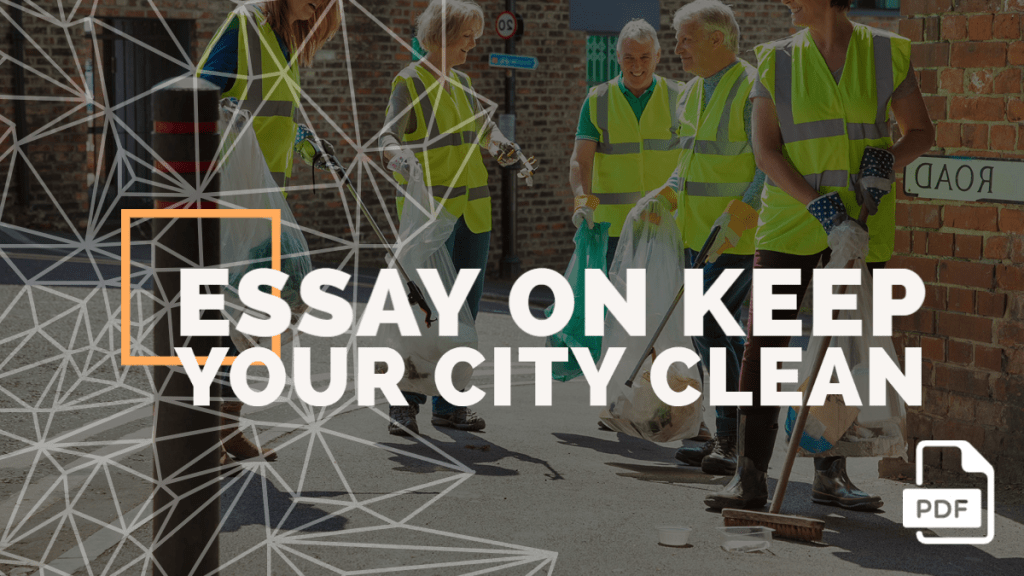
Hygiene is essential for the well-being of an individual and a nation. For a nation to thrive, it is essential to keep your city clean. Narendra Modi’s Swacch Bharat Abhiyan focuses on certain sectors to promote hygiene and curb disease.
Wastes can be classified into many types. There are industrial, domestic, medical and sewage wastes. These wastes, if segregated and handled wisely, can be put to reuse and recycled. The Van Mahotsav is observed every year to promote afforestation and make people aware of the harmful effects of deforestation.
To keep our city clean, we must ban the use of plastic. We should follow the 4Rs policy to reduce, reuse, recycle, and restore. We must plant saplings and gather in small groups to educate the layman about the necessity of keeping our city clean.
We must adhere to the maxim, “Godliness is next to Cleanliness.” If we keep our city clean, positivity will boost in all its nooks and corners. It will lead to economic growth and healthy citizens. It will also cause a decrease in the number of hospitalisations every year. Diseases that are air and water-borne will come under control. Everyone will live a happy and healthy life.
We should keep our cities clean to have a healthy and standard lifestyle. Hygiene is essential for the well-being of an individual and a nation. It is the responsibility of every individual, and as we keep our homes clean, so shall we keep our cities clean. For a nation to thrive, it is essential to keep your city clean.
Narendra Modi’s Swacch Bharat Abhiyan focuses on certain sectors to promote hygiene and curb disease. The Van Mahotsav is observed every year to promote afforestation and make people aware of the harmful effects of deforestation. These programs direct us to plant trees and collect litter for proper disposal on a particular day. However, we need to bear in mind the need to do it regularly.
We must adhere to the maxim, “Godliness is next to Cleanliness.” If we keep our city clean, positivity will boost in all its nooks and corners. It will lead to economic growth and healthy citizens. It will also cause a decrease in the number of hospitalisations every year. Diseases that are air and water-borne will come under control. Everyone will live a happy and healthy life. It will help in the overall development of our country, and people will become more thoughtful and conscious of their responsibilities.
Many places in my city Kolkata lack proper drainage systems. During the monsoon season, the roads are flooded with muddy water and causing stagnation. Stagnant water breeds mosquitoes and flies. It can cause various infections and skin diseases, or allergies. Loss of biodiversity is a major loss for our environment, which is caused due to mismanagement of waste.
Spitting in public places is a sickening sight that we witness every day on roads, stairwells, parks, subways and metro stations. It is disgusting and uncivilised. Citizens lack awareness, education and culture. Imbibing these qualities and making them literate shall help overcome their urge to cause a nuisance. We must work hard to make the City of Joy a clean place.
There is a need to remodel the public transport as they are so old that they release soot and toxic gas causing air pollution. It causes lung cancer, asthma and allergies. Keeping our city clean will keep us proactive and healthy. A lack of public toilets also causes a lot of pollution, stinking odour and breeding of mosquitoes.
A tremendous amount of waste has been generated from construction work. It can be overcome or reduced to a great degree by making the process faster. Installation of dustbins in a public area shall take us a long way in maintaining hygiene. Along with the government, each citizen must work in a collective spirit to keep our cities clean. It is truly said that a green city is a clean city.
Hopefully, after going through this lesson, you have a holistic idea of the importance of keeping your city clean. I have tried to cover every aspect of the topic briefly and in an expanded form. If you still have any doubts regarding this session, kindly let me know through the comment section below. To read more such essays on many important topics, keep browsing our website.
Join us on Telegram to get the latest updates on our upcoming sessions. Thank you, see you again soon.

Ask Ornstein - Barca links to Diaz? Will PL scrap VAR? Gordon's future?
Once a week for an hour, The Athletic’s subscribers can ask our football insider for his views on anything from the world of football
What next for Bruno Fernandes and Manchester United?

If Arsenal lose the title race on Sunday, these are the games that cost them

How the crisis gripping 777 Partners is affecting the clubs in their portfolio

Should Premier League clubs vote to scrap VAR? The case for and against the system

The End Of VAR?

The VAR incidents that upset Premier League clubs and the big calls it got right
We take a look at the key controversial VAR incidents in the Premier League this season and the reactions to them
Challenges, communication and 'umpire's call': What other sports can teach football about VAR

Premier League clubs to vote on scrapping VAR

Advertisement

The rage of Ange Postecoglou - what was he actually angry about and how have Spurs reacted?
Tottenham's 2-0 defeat to Man City dented Arsenal's title bid, but also ended their own Champions League hopes - now comes the fallout

Chelsea excel as uncertainty reigns - getting rid of Pochettino now would be a huge call

One of those nights threatens to become one of those seasons for Newcastle

The Premier League club who had a parade... for avoiding relegation

A 1989 Liverpool kit and Beckham’s underpants: Why U.S. investors have bet £30m on retro football shirts

Advantage Chelsea in the WSL title race - the pressure is on Bunny Shaw-less Man City
Title Race Finale

Analysing the saves (yes, two) that might have won Manchester City the title
The body position, the technique, the timing. Ortega's saves were pivotal — they may just have won the league for City

The Premier League title permutations - how Manchester City and Arsenal can become champions

Manchester City's dominance is distorting football fandom

Manchester City finally have their 'moment' courtesy of Stefan Ortega

Watching Arsenal fans cheer on Tottenham - 'It's unique, but we're Spurs for 90 minutes'

Four very good reasons winning four straight titles is so difficult
Around The Premier League
The pressure and risk was all self-inflicted at Old Trafford. Manchester United were there for the taking. But again Newcastle faltered

Explaining Brighton fans' deep dislike of Chelsea — a very modern football hatred

Why Palace's manager, sporting director and best players might choose to stay this summer

Brentford's player of the season: Vitaly Janelt

Forest escaped. Just. But will it be a turning point like it was for Villa and Brighton?

Aston Villa are in the Champions League - this is how they will benefit financially
The Real Jurgen Klopp

The Real Jurgen Klopp, part 1: The 'normal guy from the Black Forest'
In the first part of a special series marking the Liverpool manager's departure, Oliver Kay travels to his childhood home in Germany
The Real Jurgen Klopp, part 2: The powder keg

The Real Jurgen Klopp, part 3: The one-man brand

The Real Jurgen Klopp, part 4: Liverpool's champion

Man United's Struggles

Has Erik ten Hag found a way to make Man Utd more watertight for their last three games?
A more controlled display against Arsenal can provide a blueprint for how United approach the FA Cup final a week on Saturday

Manchester United problems have lasted 'too long' - David Beckham

Casemiro's week of Man Utd mistakes dissected - and what it says about his game

Man Utd cancel end of season awards dinner after disappointing campaign

Why it hasn't worked for Erik ten Hag at Man Utd: Tactical compromises and a distinct lack of confidence

Has Ten Hag become part of the problem at Manchester United?
Mbappe Heading To Madrid?

Mbappe leaves PSG as their greatest talent - but not universally loved
The last few chaotic days sum up striker's soap opera existence in his home city – and the conflicting views of him
Kylian Mbappe: The incredible, inevitable rise of a superstar as he leaves PSG

Mbappe will leave PSG – what does this mean for him, the club and Real Madrid?

A1: Today's Must-Read
Behind the scenes at Monday Night Football: Data, dedication and a massive screen

Most Popular
The rage of Ange Postecoglou – what was he angry about and how have Spurs reacted?

The Premier League club who had a parade… for avoiding relegation

Barcelona links to Luis Diaz? Will PL scrap VAR? Anthony Gordon’s future? Ask Ornstein

Chelsea excel as uncertainty reigns – getting rid of Pochettino now would be a huge call

If Arsenal lose the title race, these are the games that cost them

The Proliferation of Starbucks Across the United States: a Detailed Analysis
This essay about Starbucks explores its evolution from a small coffee shop in Seattle to a major cultural and economic force in America. It highlights how Starbucks has influenced coffee culture, consumer behavior, and social practices, while also addressing the criticisms related to environmental issues and business practices. The essay reflects on Starbucks’ broad appeal and its role as a symbol of lifestyle and community in the U.S.
How it works
In the rich mosaic of American coffee culture, Starbucks emerges as a vibrant highlight. From the energetic avenues of New York City to the tranquil neighborhoods of Oregon, Starbucks’ familiar green emblem serves as a magnet for coffee lovers throughout the nation. Yet, the rise of Starbucks from its modest beginnings to a global powerhouse is more than a story of growth—it represents a profound shift in cultural values, economic impact, and social evolution.
Picture yourself in 1971, at a quaint coffee bean shop in Seattle’s Pike Place Market.
This small enterprise would soon evolve into a vast coffee empire, spreading over 15,000 outlets nationwide. Starbucks has become more than a place to buy coffee—it has grown into a cultural phenomenon, offering a space for productivity, social interaction, and the inviting aroma of freshly brewed coffee.
Starbucks’ distinction lies in more than just its coffee; it’s about the experience it offers. Entering a Starbucks, one is immediately wrapped in the comforting scent of coffee beans, the soft murmur of conversations, and the cozy ambiance created by stylish lighting. It provides a haven not just for travelers or students, but for anyone seeking a moment of peace.
Starbucks’ menu has grown to appeal to a broad audience, featuring everything from rich Frappuccinos to savory pastries. Seasonal offerings like the Pumpkin Spice Latte and the Peppermint Mocha have become cultural icons in their own right, signaling the arrival of holiday seasons and new traditions.
However, it’s not just the products that make Starbucks a powerhouse; it’s its branding. The iconic green mermaid logo symbolizes more than just coffee—it represents a standard of quality, a sense of belonging, and a distinct lifestyle. Starbucks transcends being a mere coffee shop; it’s a part of daily life and a marker of social identity.
Yet, success brings its own set of critiques. Some criticize Starbucks for its aggressive expansion and its impact on local cafes. Environmental concerns about waste and sustainability are also at the forefront of discussions, alongside debates about ethical labor practices in its supply chain.
Despite these issues, Starbucks has engaged in significant initiatives that reflect its commitment to community and environmental responsibility. Programs like the Starbucks College Achievement Plan highlight its focus on employee benefits, while its efforts in sustainable sourcing and energy conservation demonstrate its environmental commitment.
Ultimately, the narrative of Starbucks in America is a complex one, interwoven with successes and setbacks. It reflects the essence of innovation, the impact of strategic branding, and the changing preferences of consumers. Loved by many and criticized by some, Starbucks remains a pivotal element of American coffee culture, continually shaping and reflecting our society’s evolving tastes and values.
Cite this page
The Proliferation of Starbucks Across the United States: A Detailed Analysis. (2024, May 12). Retrieved from https://papersowl.com/examples/the-proliferation-of-starbucks-across-the-united-states-a-detailed-analysis/
"The Proliferation of Starbucks Across the United States: A Detailed Analysis." PapersOwl.com , 12 May 2024, https://papersowl.com/examples/the-proliferation-of-starbucks-across-the-united-states-a-detailed-analysis/
PapersOwl.com. (2024). The Proliferation of Starbucks Across the United States: A Detailed Analysis . [Online]. Available at: https://papersowl.com/examples/the-proliferation-of-starbucks-across-the-united-states-a-detailed-analysis/ [Accessed: 17 May. 2024]
"The Proliferation of Starbucks Across the United States: A Detailed Analysis." PapersOwl.com, May 12, 2024. Accessed May 17, 2024. https://papersowl.com/examples/the-proliferation-of-starbucks-across-the-united-states-a-detailed-analysis/
"The Proliferation of Starbucks Across the United States: A Detailed Analysis," PapersOwl.com , 12-May-2024. [Online]. Available: https://papersowl.com/examples/the-proliferation-of-starbucks-across-the-united-states-a-detailed-analysis/. [Accessed: 17-May-2024]
PapersOwl.com. (2024). The Proliferation of Starbucks Across the United States: A Detailed Analysis . [Online]. Available at: https://papersowl.com/examples/the-proliferation-of-starbucks-across-the-united-states-a-detailed-analysis/ [Accessed: 17-May-2024]
Don't let plagiarism ruin your grade
Hire a writer to get a unique paper crafted to your needs.

Our writers will help you fix any mistakes and get an A+!
Please check your inbox.
You can order an original essay written according to your instructions.
Trusted by over 1 million students worldwide
1. Tell Us Your Requirements
2. Pick your perfect writer
3. Get Your Paper and Pay
Hi! I'm Amy, your personal assistant!
Don't know where to start? Give me your paper requirements and I connect you to an academic expert.
short deadlines
100% Plagiarism-Free
Certified writers

COMMENTS
What is a Green City? SDG 11 defines sustainable cities as those dedicated to achieving green sustainability, social sustainability, and economic sustainability. In this essay, author Paul James outlines the origins of the 'Green City' concept and the urgent need for cities to embrace positive sustainability measures. five approaches to.
The "green city" refers to a strategy for improving urbanized regions' sustainability. It is a strategy for city planning that focuses on the ecosystem goods and services that green infrastructure could provide. ... After reaching an agreement on which papers should be marked with green, red, or orange colors, we further elaborated on the ...
This goal can be achieved through a series of initiatives aimed at the minimization of the negative effects of the growing population density and the maximization of the efficiency of resources and services in the areas. The purpose of this report is to discuss three urban sustainability strategies focusing on transportation means, built ...
A vertical forest in Milan, Italy. Credit: Getty. The Living City: Why Cities Don't Need to Be Green to Be Great Des Fitzgerald Basic Books (2023). Age of the City: Why our Future will be Won or ...
The World's Most Improbable Green City. Visitors peer over Dubai from an observation deck at the Burj Khalifa, the world's tallest skyscraper at 2,717 feet (828 meters). Dubai aims for ...
Stadt proposals for green parks, wide sidewalks and car-free zones at the city centers would also implement walkable street policies. In integrated development, reduction in urban sprawl has been ...
The Green City Times (undated) list includes a range of criteria relating to renewable energy, public transit, and green space provision and notes that all cities included in its rankings exceed their national Paris Climate Accord Greenhouse Gas (GHG) emissions targets. Some ranking lists are light on the reasons for including certain cities ...
Feature papers represent the most advanced research with significant potential for high impact in the field. A Feature Paper should be a substantial original Article that involves several techniques or approaches, provides an outlook for future research directions and describes possible research applications. ... Green city: The greening of ...
Essay Are green cities healthy and equitable? Unpacking the relationship between health, green space and gentrification Helen V S Cole,1 Melisa Garcia Lamarca,1 James J T Connolly,1 Isabelle Anguelovski 1,2 to cite: Cole HVS, Garcia Lamarca M, Connolly JJT, et al. J Epidemiol Community Health 2017;71:1118-1121. 1Barcelona Lab for Urban
"A blueprint for city transformation," Connected Urban Development The Connected Urban Development (CUD) initiative, formed through a partnership between Cisco and the Clinton Initiative, with MIT and the Connected Sustainable Cities project (CSC) joining the project as it progressed, is a clear example of smart cities developing into sustainable city initiatives, where sustainability ...
green cities essay - Free download as PDF File (.pdf), Text File (.txt) or read online for free. The document discusses the benefits of green cities for addressing climate change and environmental issues. It outlines how green cities aim to minimize greenhouse gas emissions and resource use through sustainable transportation options like biking and public transit, renewable energy sources, and ...
Government therefore, needs to intervene on issues of environmental conservation in the urban centers. However, Nicholas Low's book Green-Shaded Cities claims that, cities should employ mechanisms for sustaining them in a way that people respect, not only one another, but also the nature around them for the benefit of all (Low, 2003, p. 211).
Conclusion. A clean city makes it much more probable for the city to also be green because people are already aware of the benefits of both to make their city much more livable. Category: Essays and Paragraphs Tagged With: Clean City Green City We all want our surroundings to be clean and green, but it gets noticed that most of us don't get ...
The development of the Internet of Things (IoT) technology and their integration in smart cities have changed the way we work and live, and enriched our society. However, IoT technologies present several challenges such as increases in energy consumption, and produces toxic pollution as well as E-waste in smart cities. Smart city applications must be environmentally-friendly, hence require a ...
Green spaces in cities mitigate the effects of pollution and can reduce a phenomenon known as the urban heat island effect, which refers to heat trapped in built-up areas. The urban heat island effect appears in towns and cities as a result of human activity. The heat generated by people, transport, shops and industry is trapped in the narrow ...
5. REDUCE, REUSE AND RECYCLE. Recycling waste products and using them helps keep the city green and the environment eco-friendly by reusing the old products again in a creative way. Reducing the use of energy sources that releases harmful gases and pollutes the environment. Ways to turn a city green ©treehugger. 6.
In designing a green city, it is crucial to incorporate key features that have proven successful in existing green cities. These include Sustainable Transportation: Implement an extensive public transportation system featuring electric or hybrid vehicles and well-connected bike lanes to reduce traffic congestion and emissions.
Eco-Capital - Oslo, Norway. 5 Categories of Change in Climate. Austin - A Sustainable City. Green City Times™, LLC, Online Magazine is a free public resource for the exploration of sustainability, renewable energy, net zero, and climate change policy.
Greenness Of A Green City Essay. 1017 Words5 Pages. Register to read the introduction…. The increasing rate of urbanization in Nairobi has resulted into encroachment into forested area. It is therefore important that developers should adopt sustainable development. However, this is not always the case due to the high rate of urbanization.
Green spaces are the essential elements of a sustainable city. Trees, plants, and green areas are critical for improving air quality and overall health. In parks, children can play, and adults can ...
The Green City Blog. A new resource for original writing on community resiliency. ... June 6, 2023 - A 2022 essay in the Journal of the American Planning Association warns that our urban landscapes communicate a misleading sense of compatibility between cities and nature, and called for a transgressive approach. Sasha Colbert argues while a ...
Urban growth in Philadelphia ignited new attitudes about the value of green space. In the early decades of the city, elites sought to privatize access to nature. Ironically, however, the private villa estates of the wealthy eventually became the starting point for a city-wide park system available to all. Public access to green space became enshrined as a right of citizenship.
Essay on Keep Your City Clean in 500 words. We should keep our cities clean to have a healthy and standard lifestyle. Hygiene is essential for the well-being of an individual and a nation. ... It is truly said that a green city is a clean city. Hopefully, after going through this lesson, you have a holistic idea of the importance of keeping ...
Unrivaled sports coverage across every team you care about and every league you follow. Get breaking news, powerful stories and smart analysis from the best writers in sports.
Essay Example: In the rich mosaic of American coffee culture, Starbucks emerges as a vibrant highlight. From the energetic avenues of New York City to the tranquil neighborhoods of Oregon, Starbucks' familiar green emblem serves as a magnet for coffee lovers throughout the nation. Yet, the rise